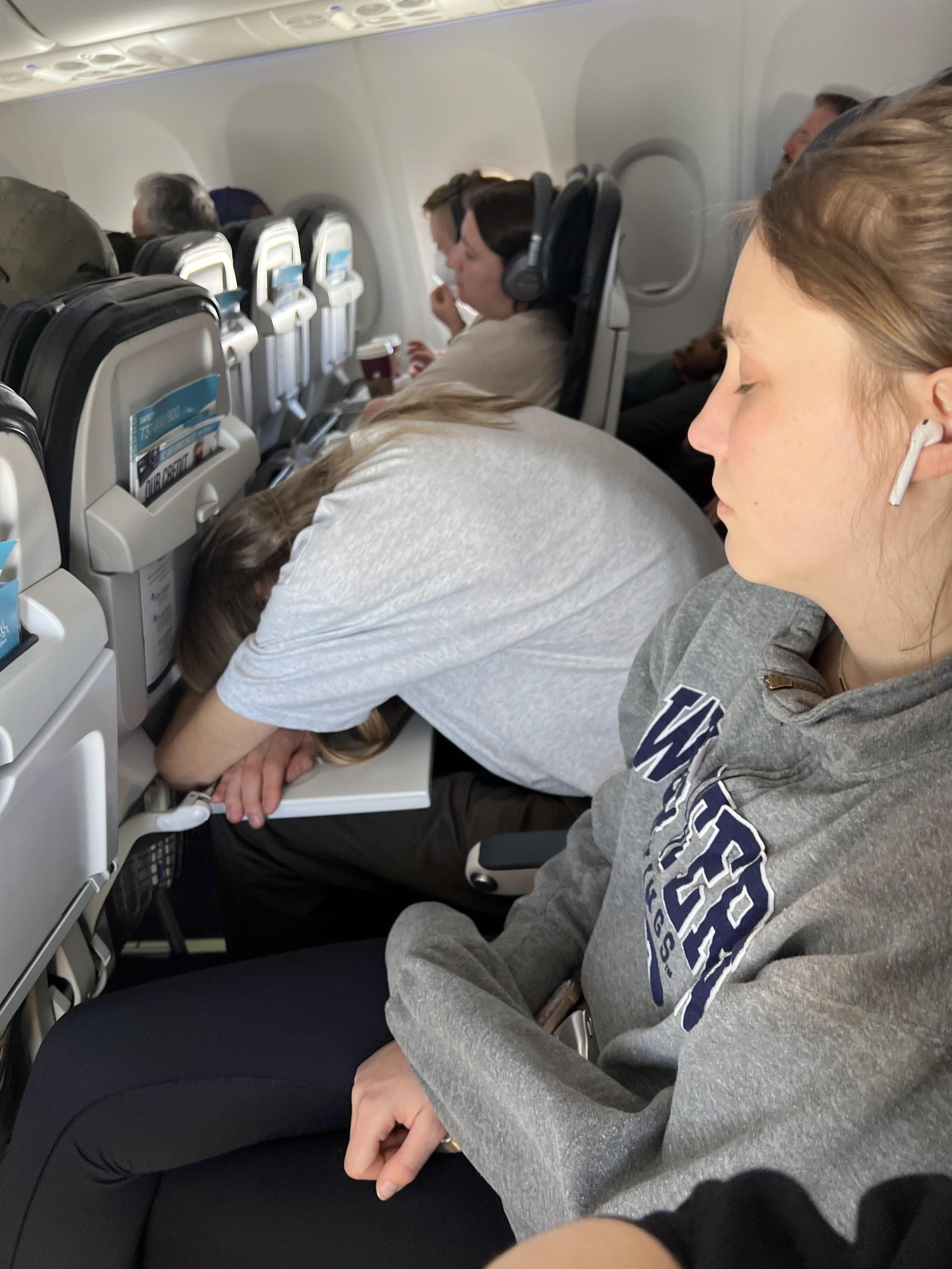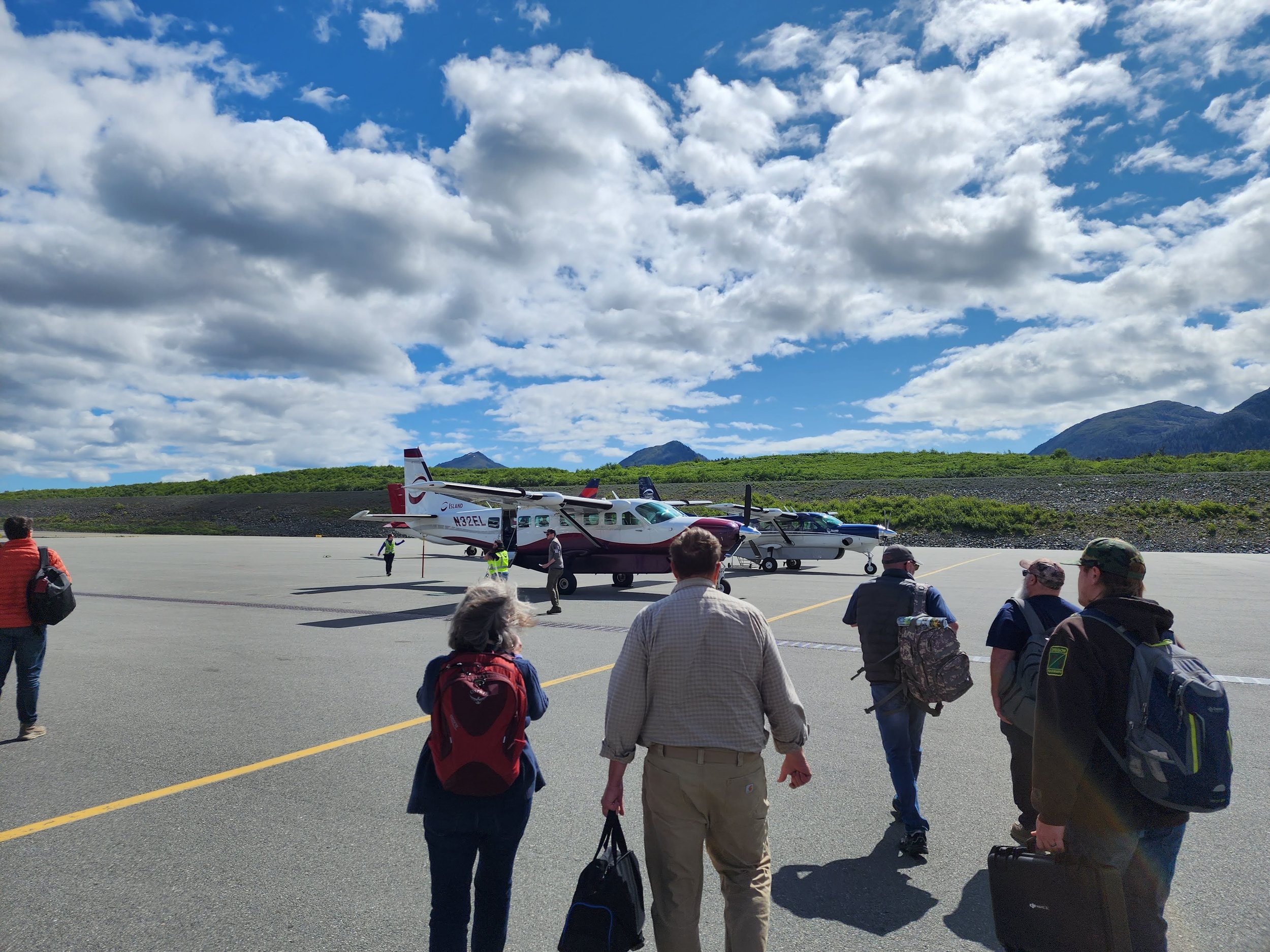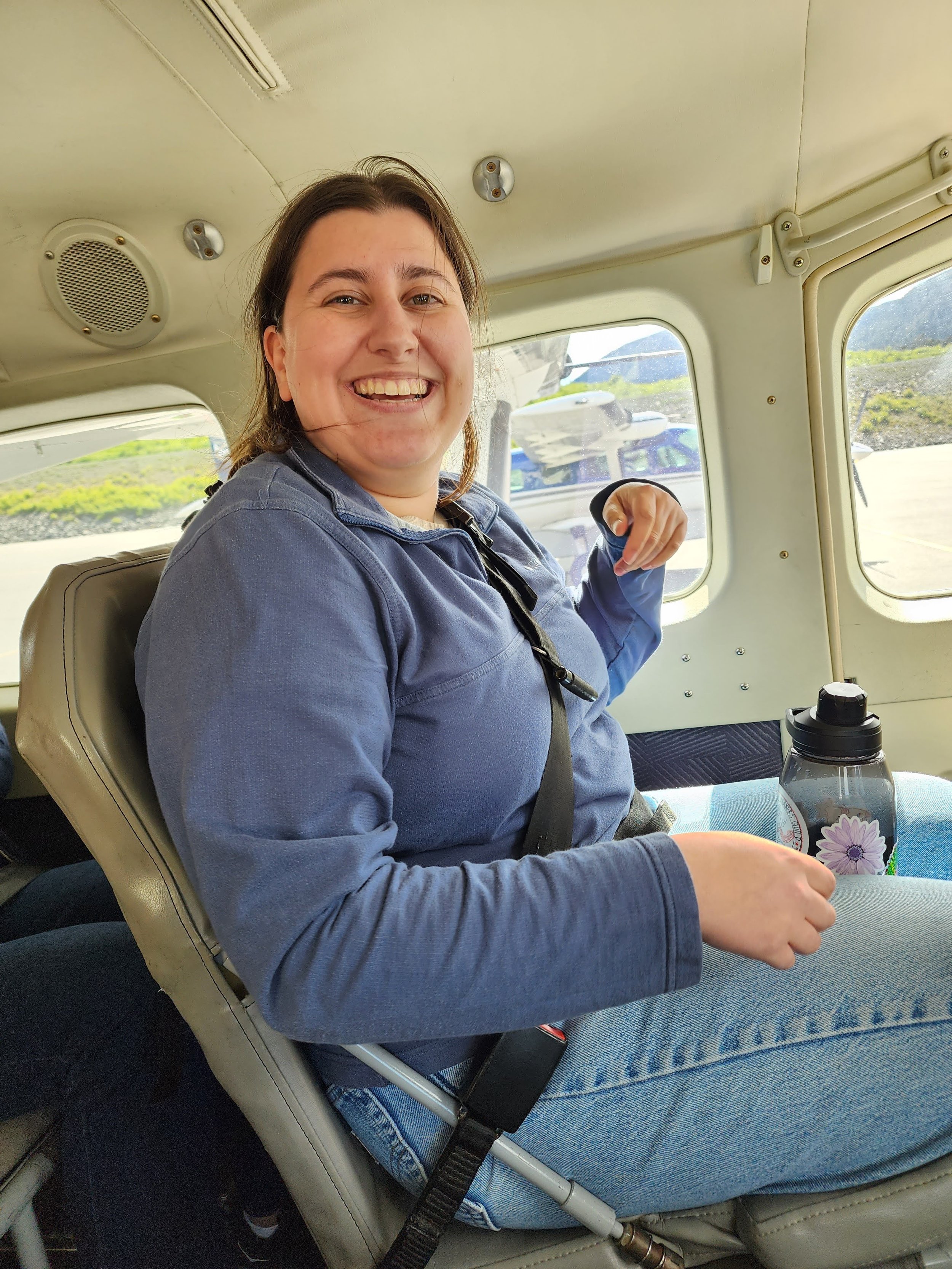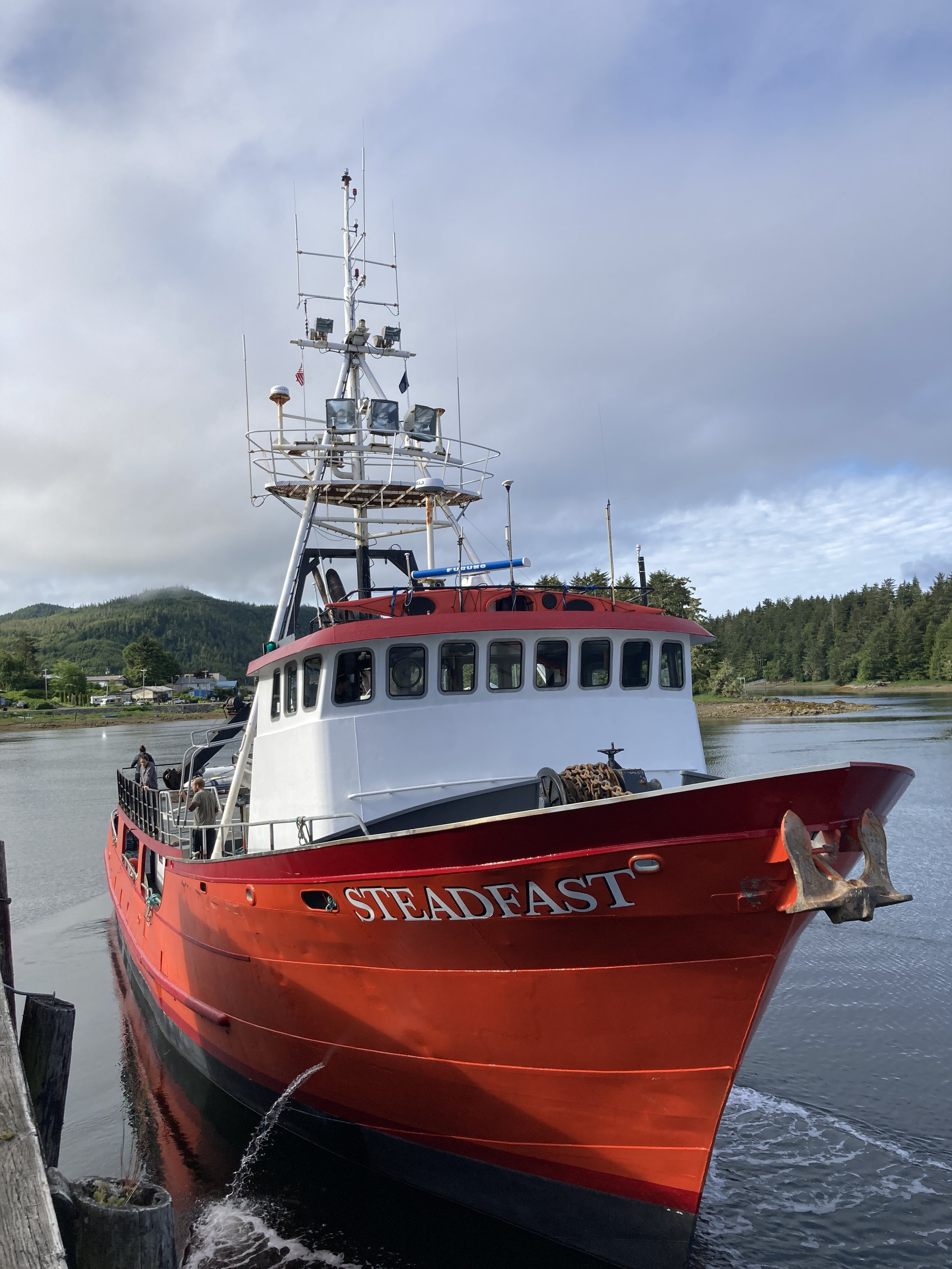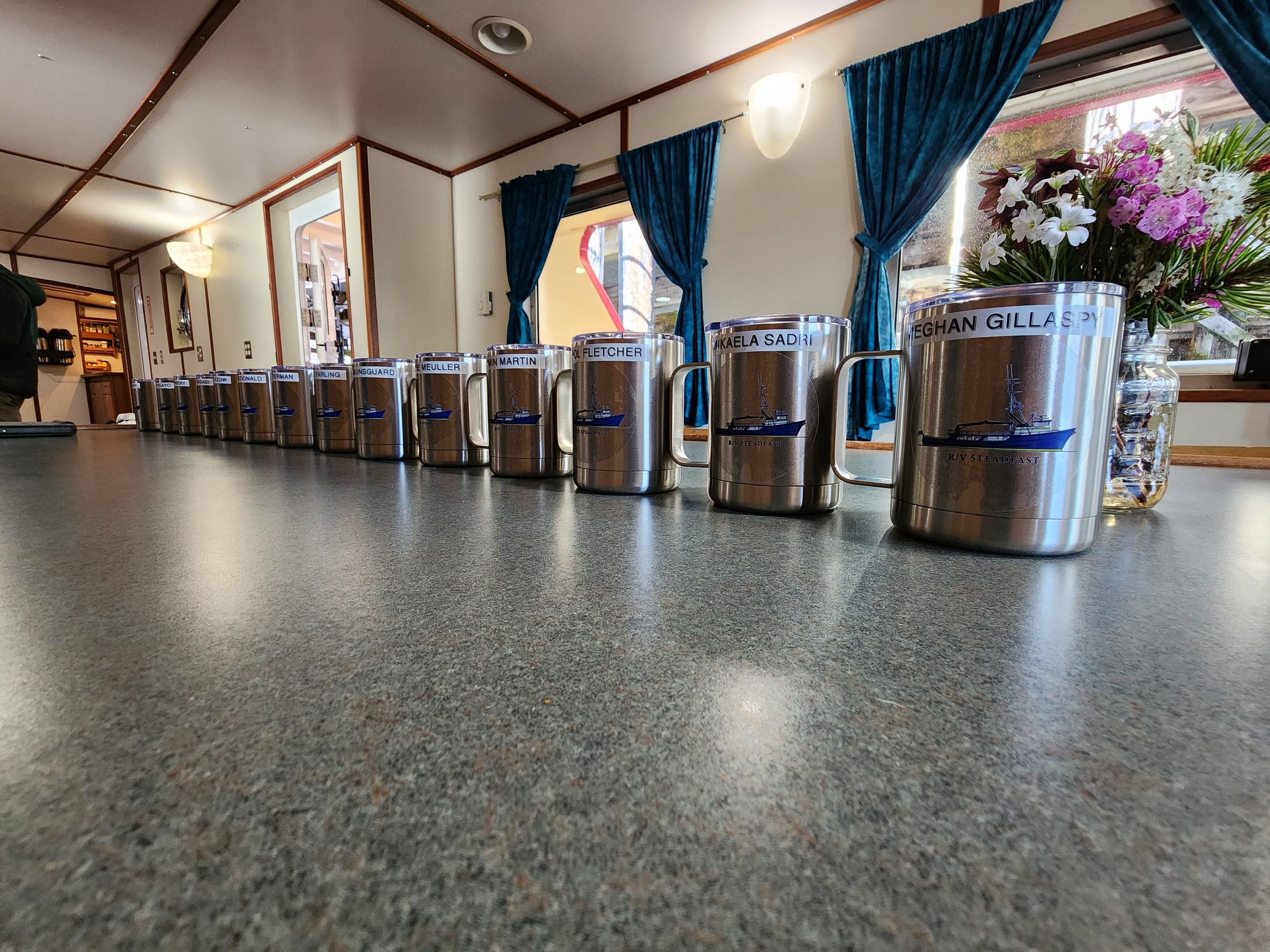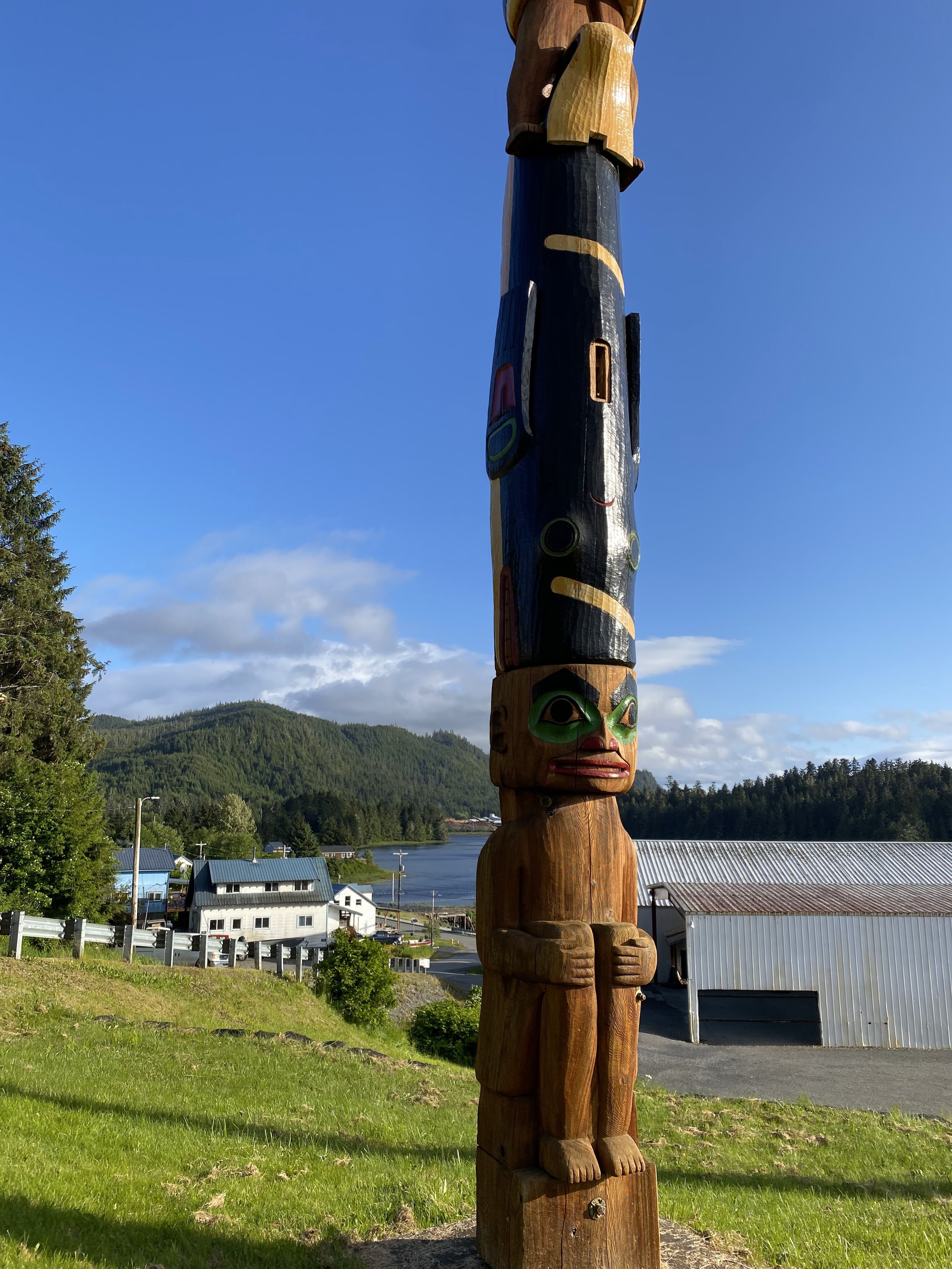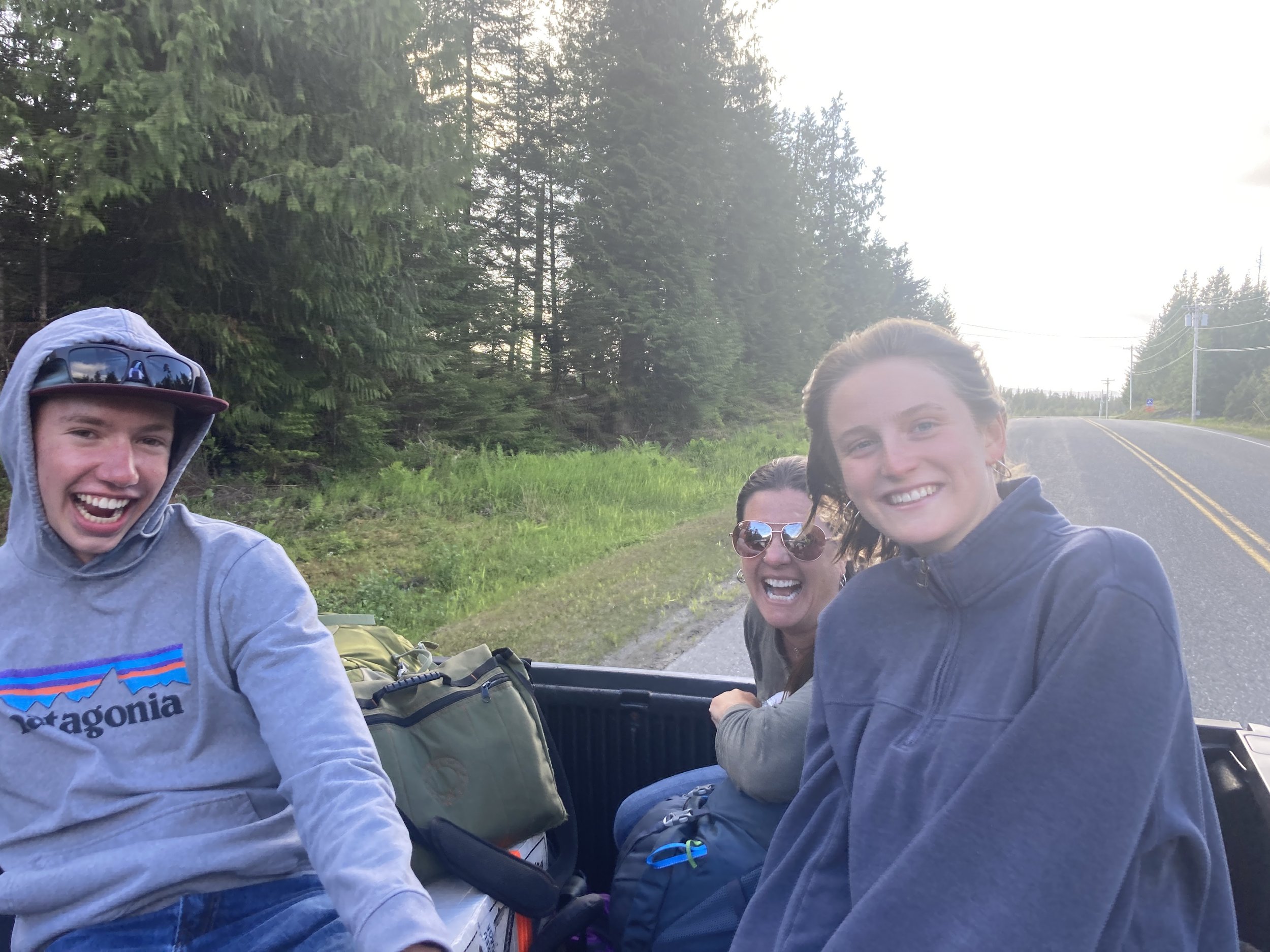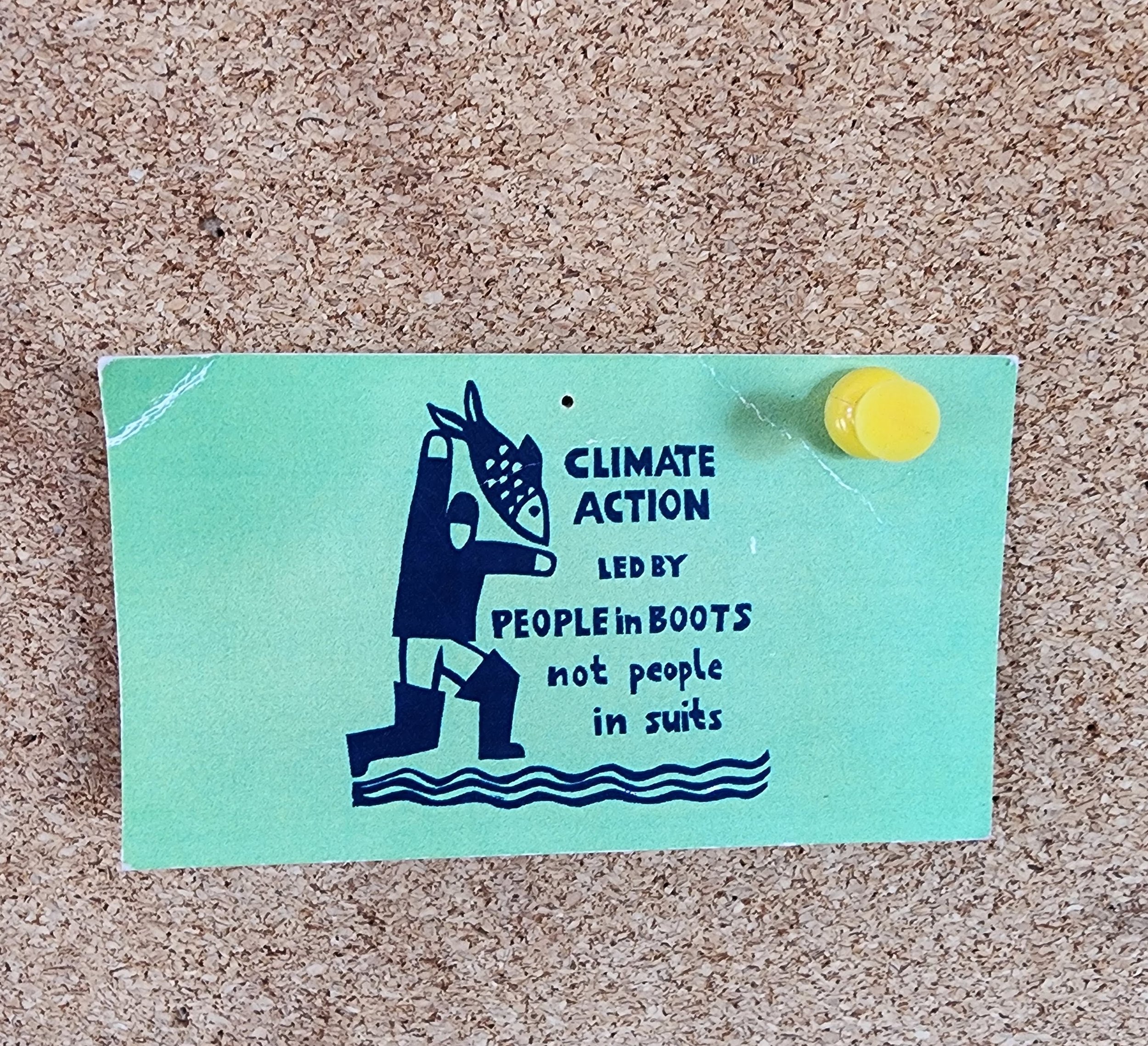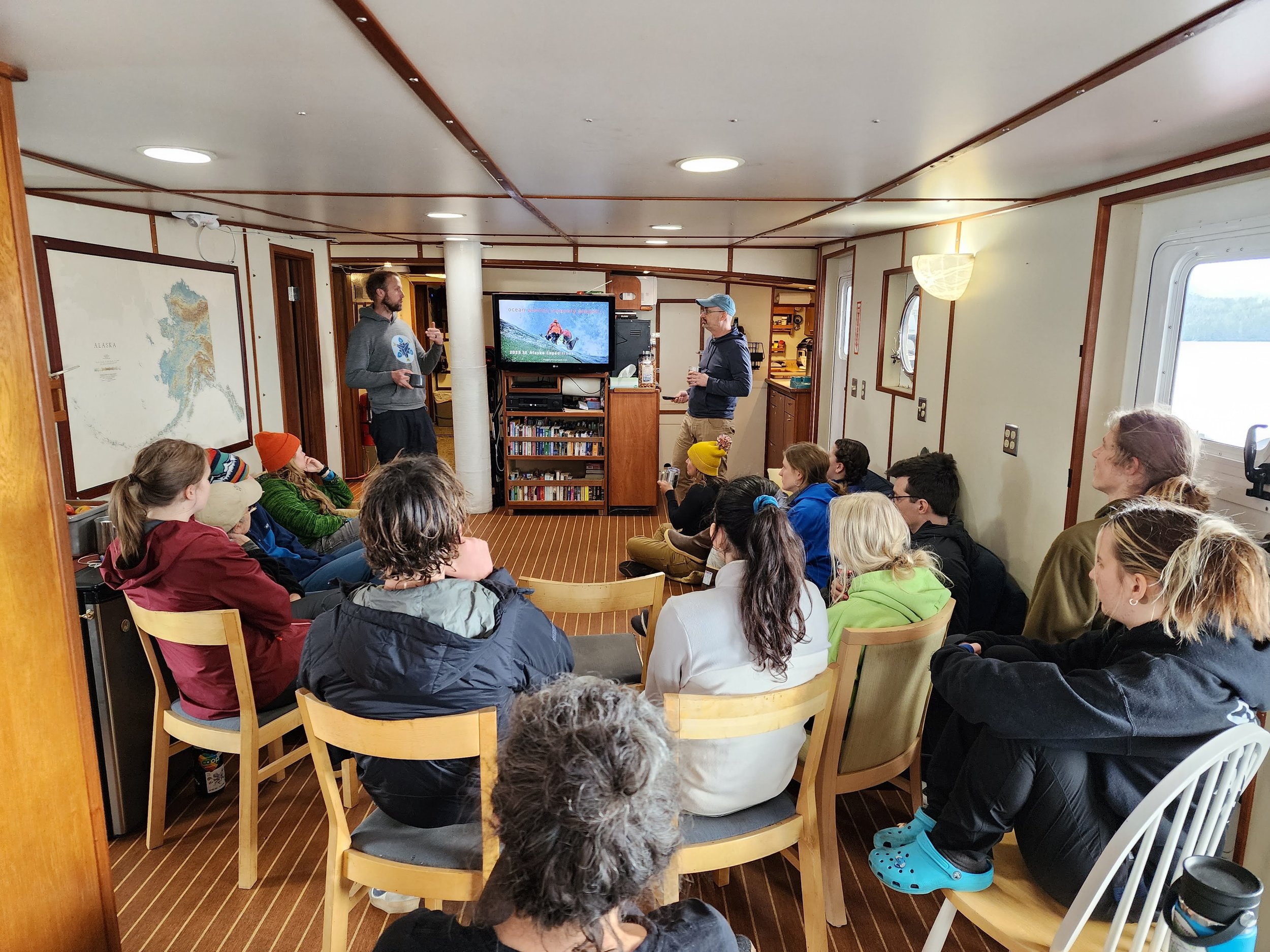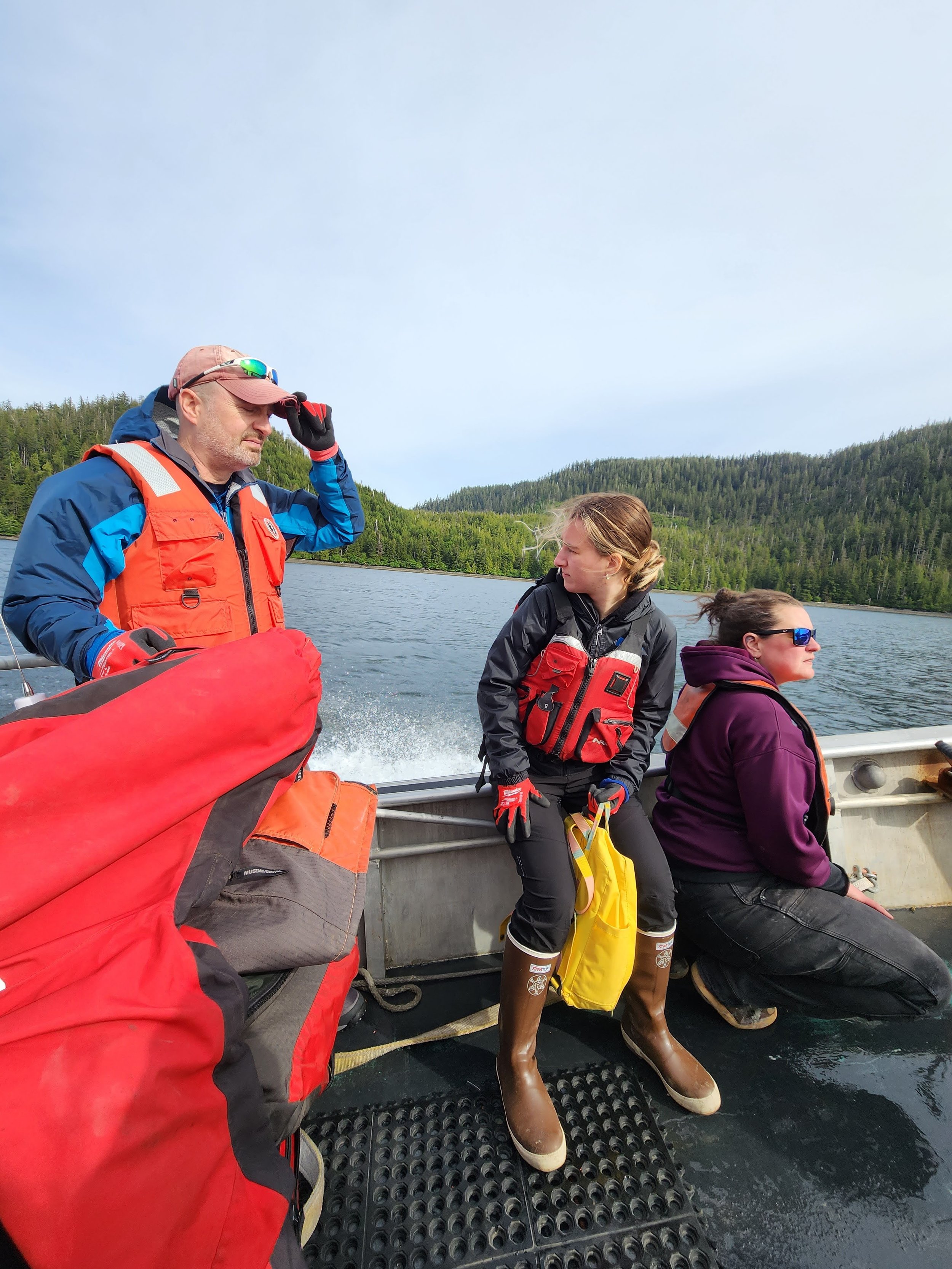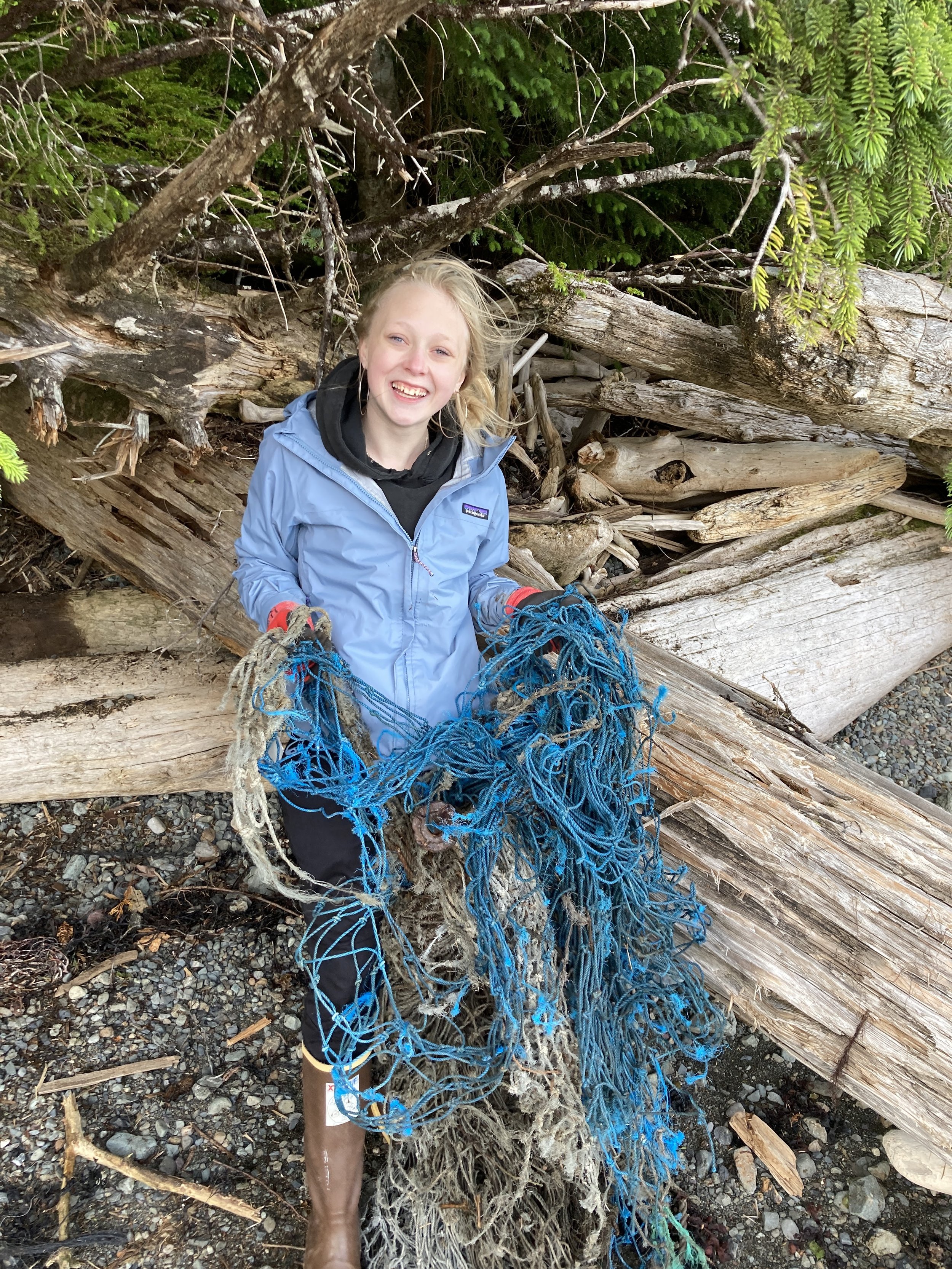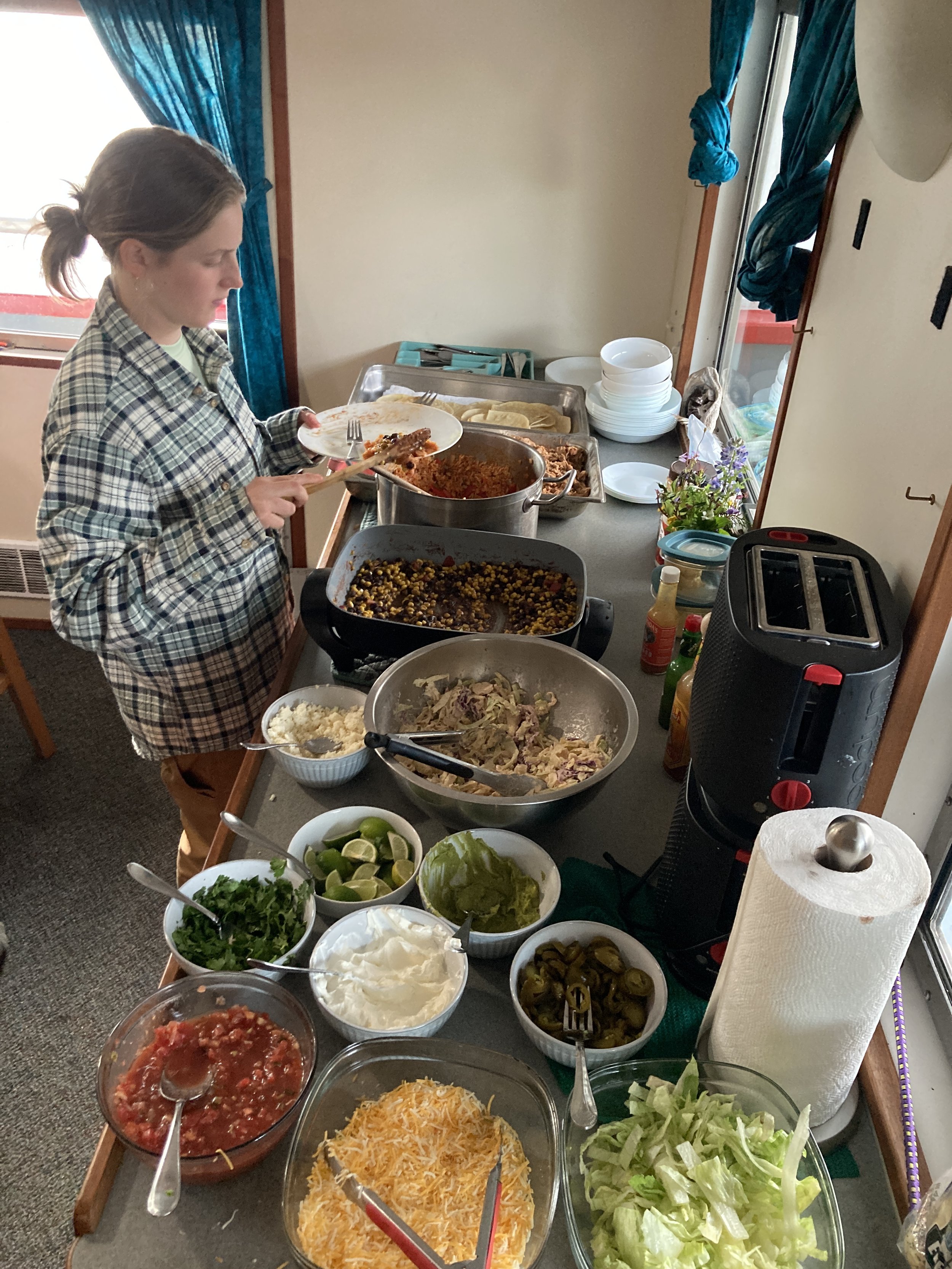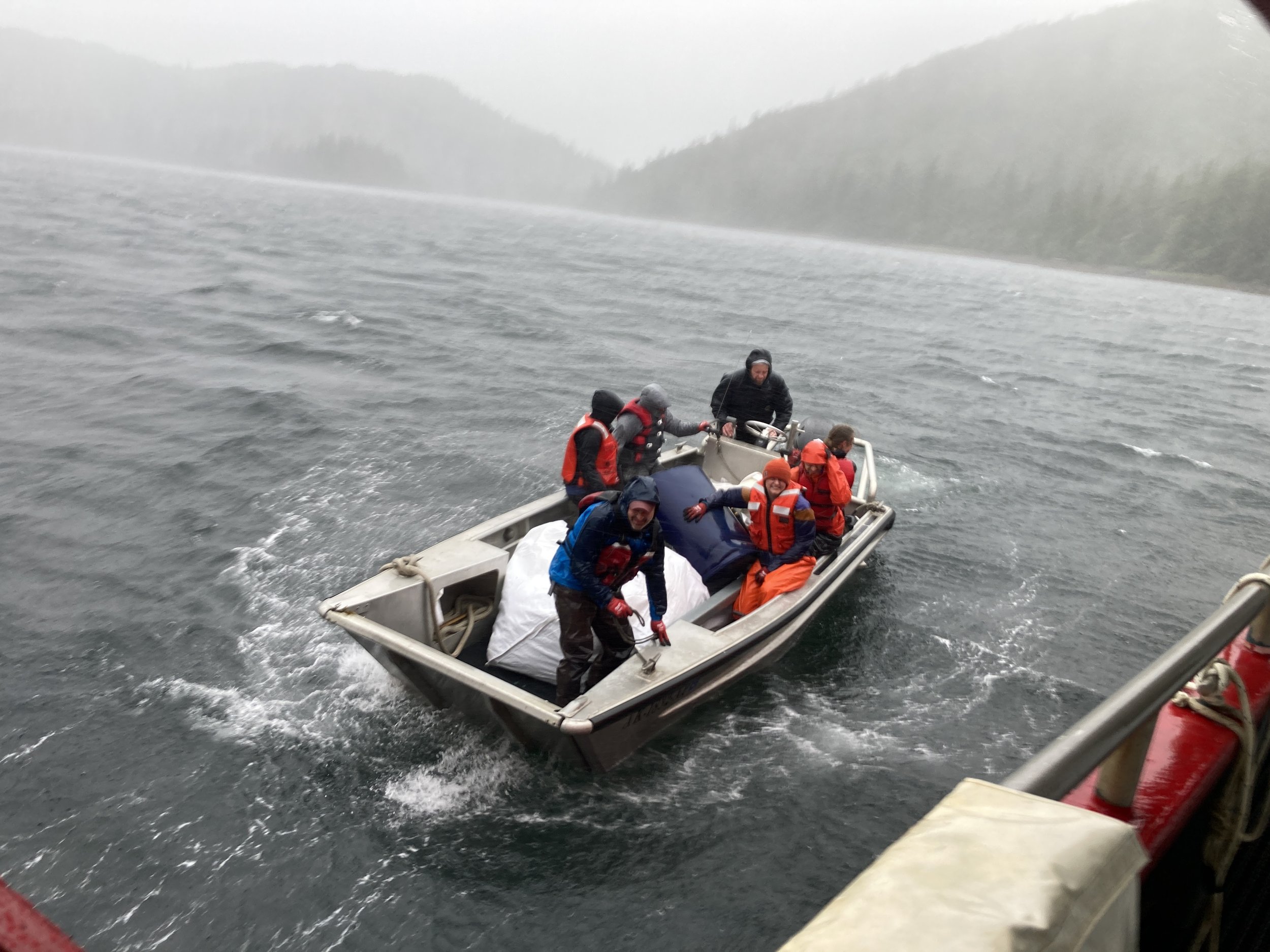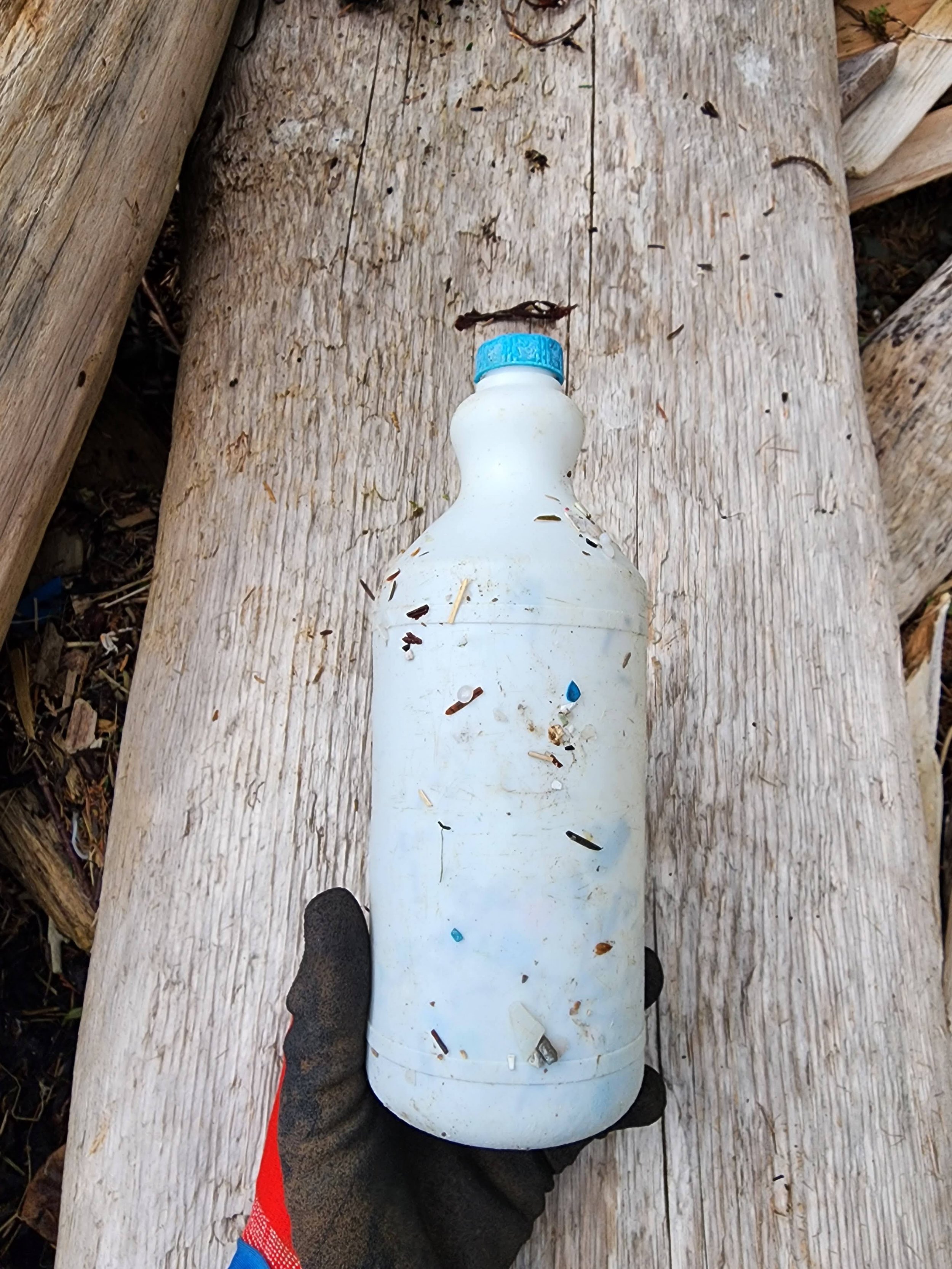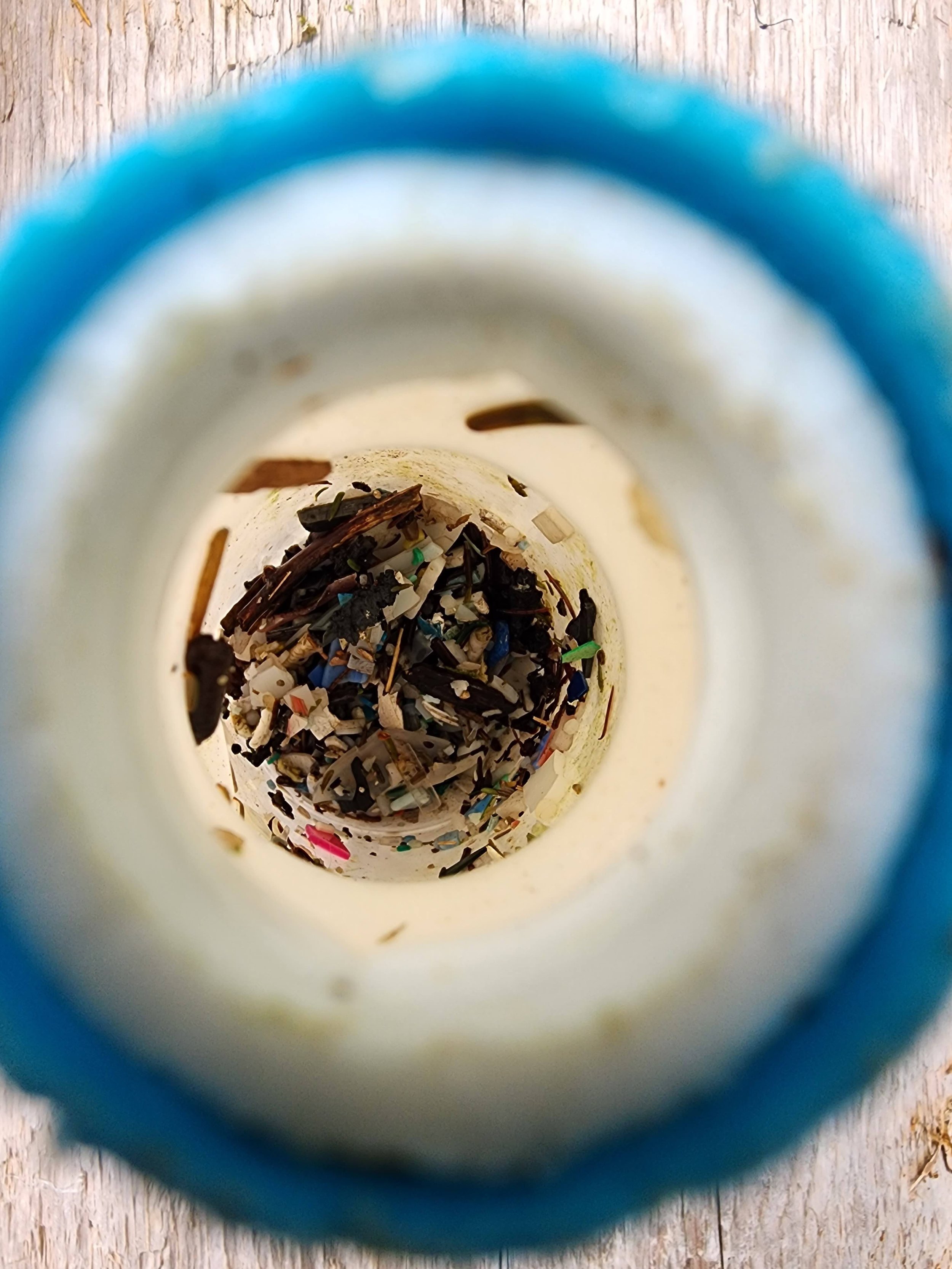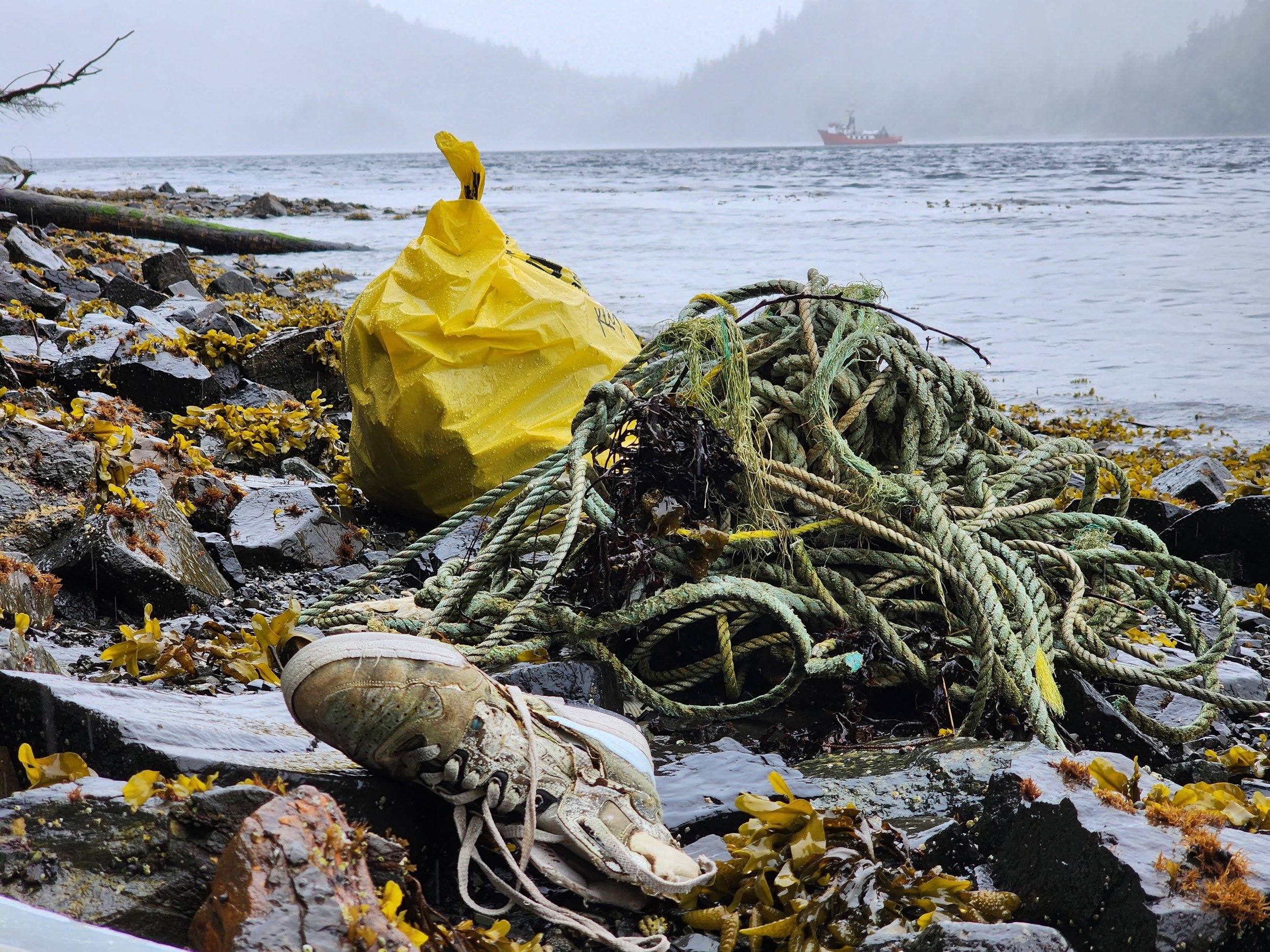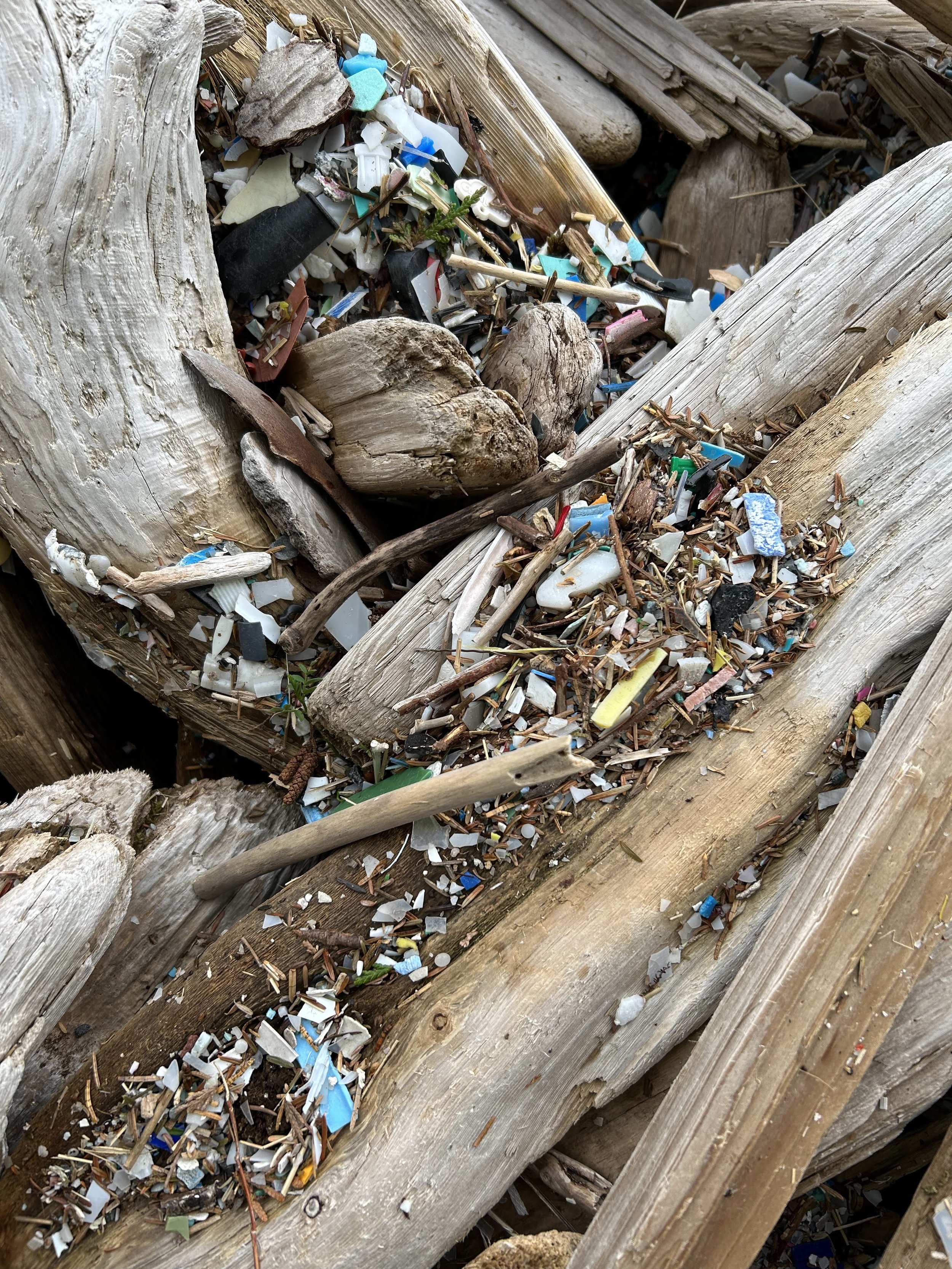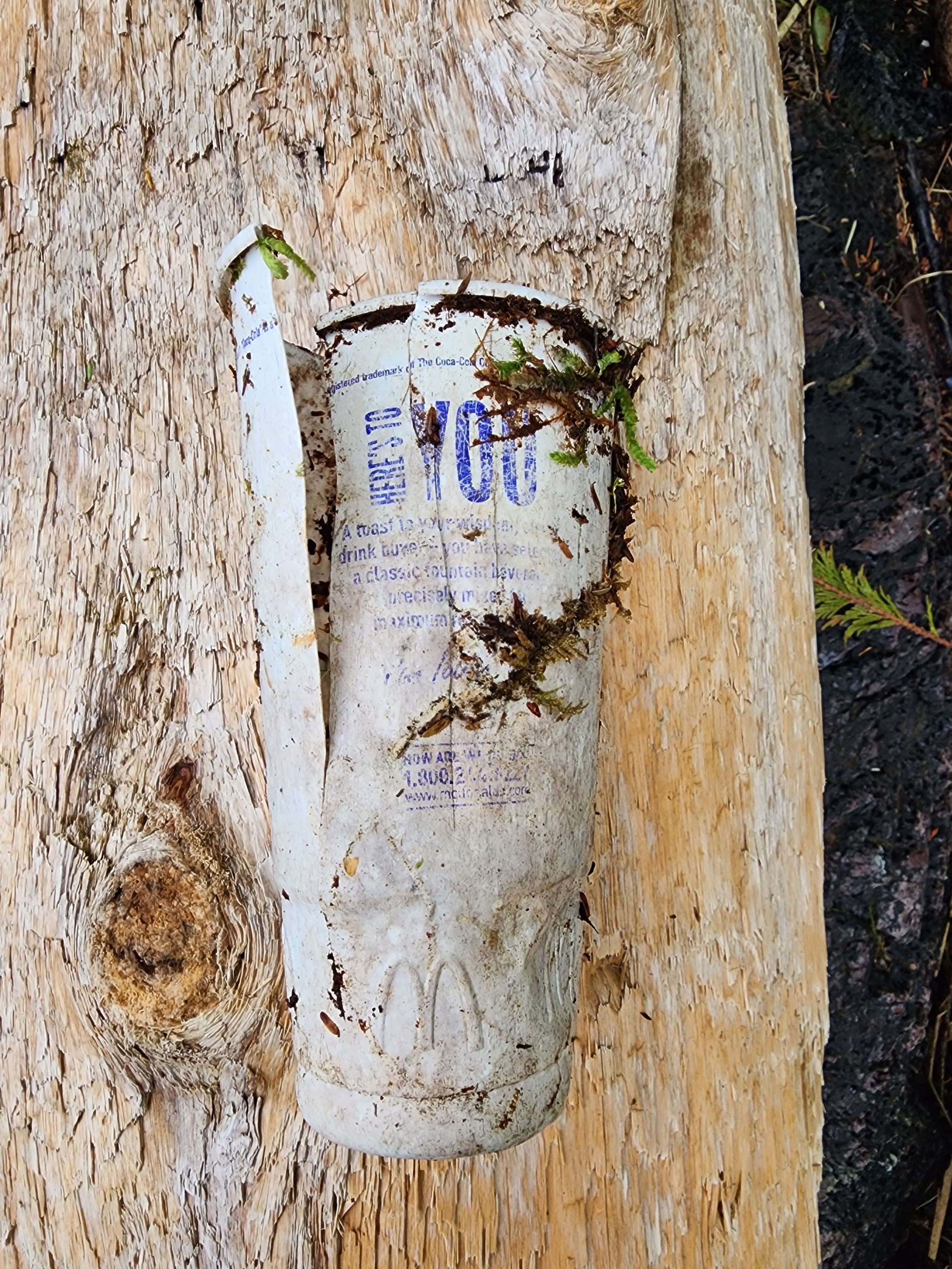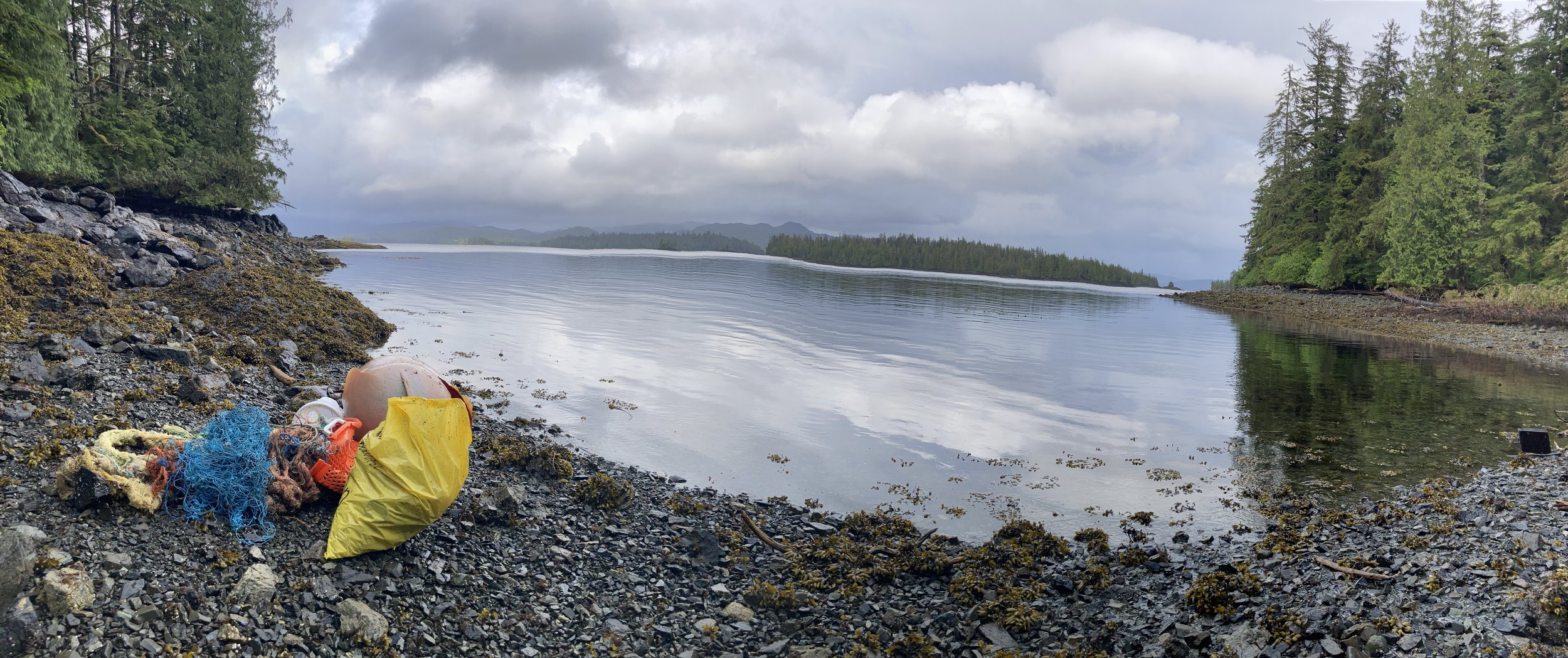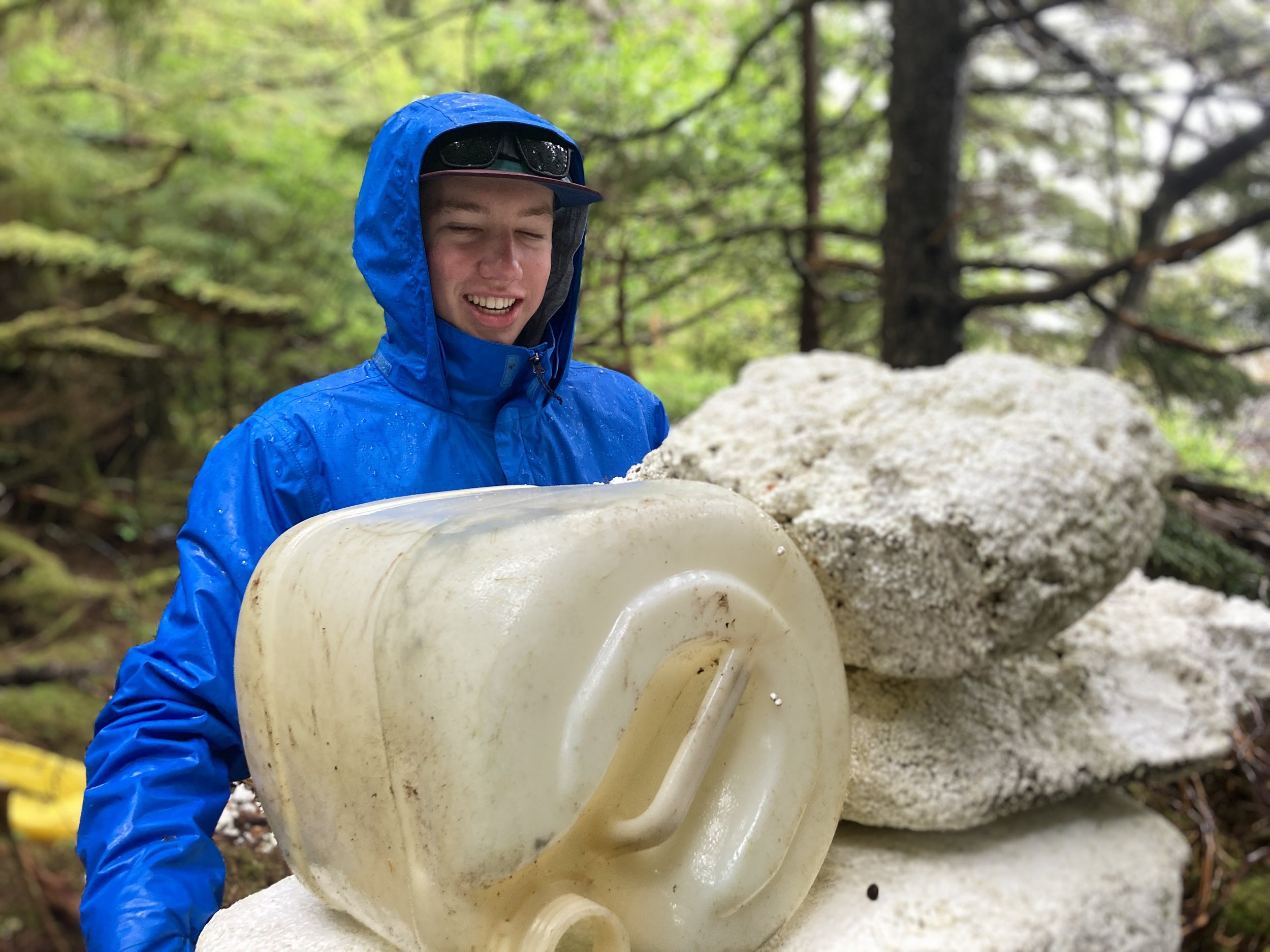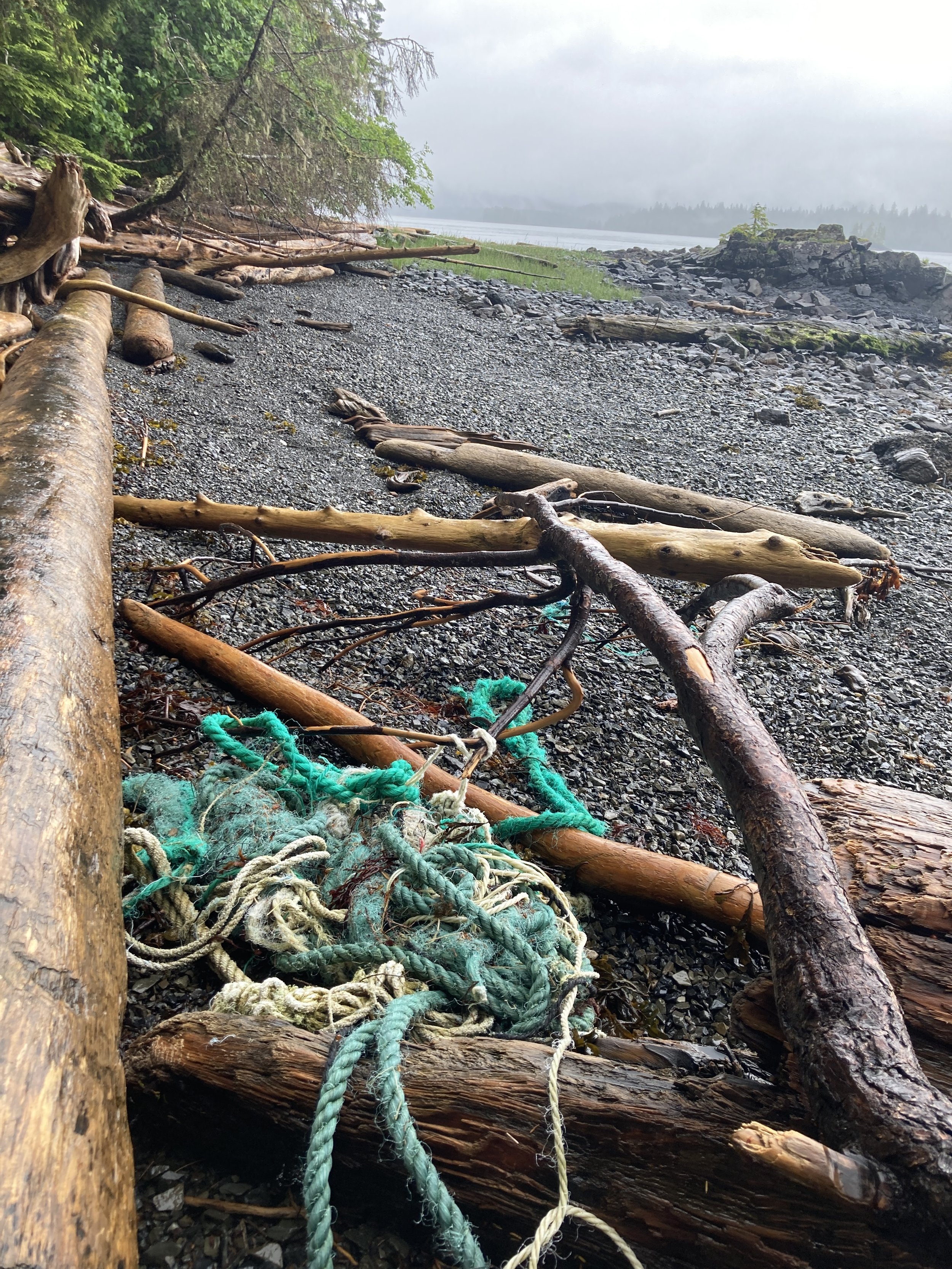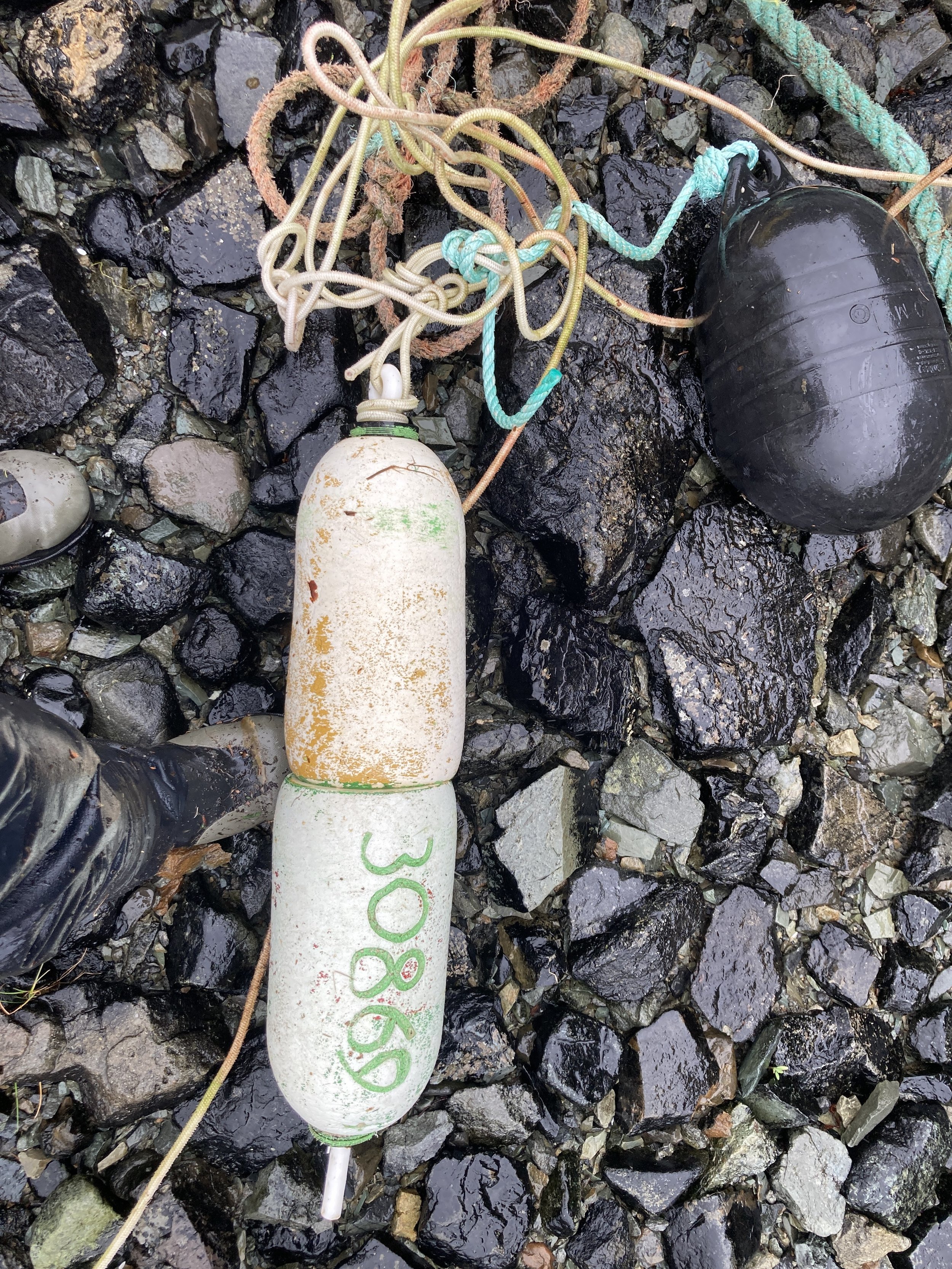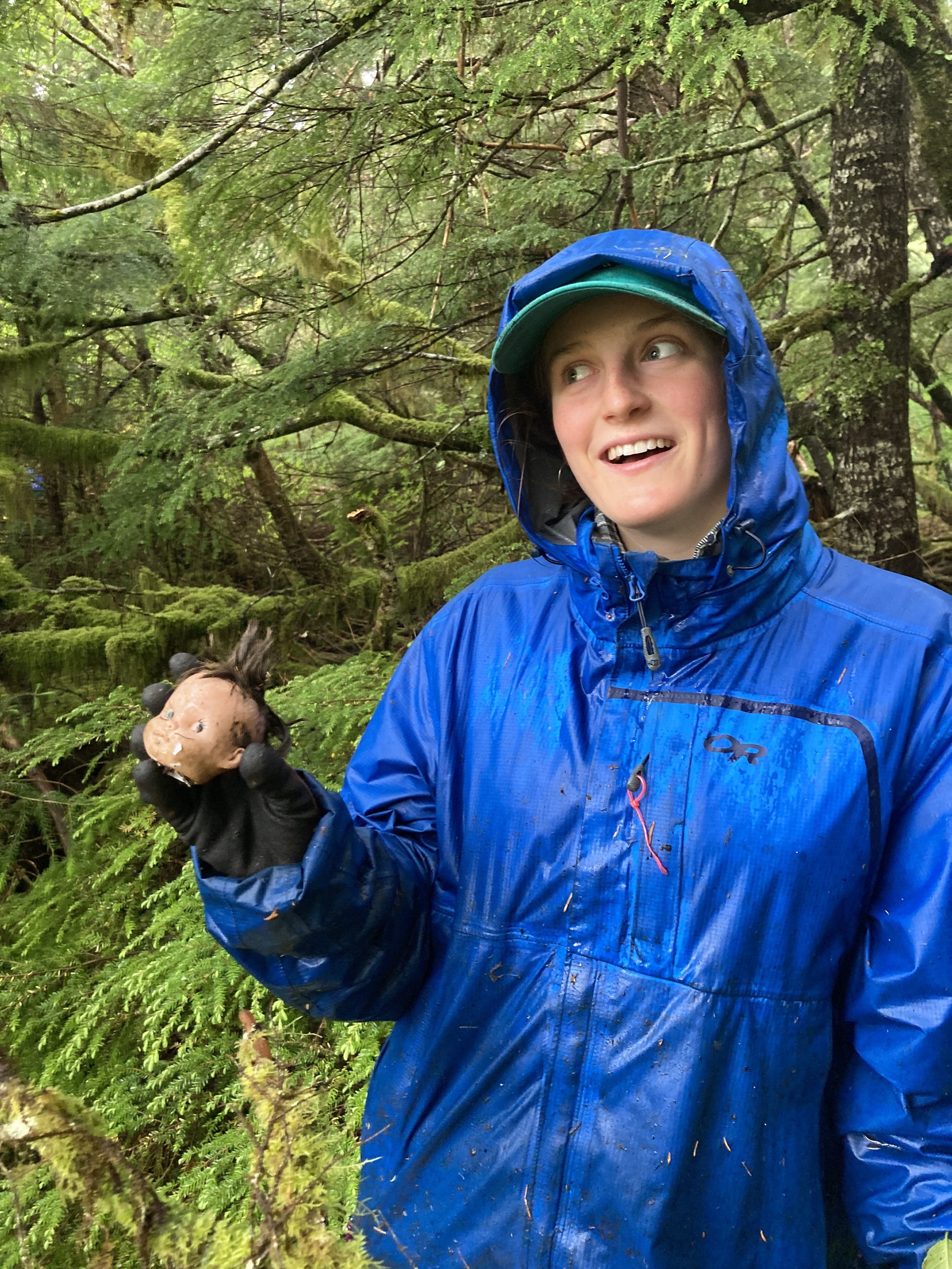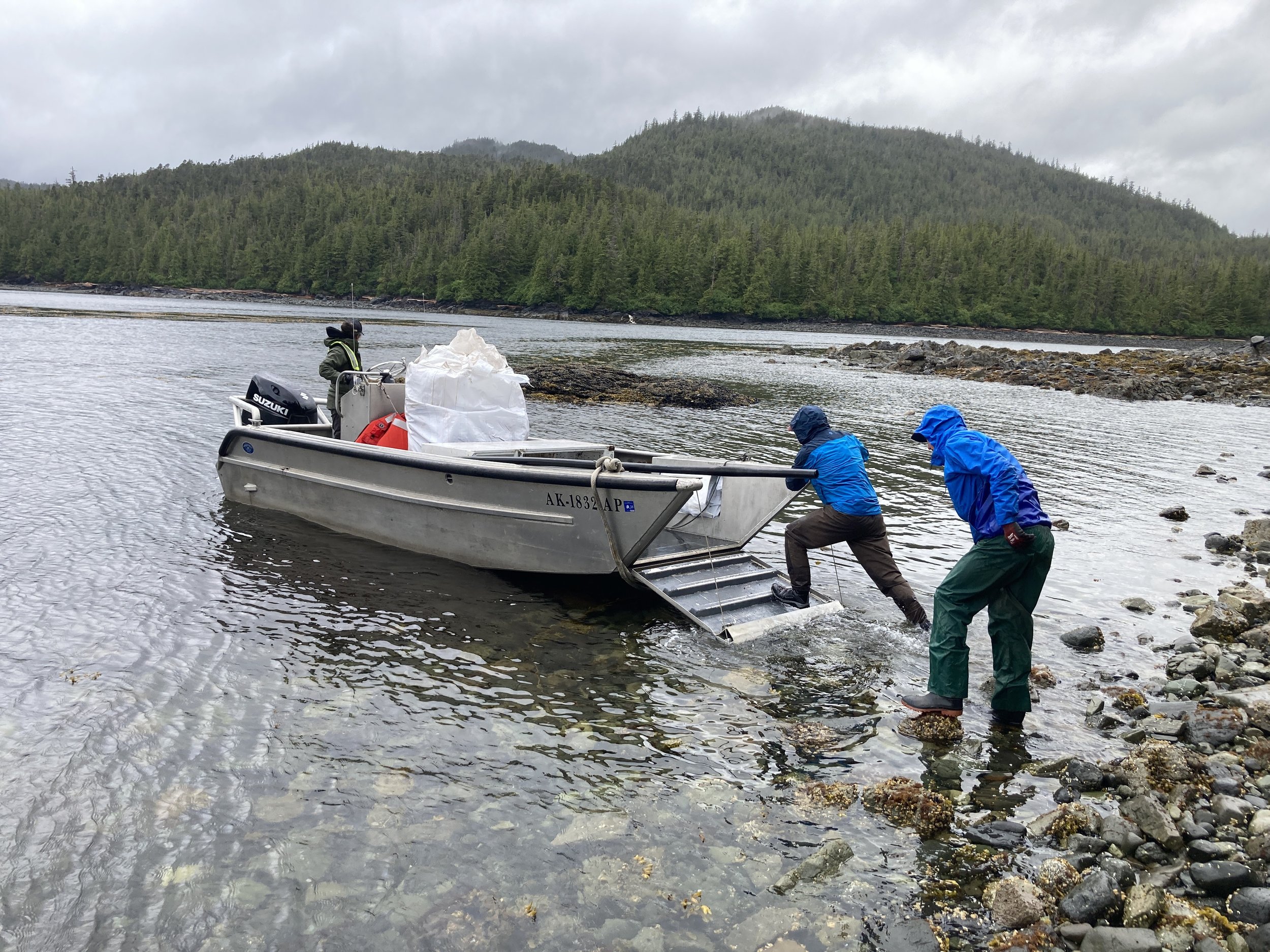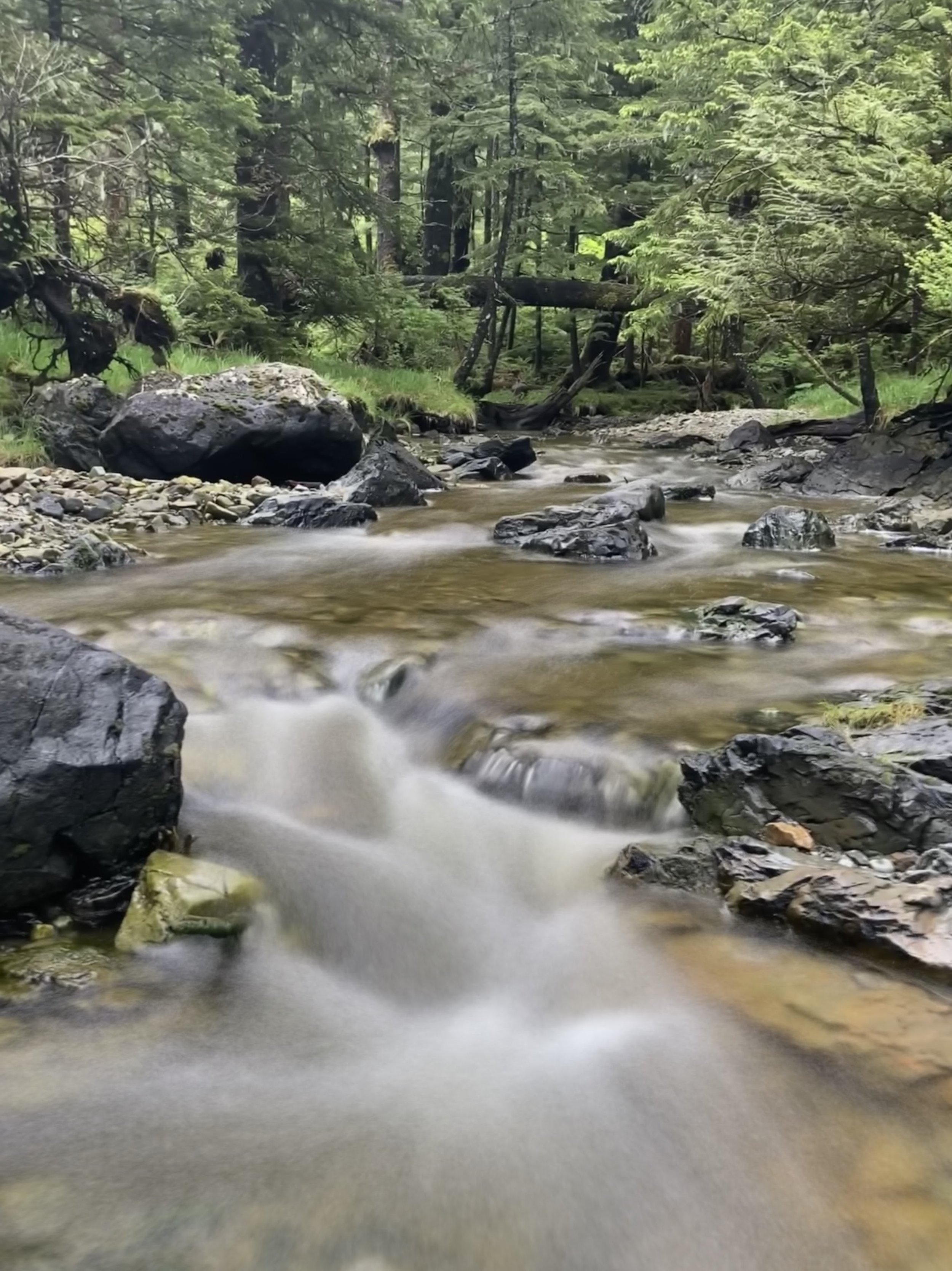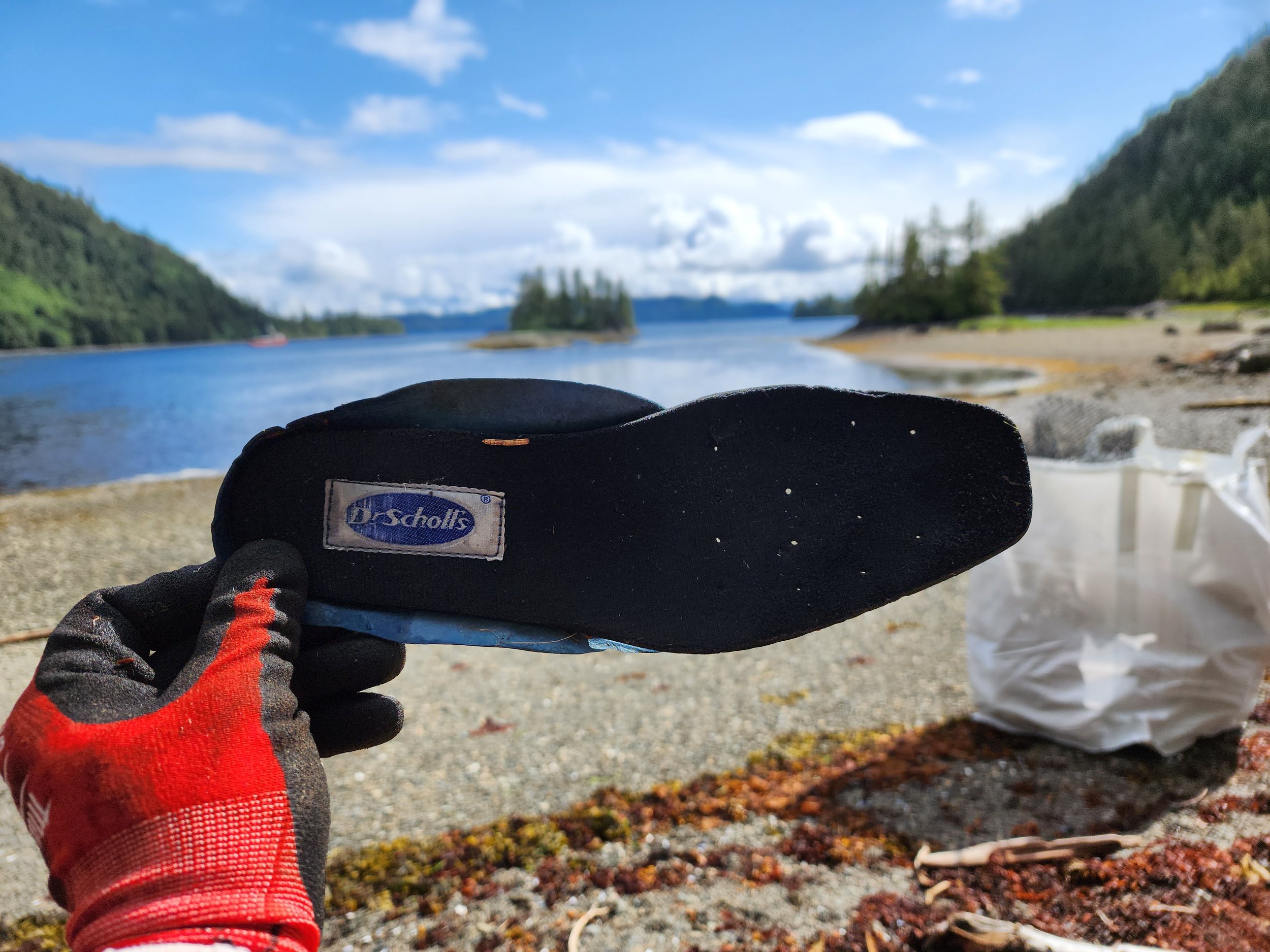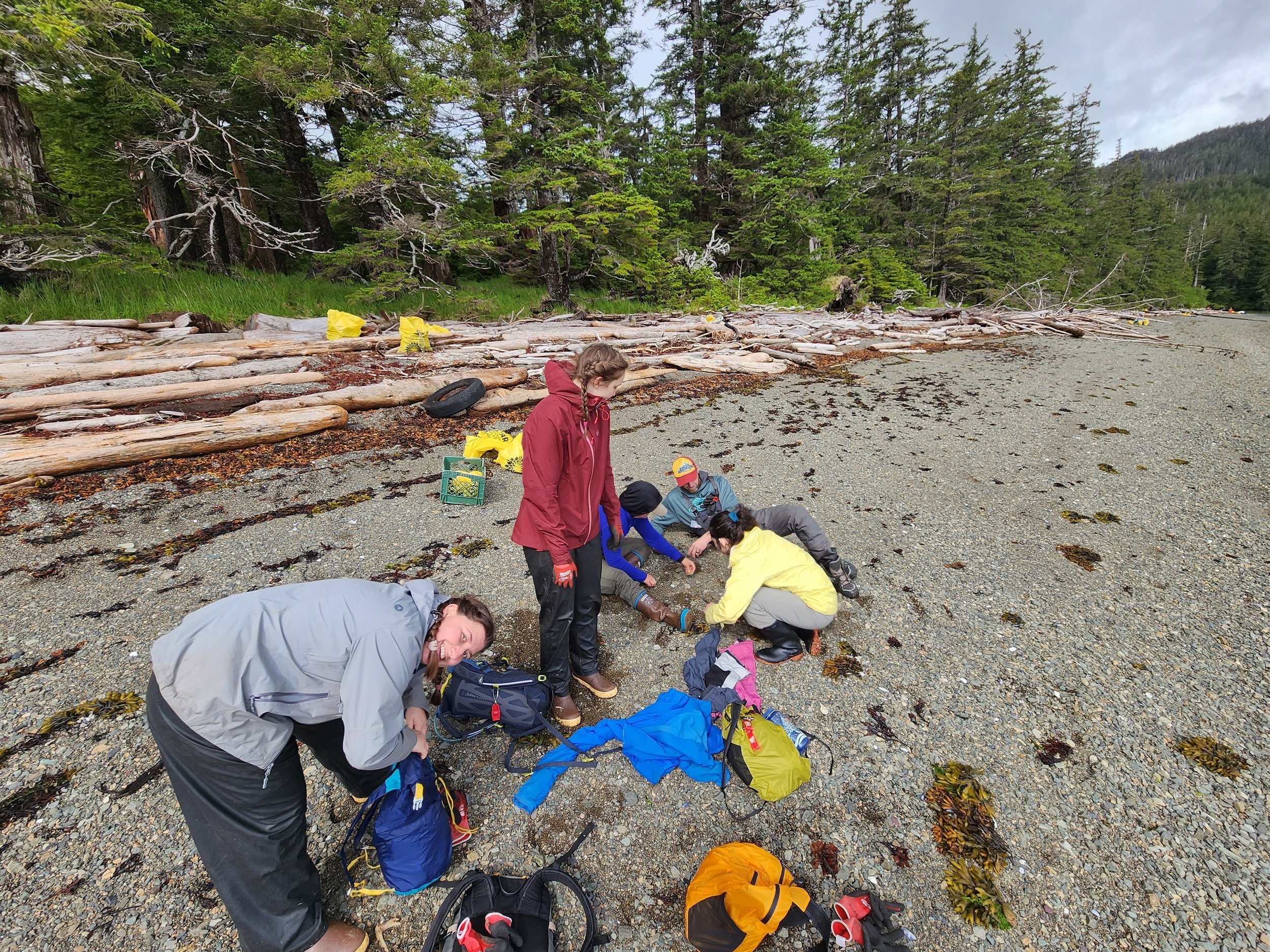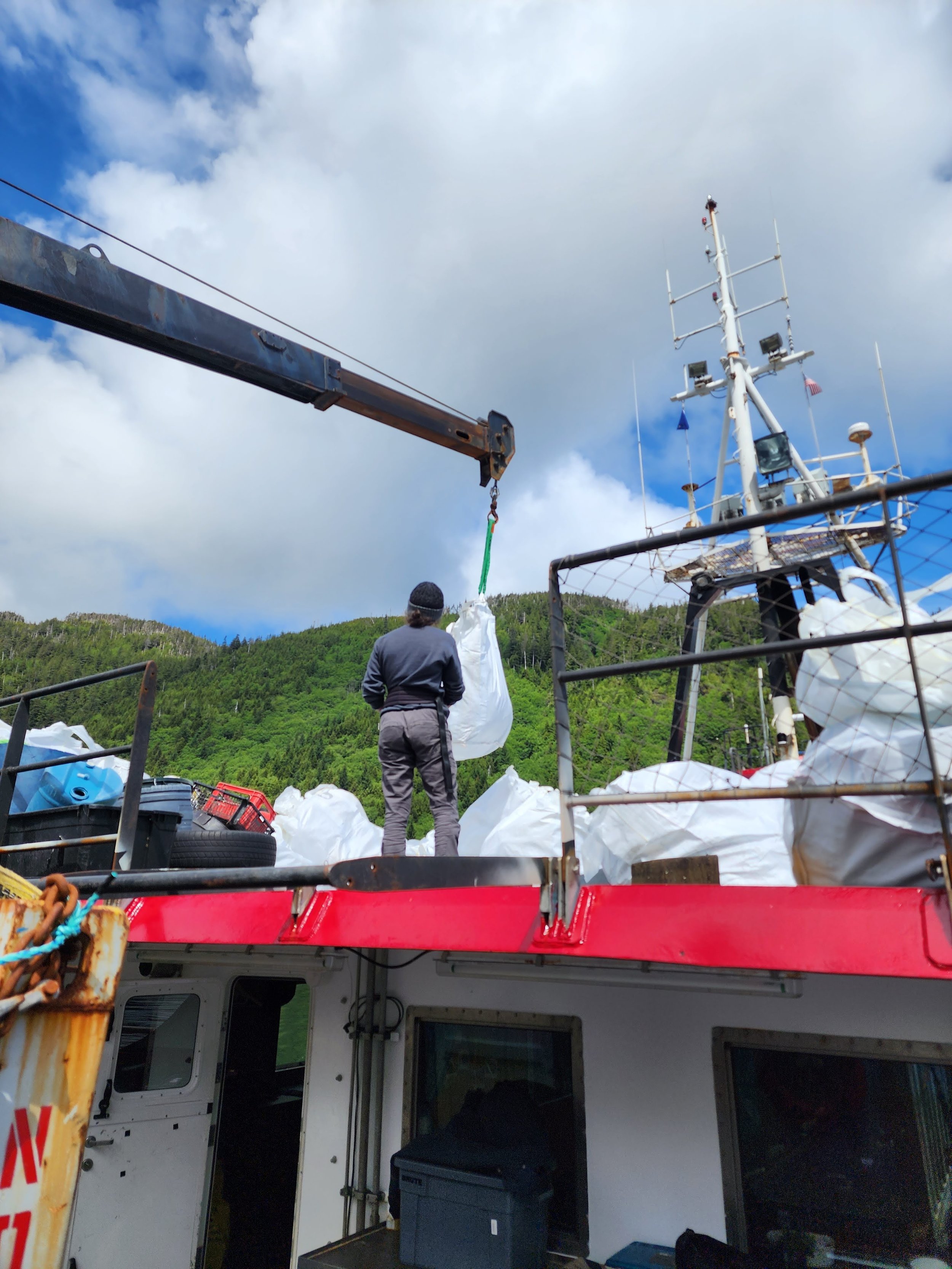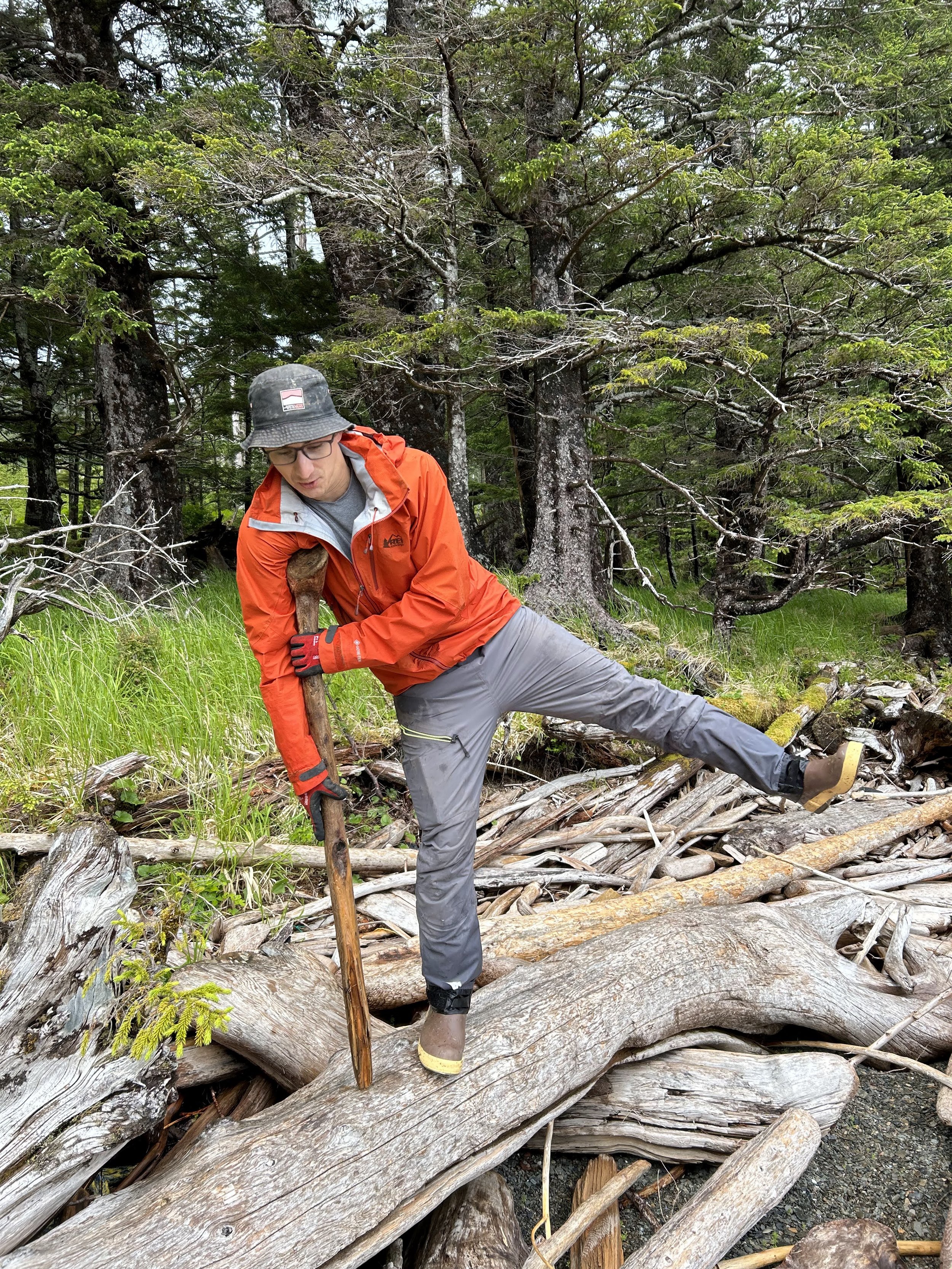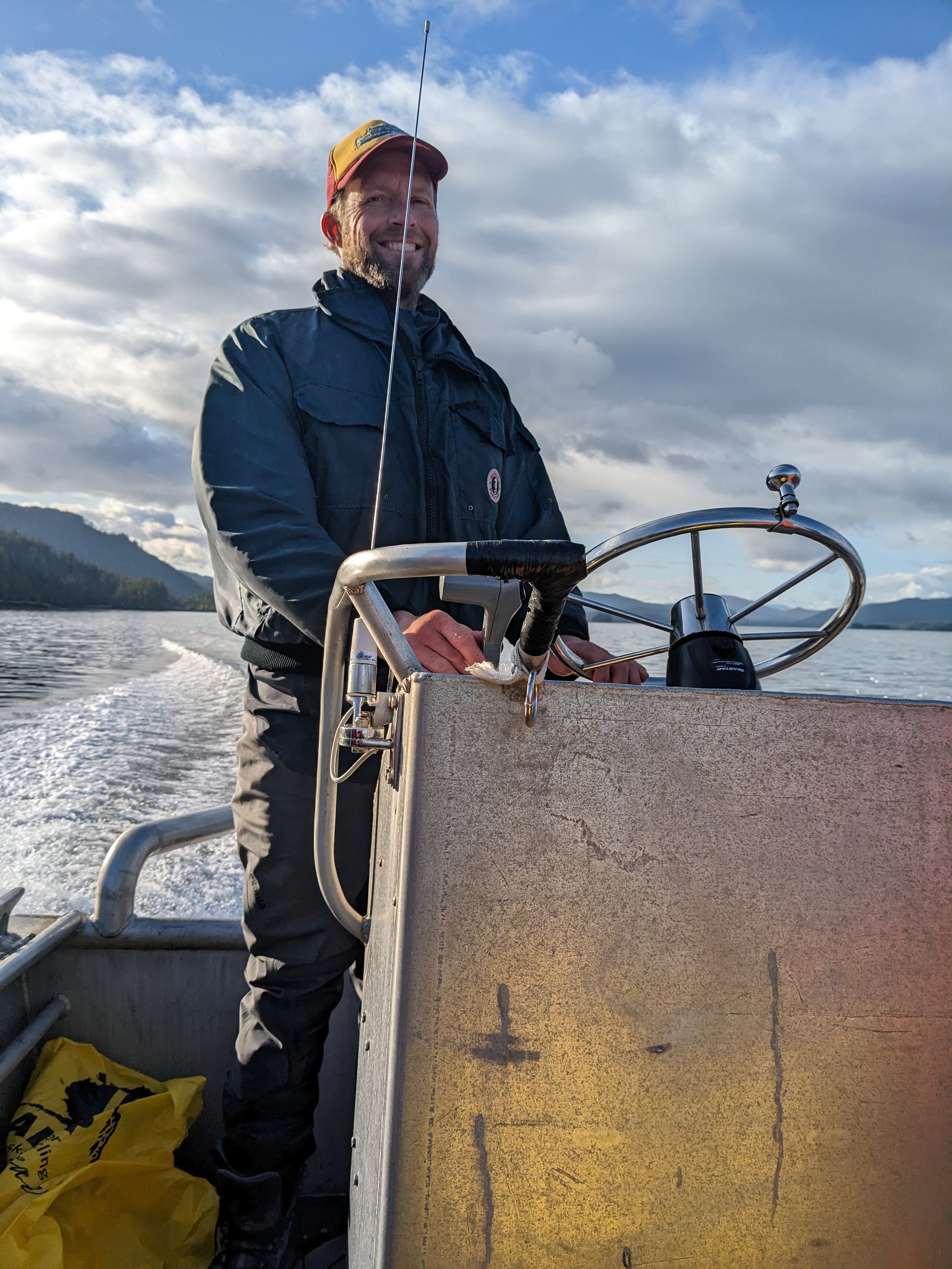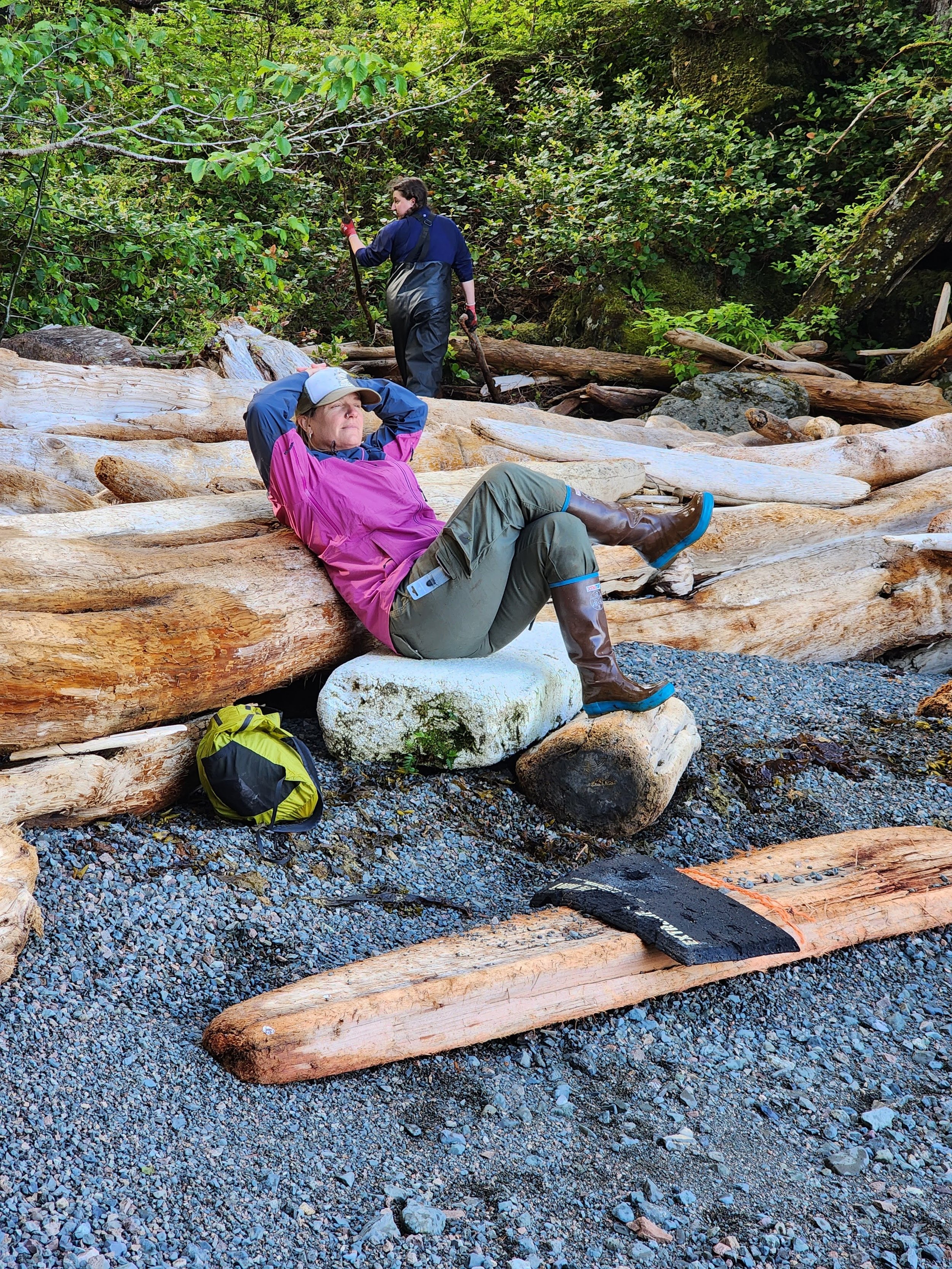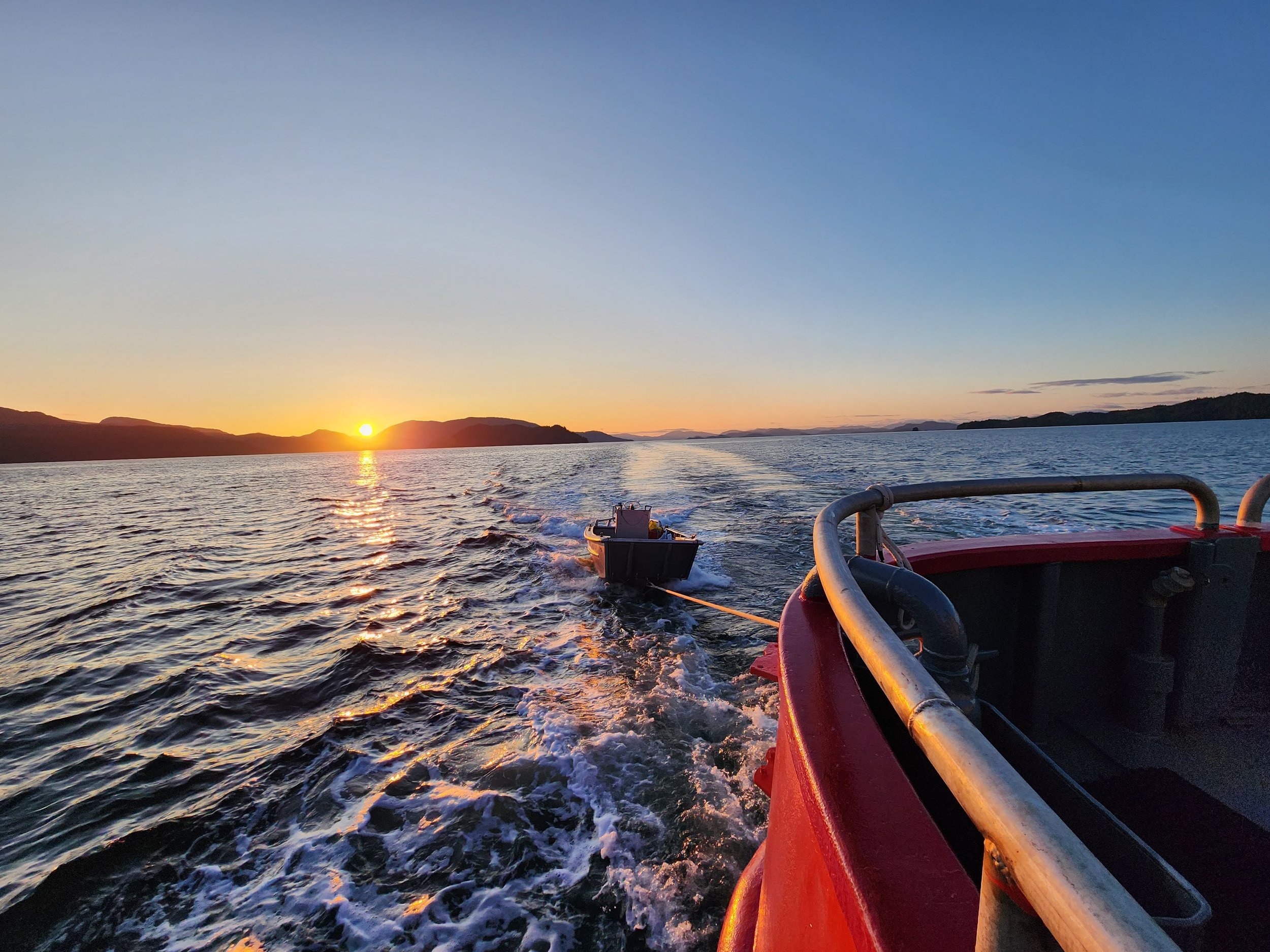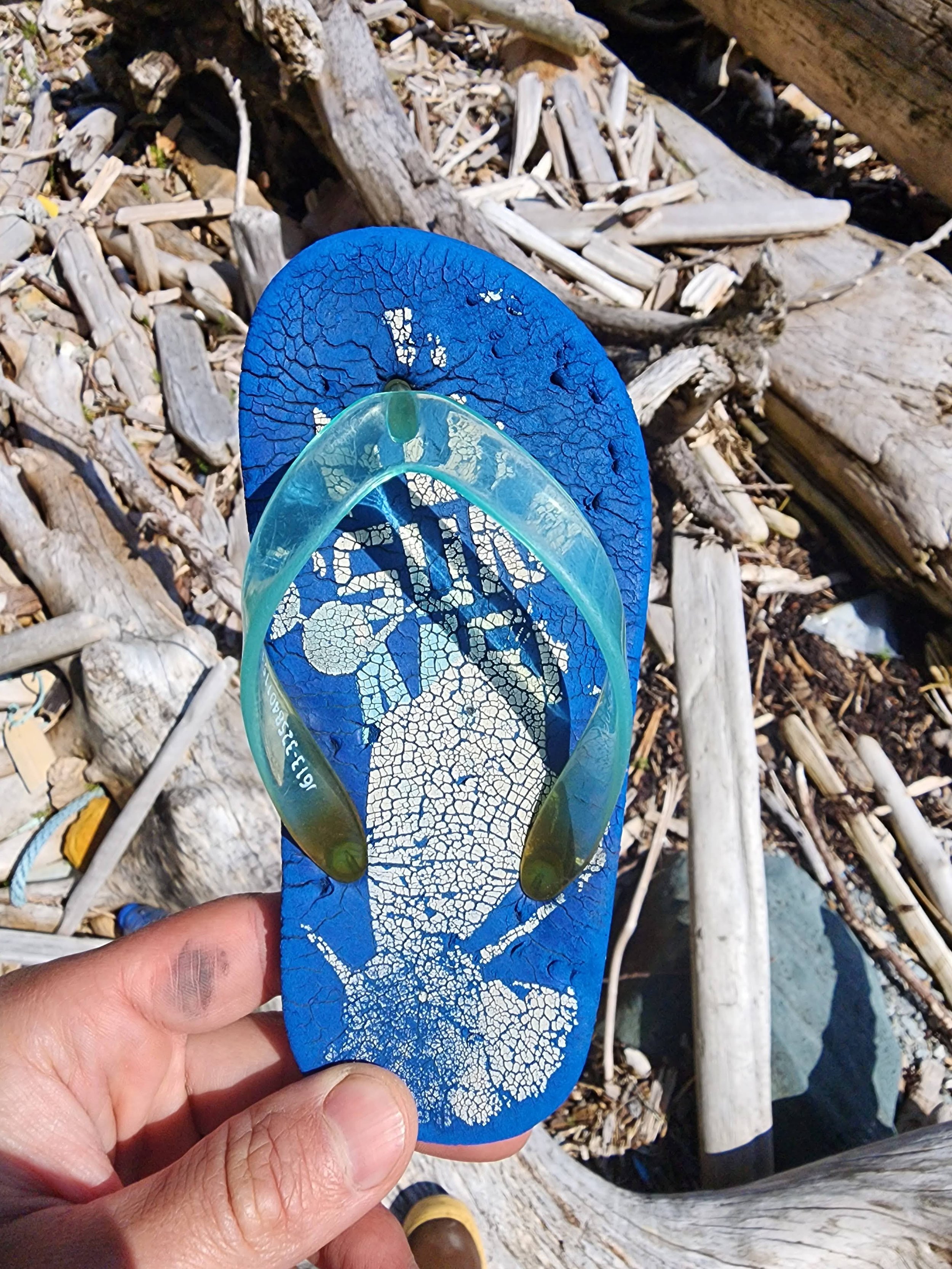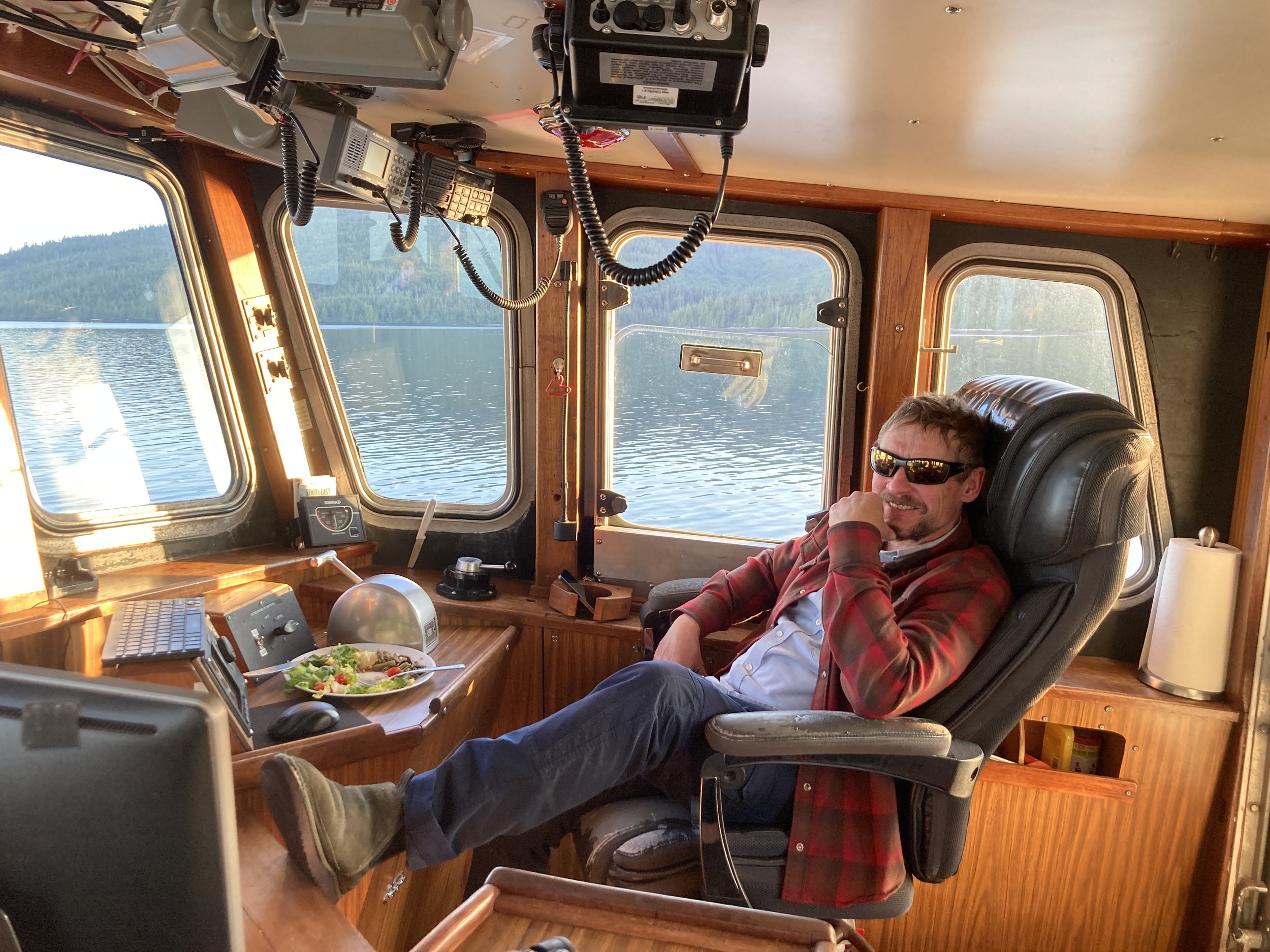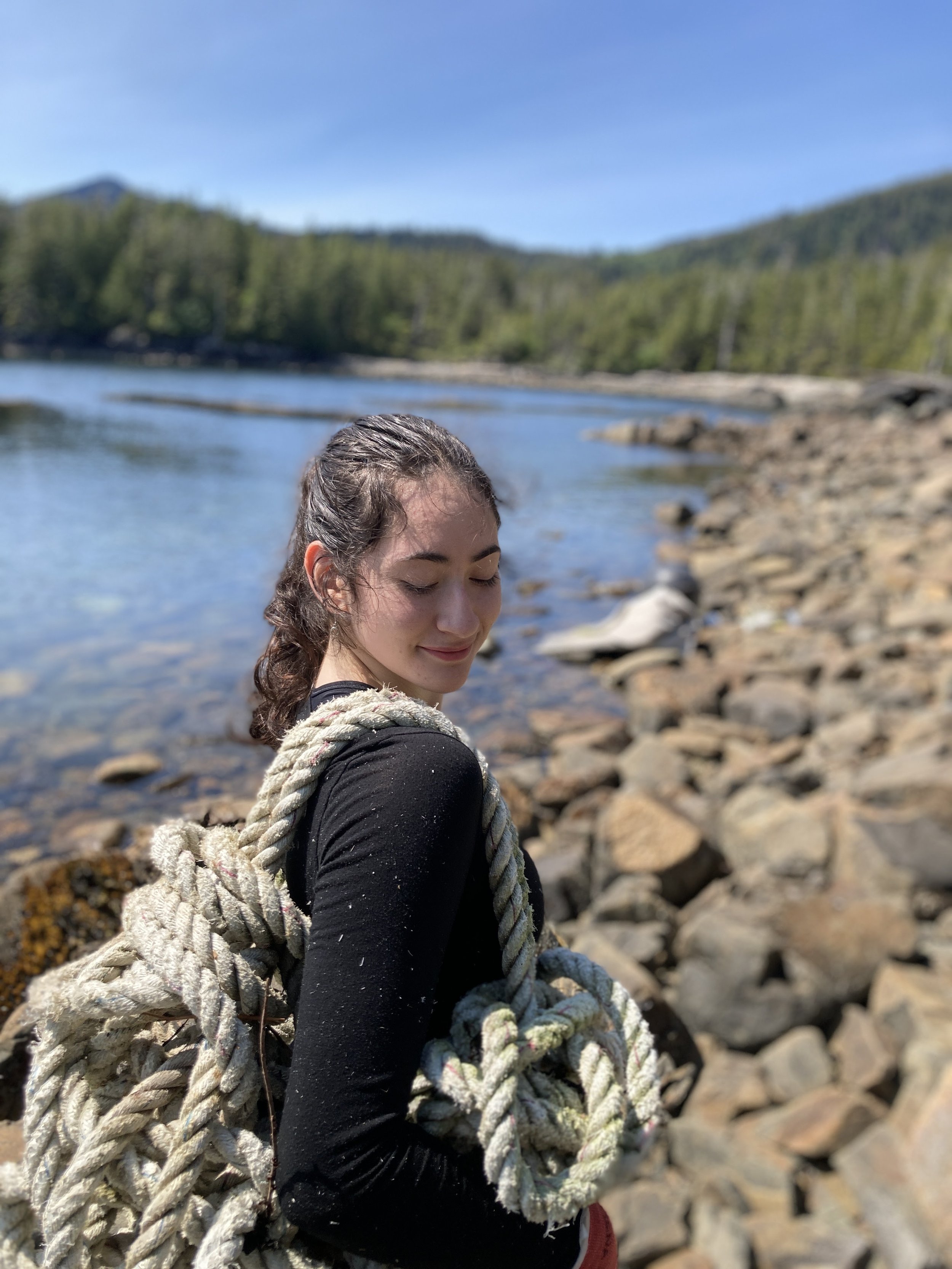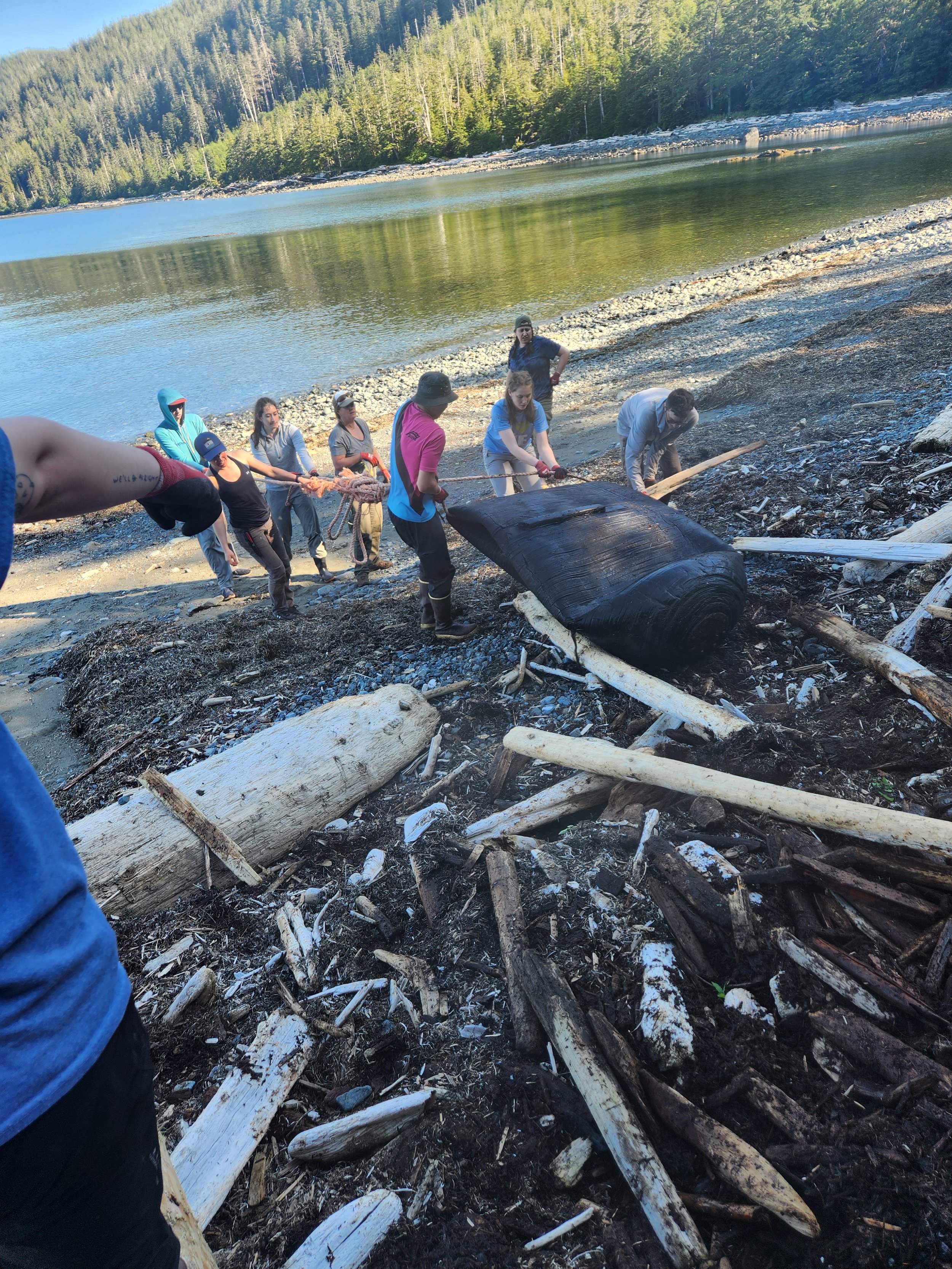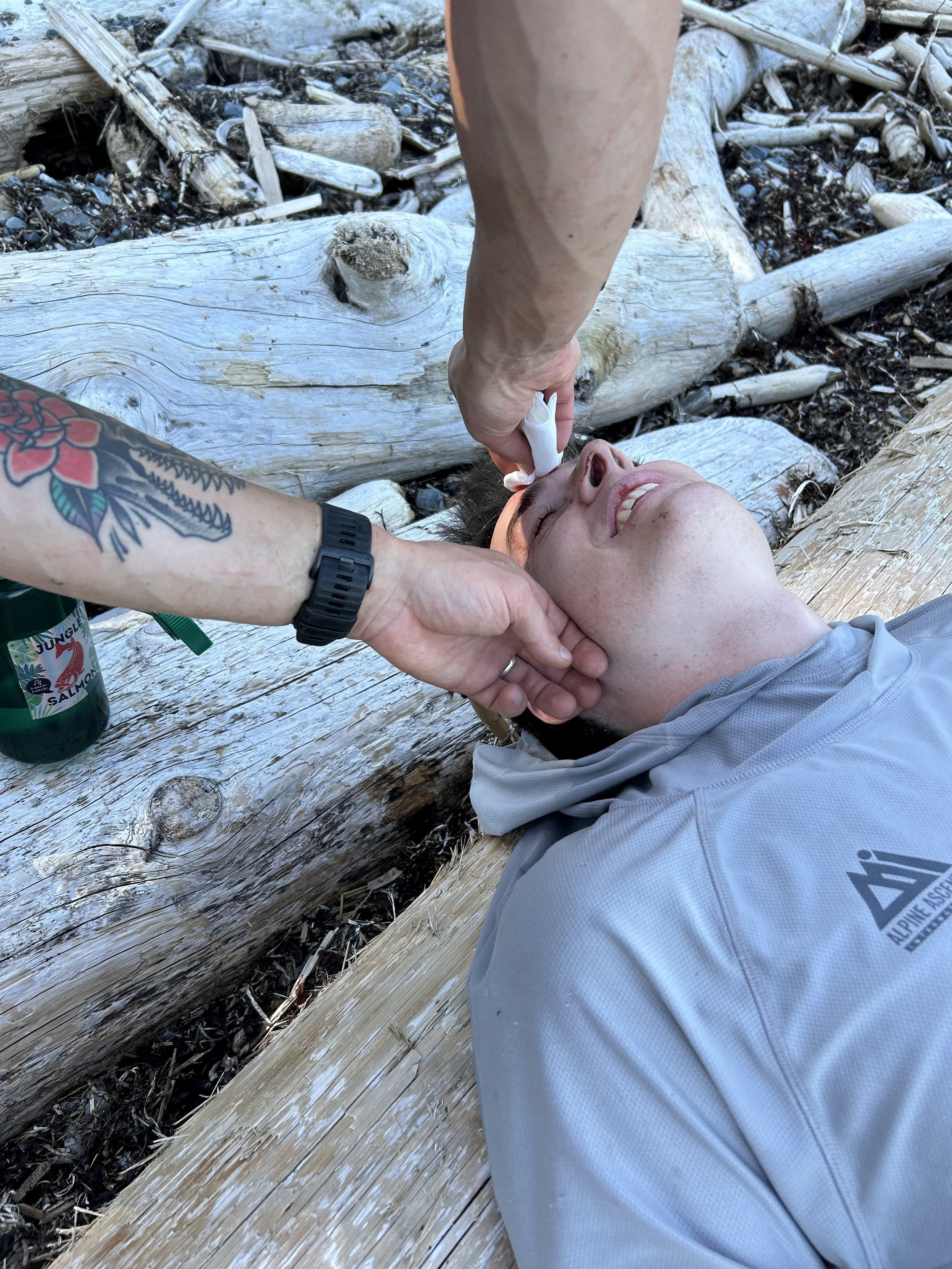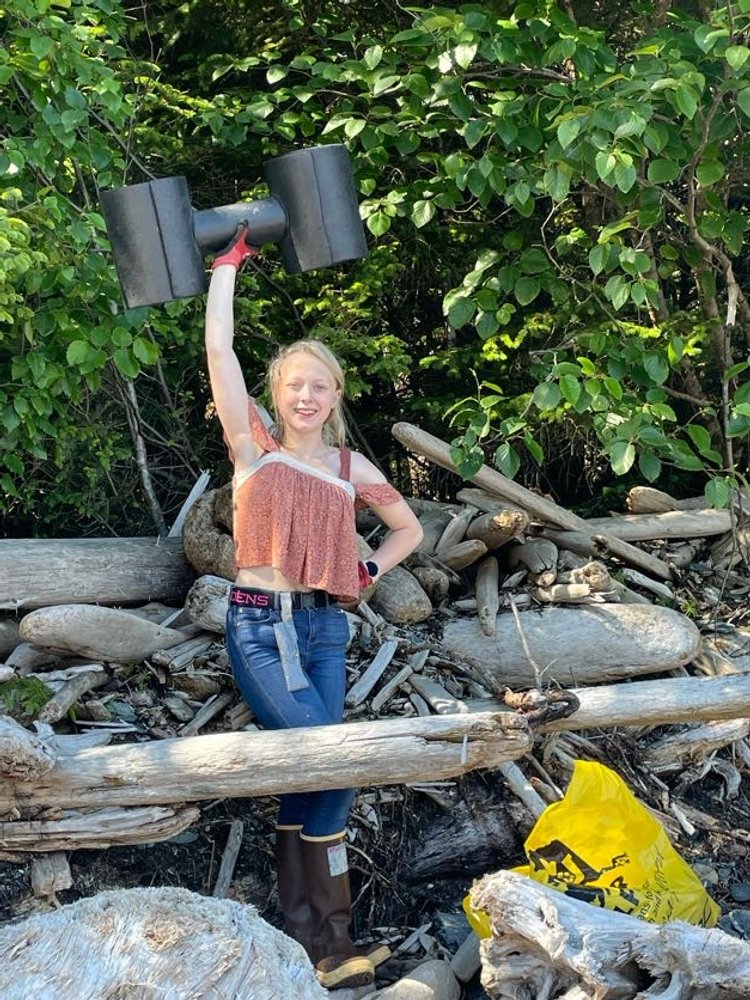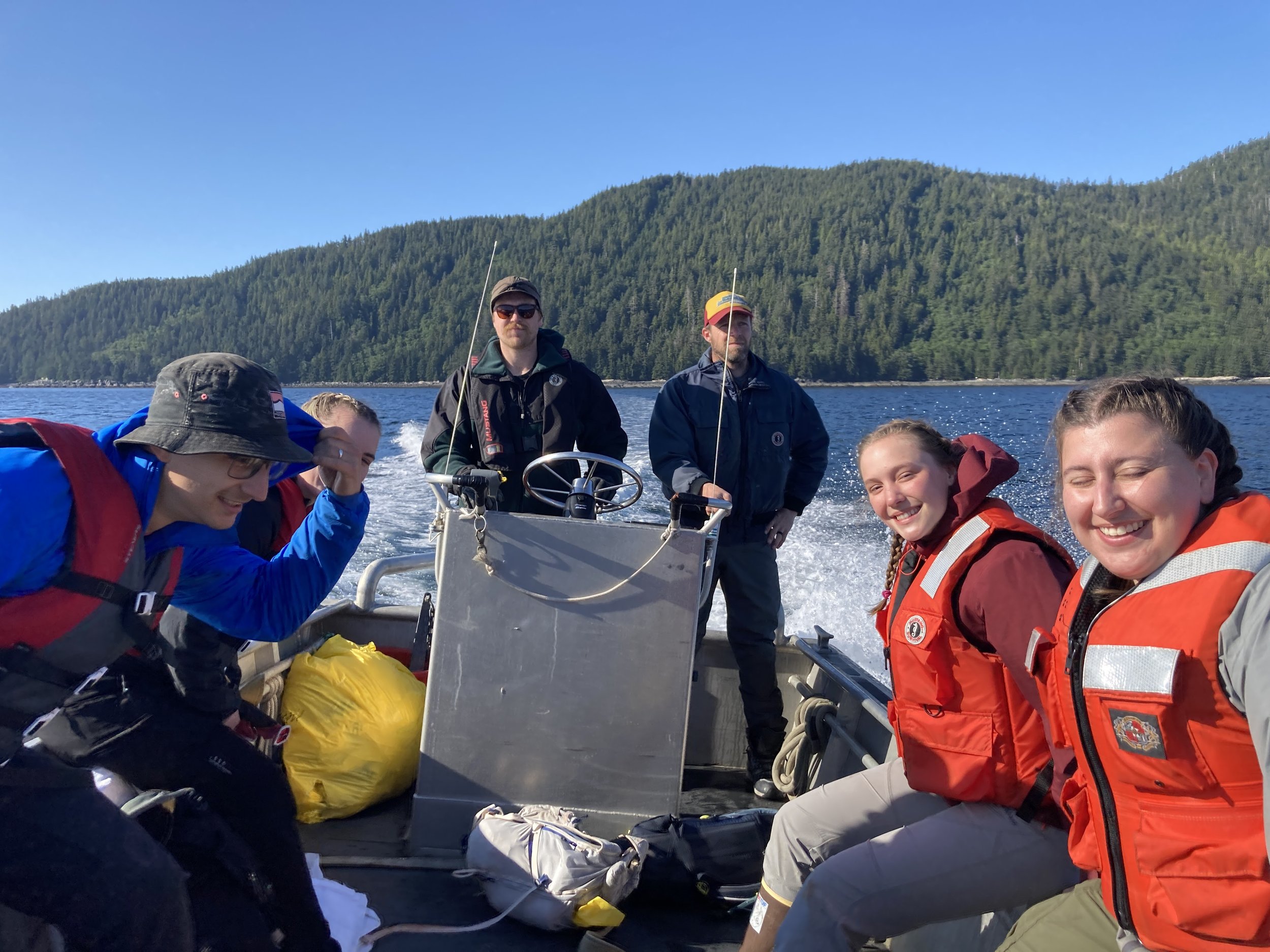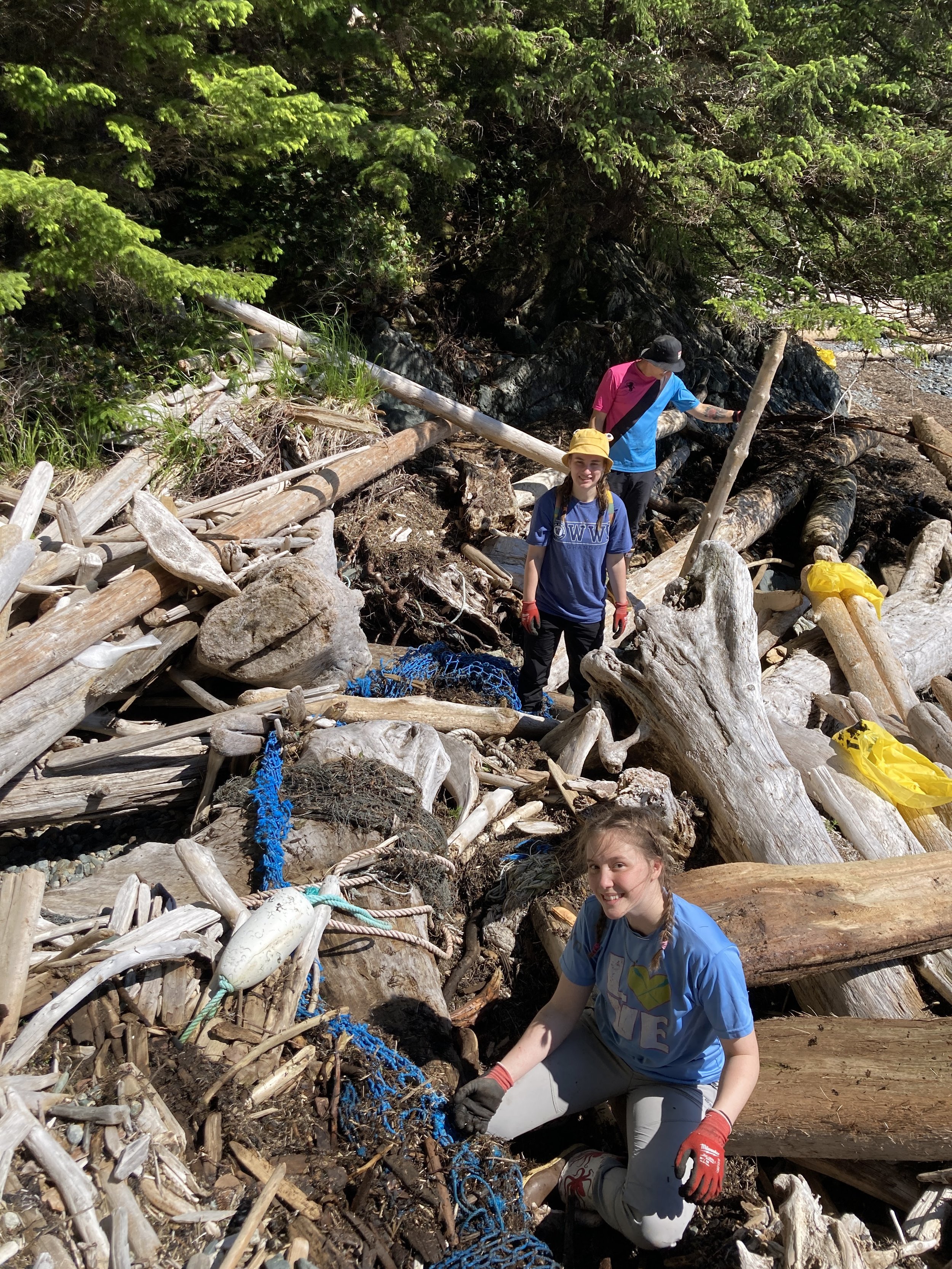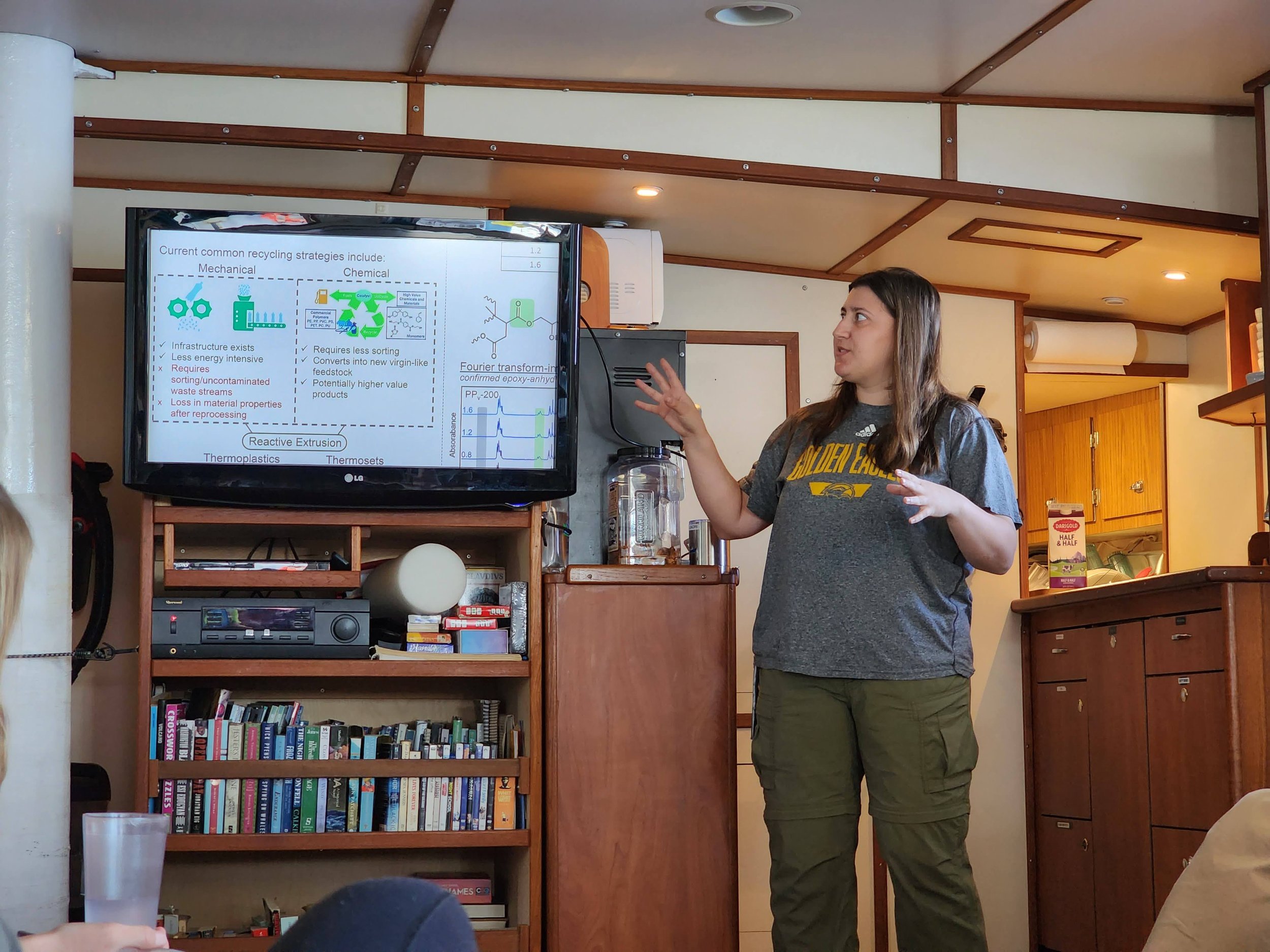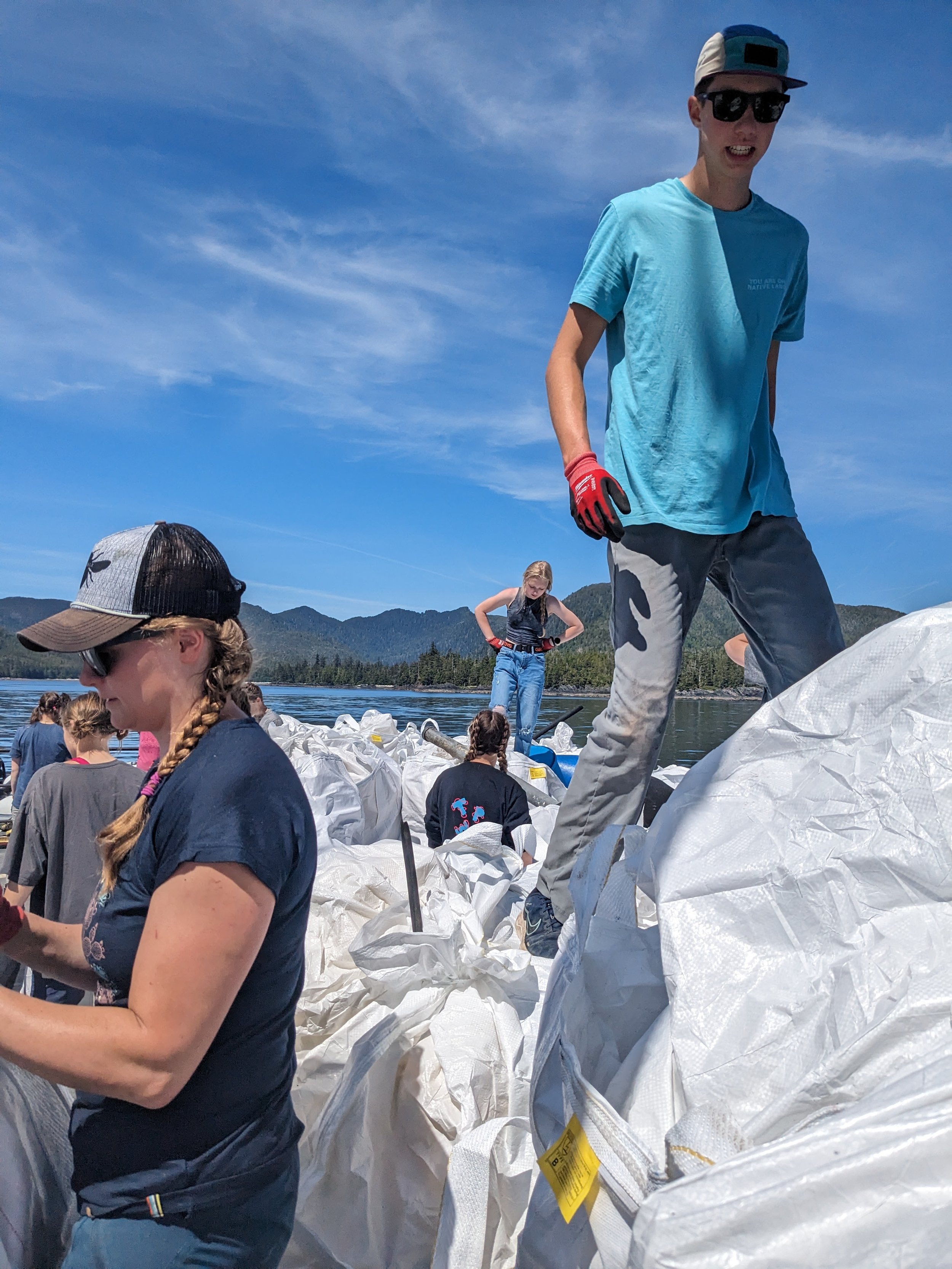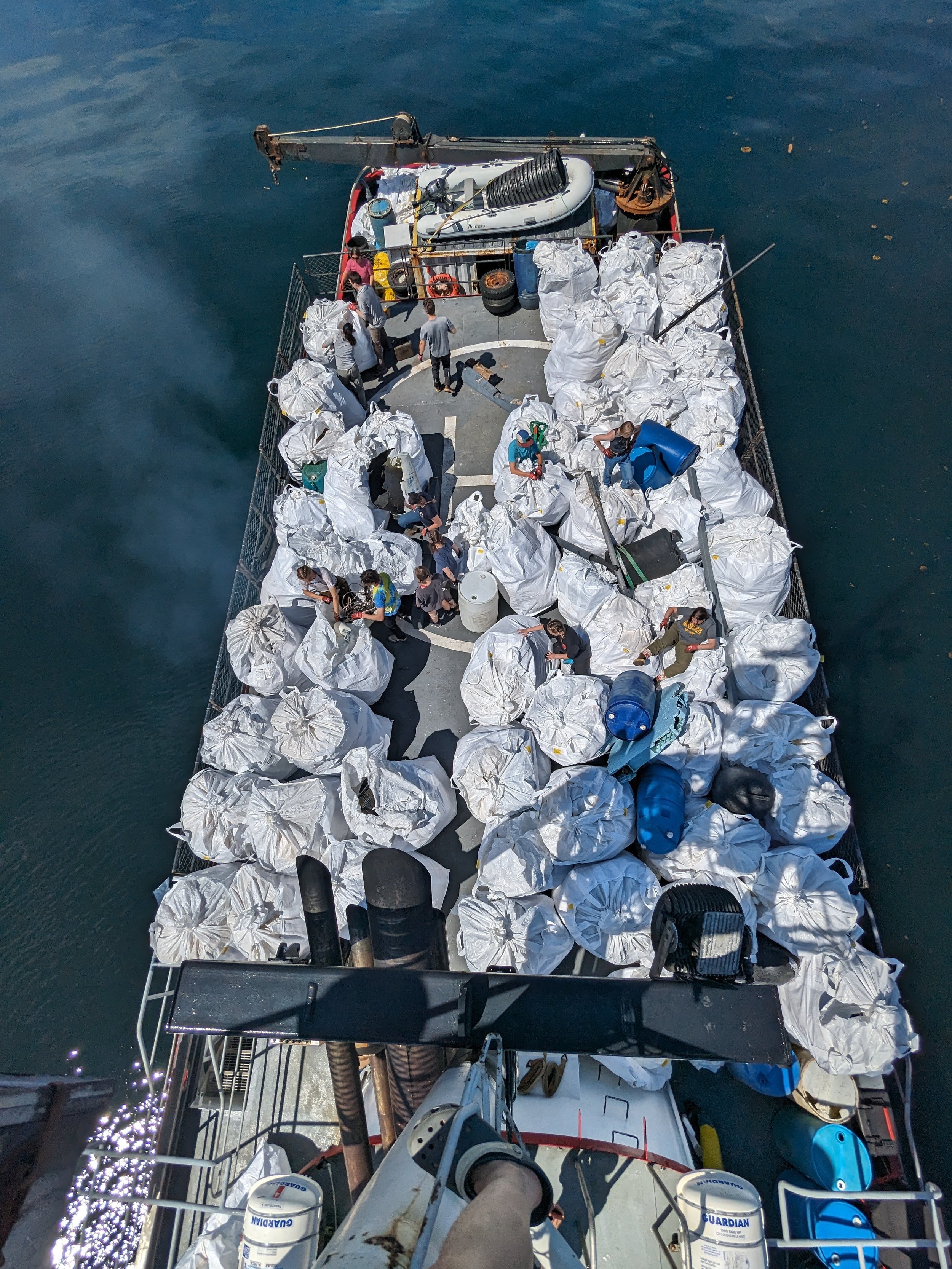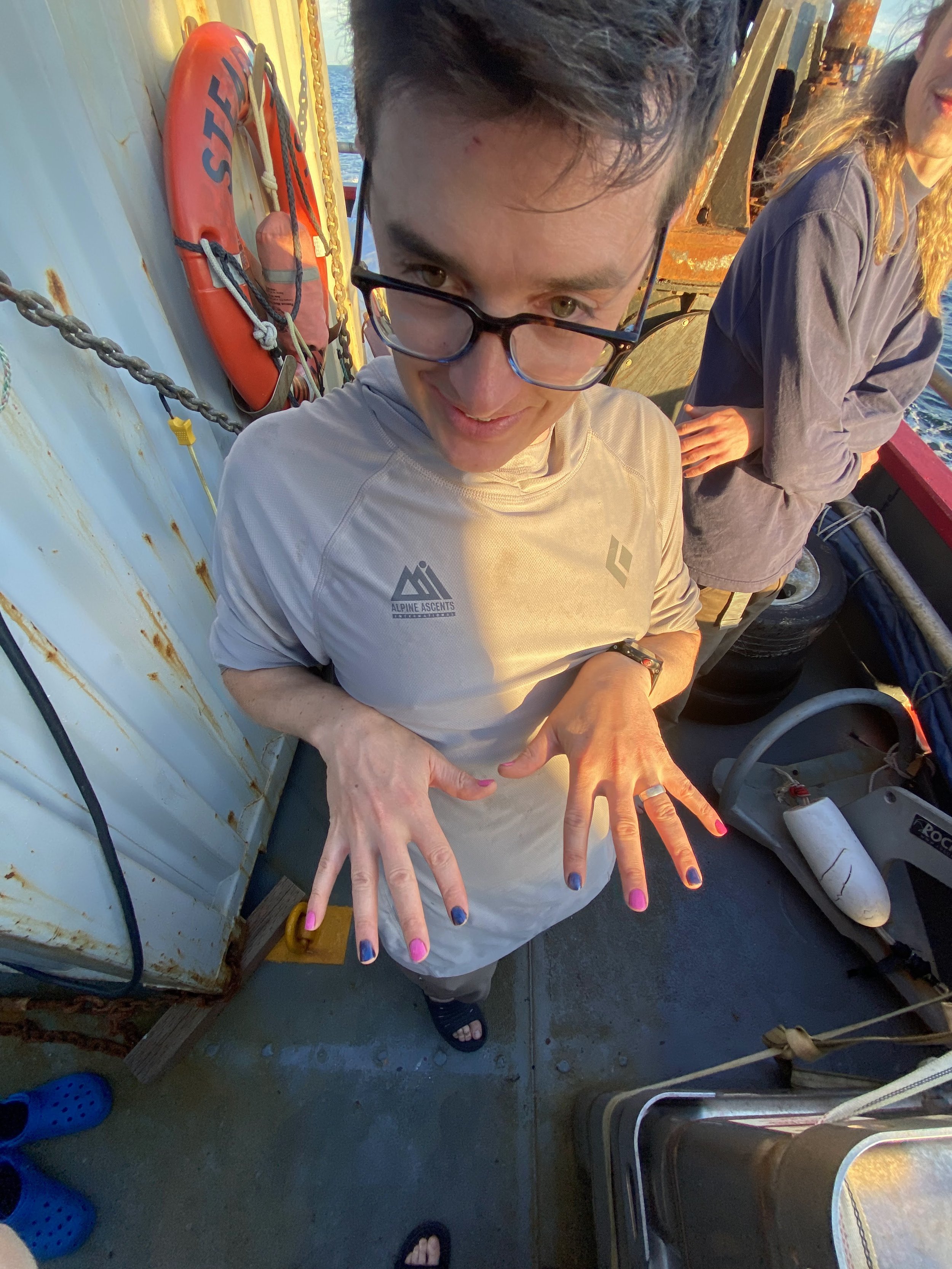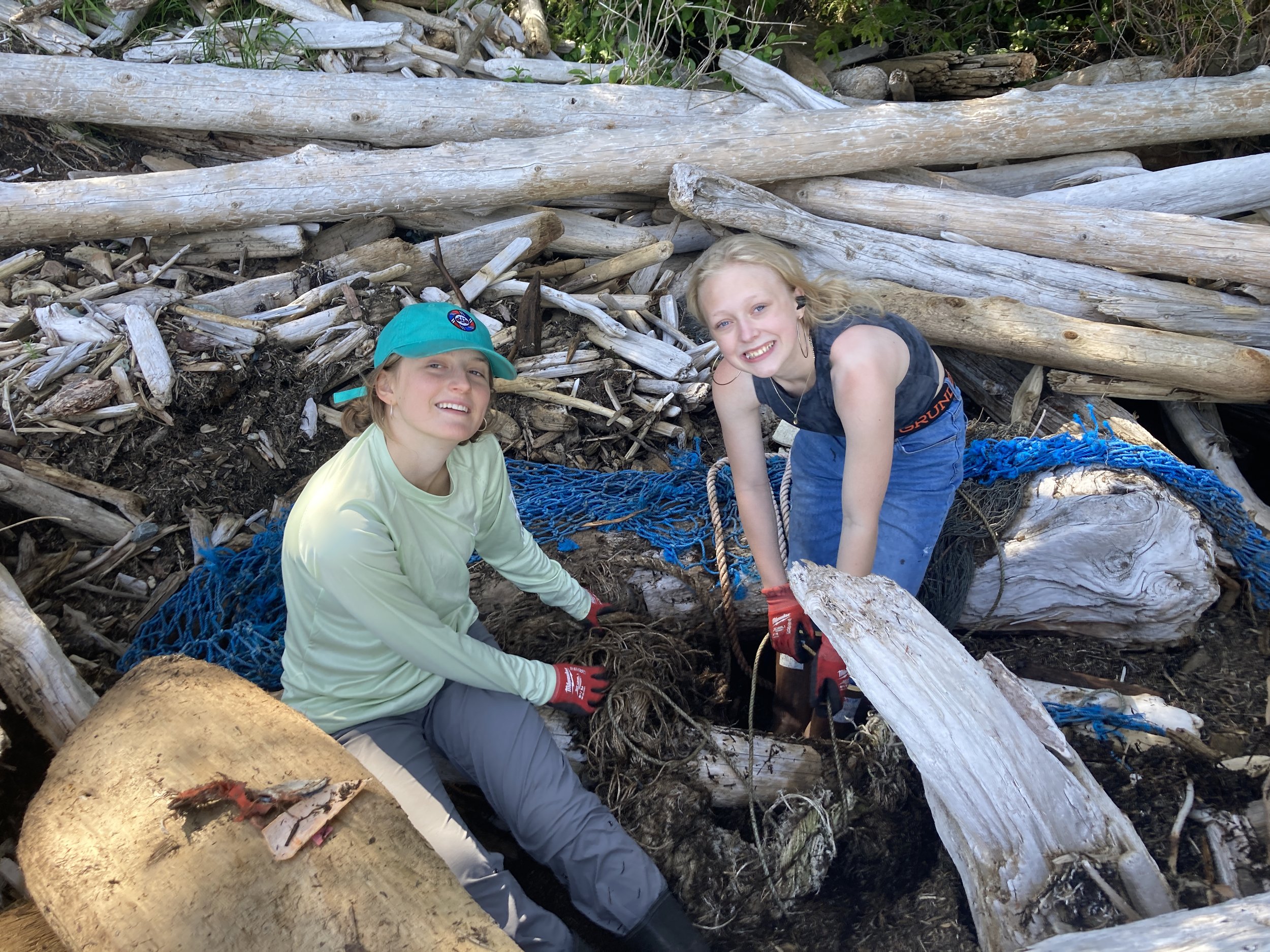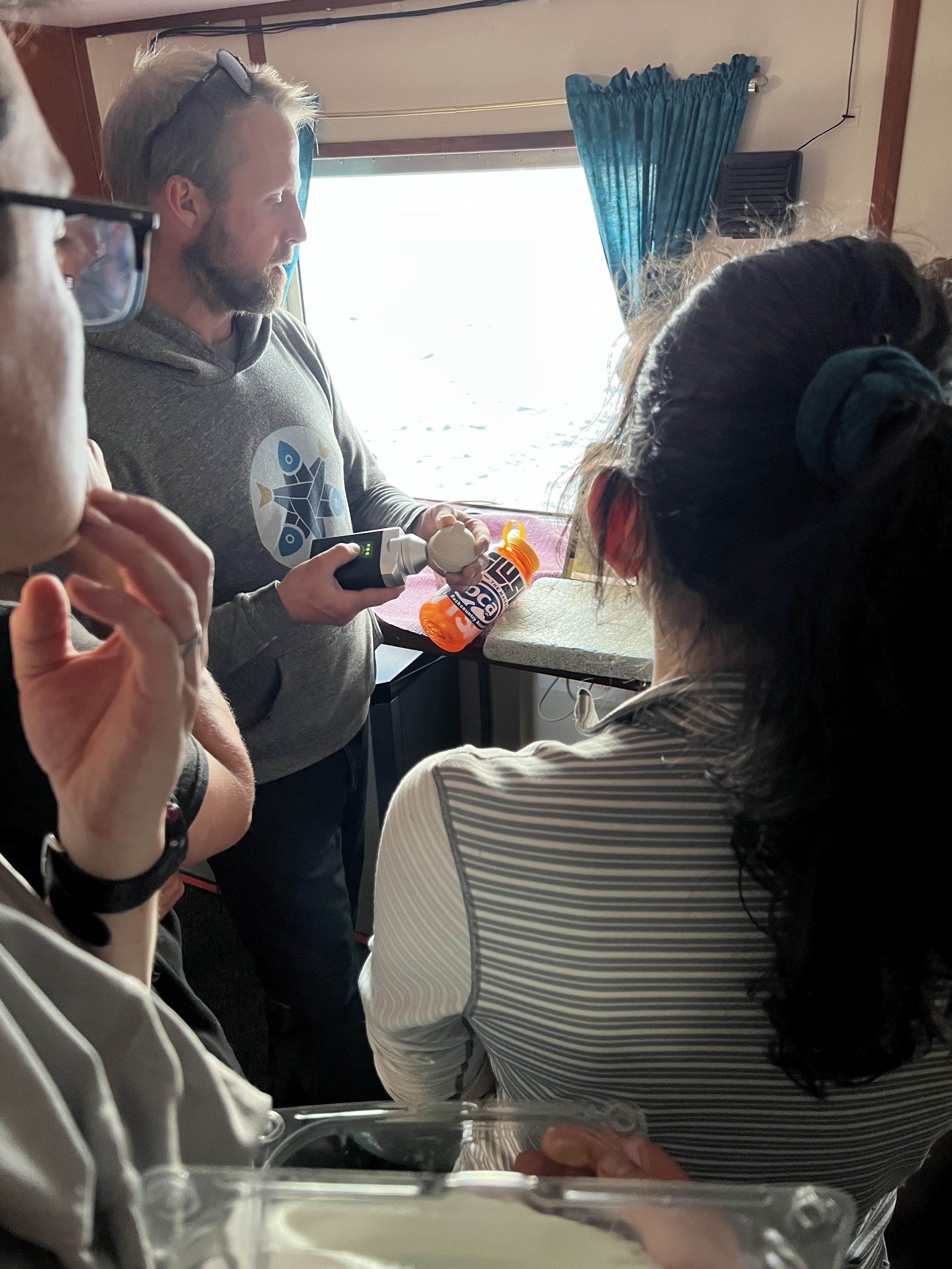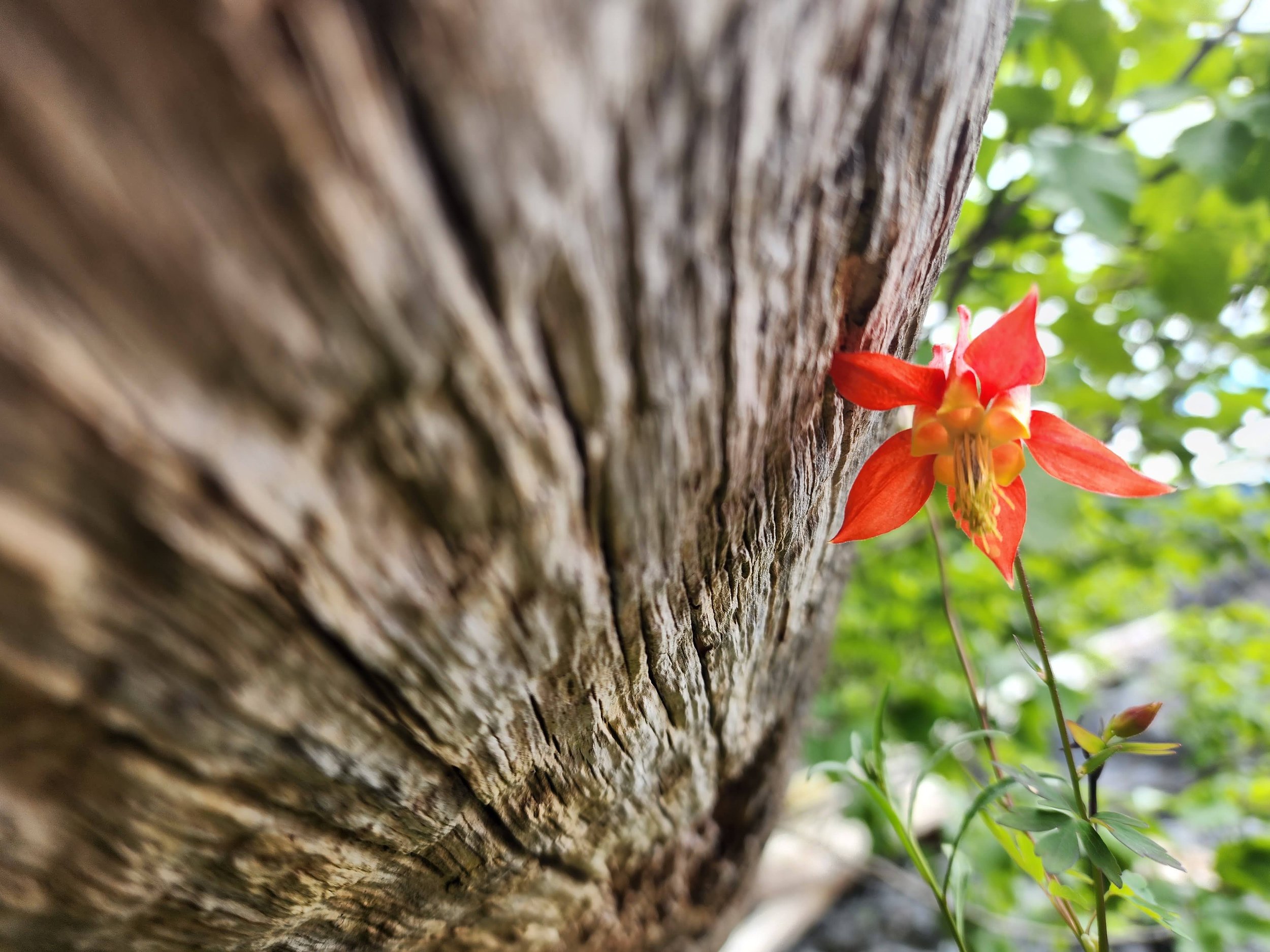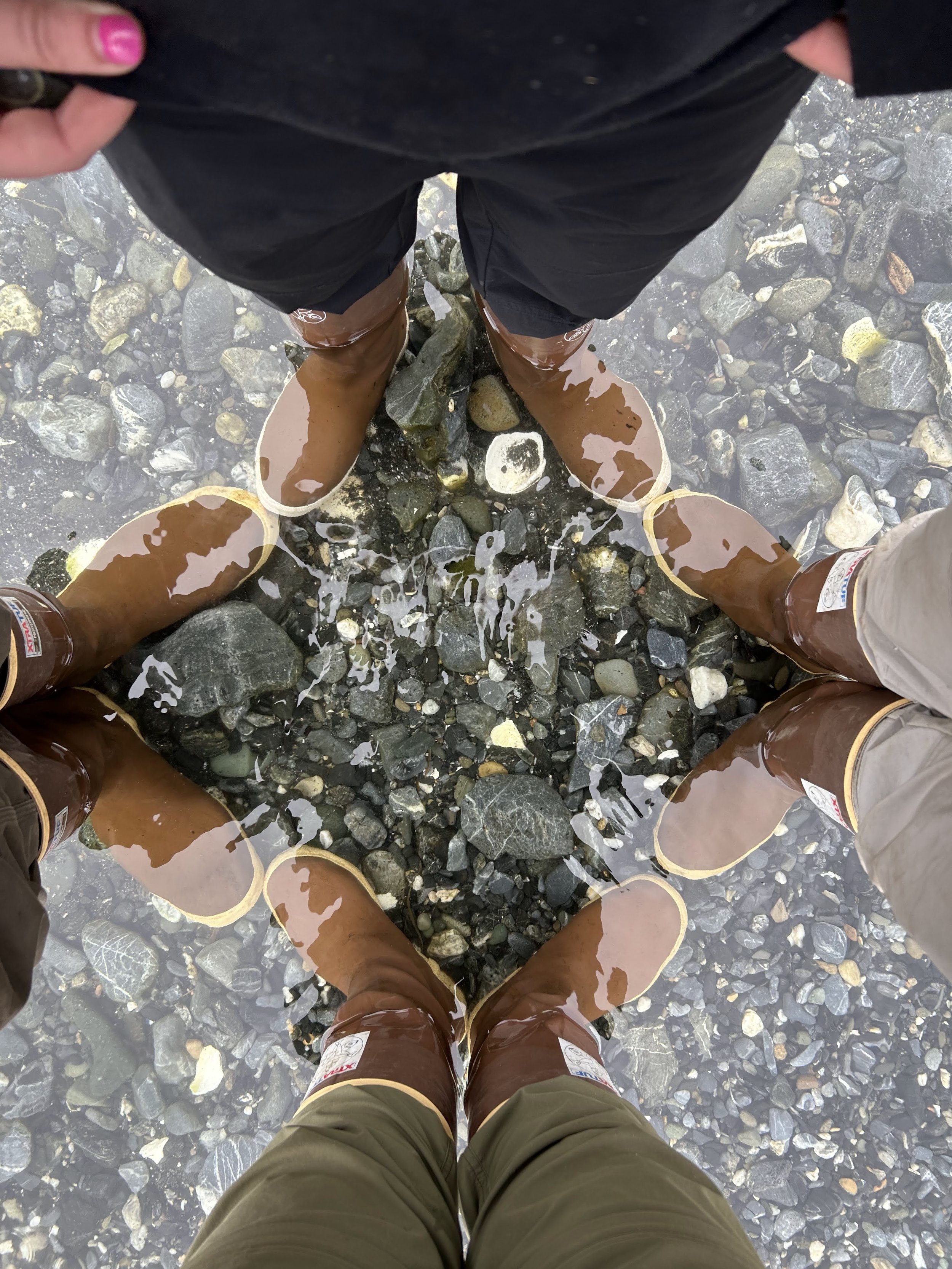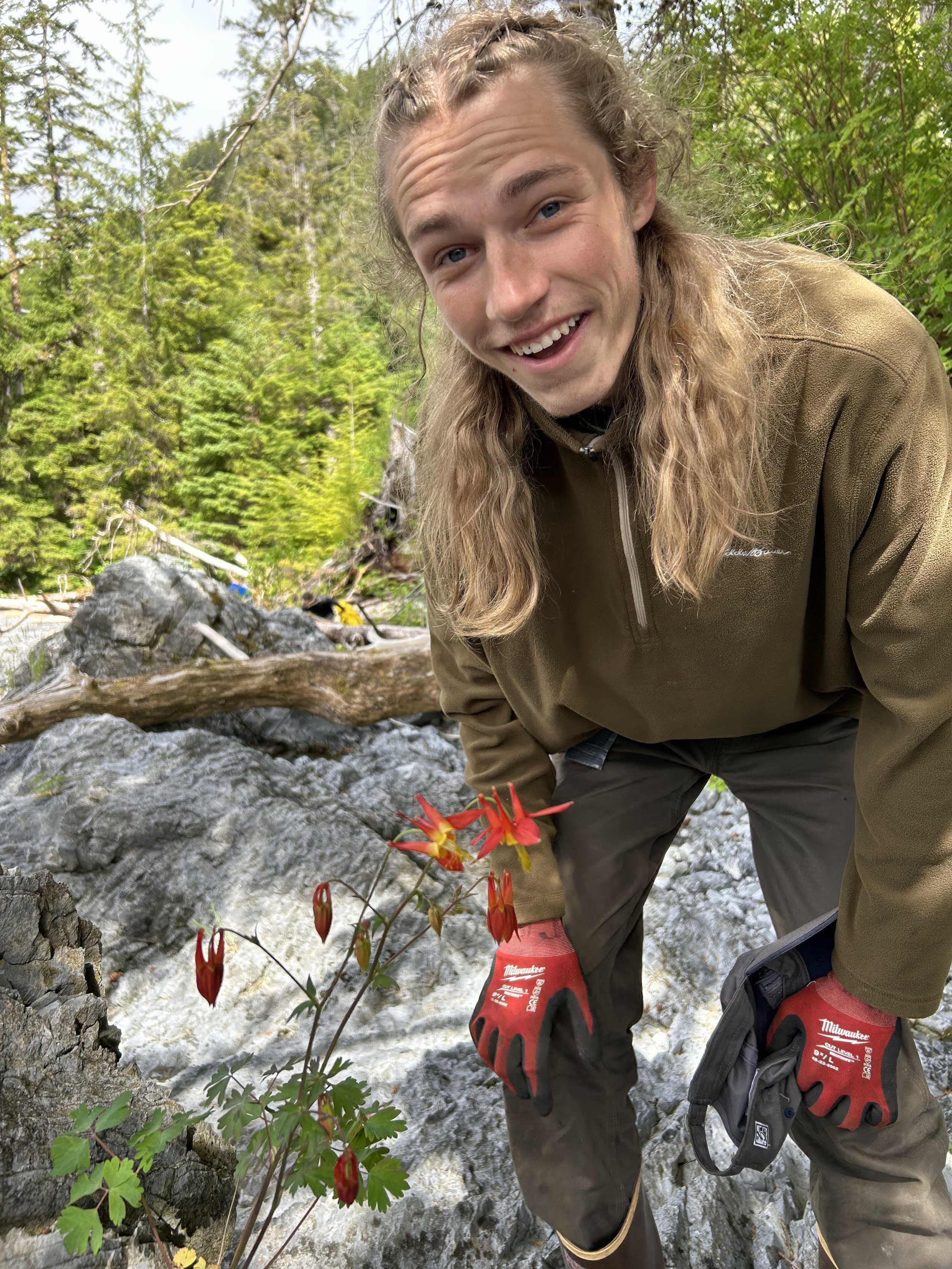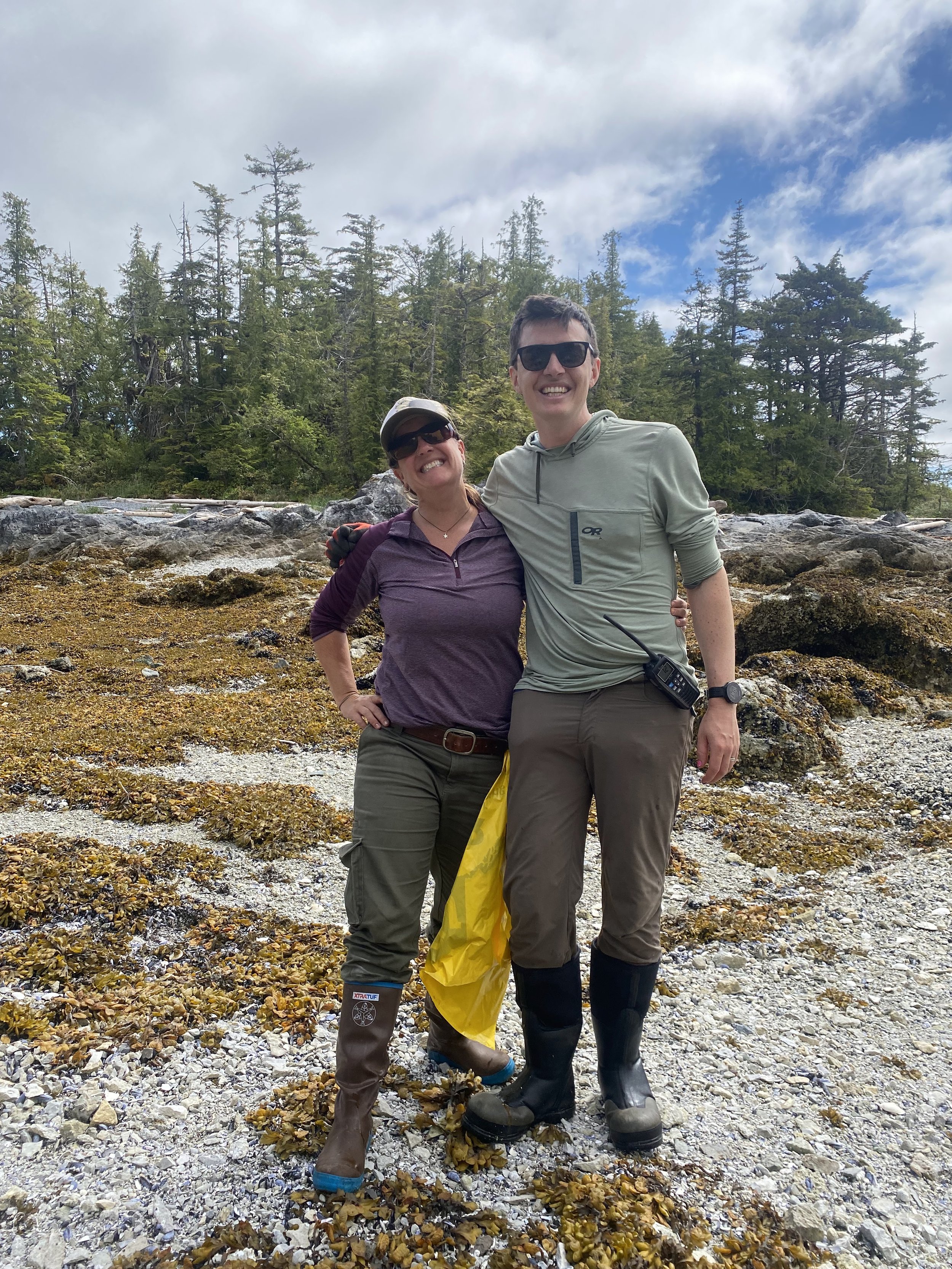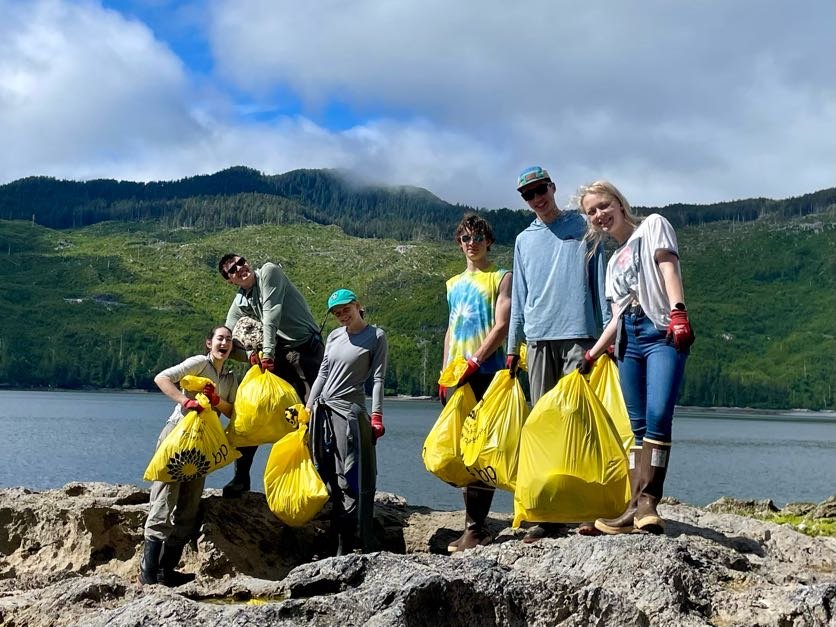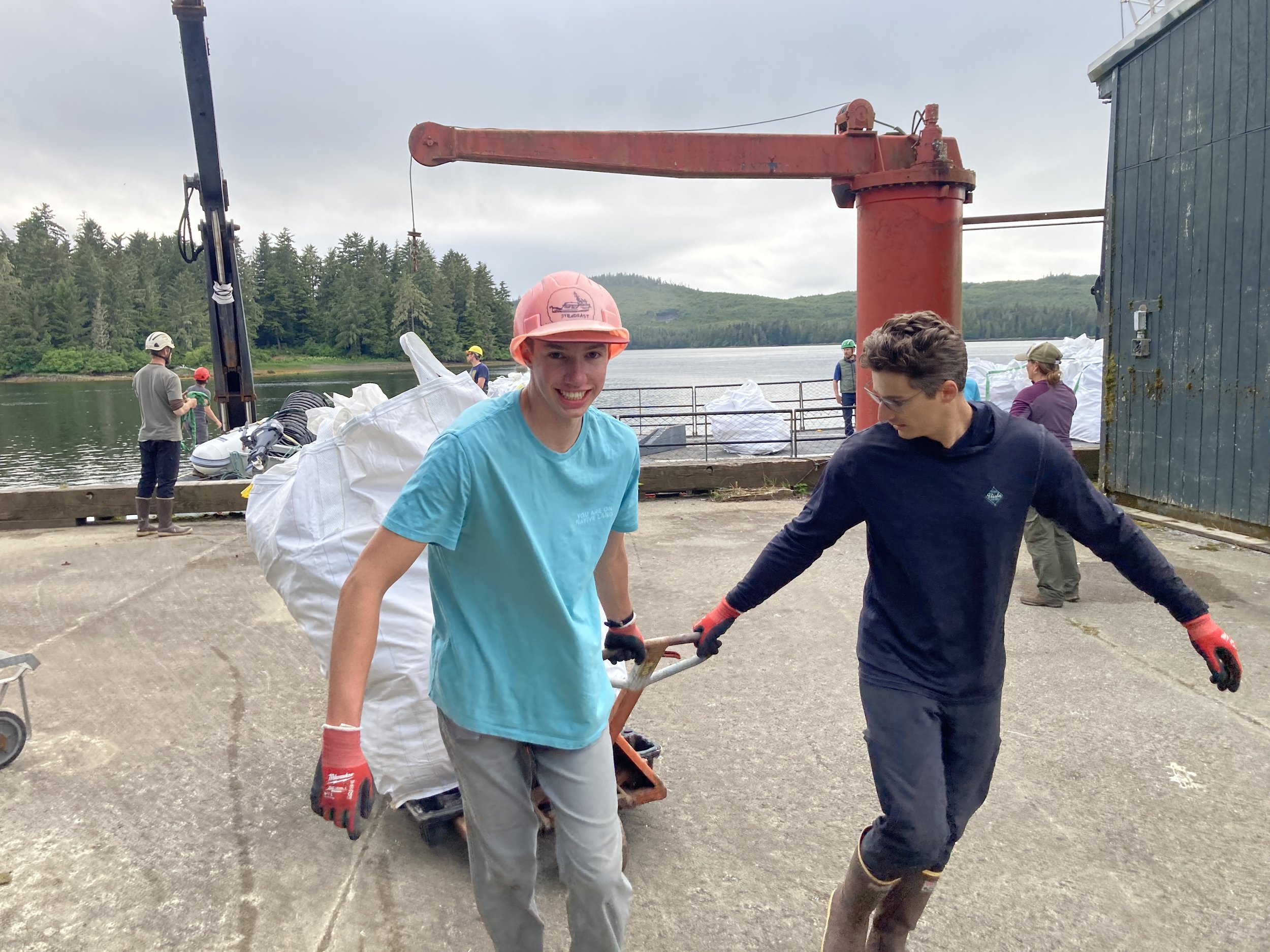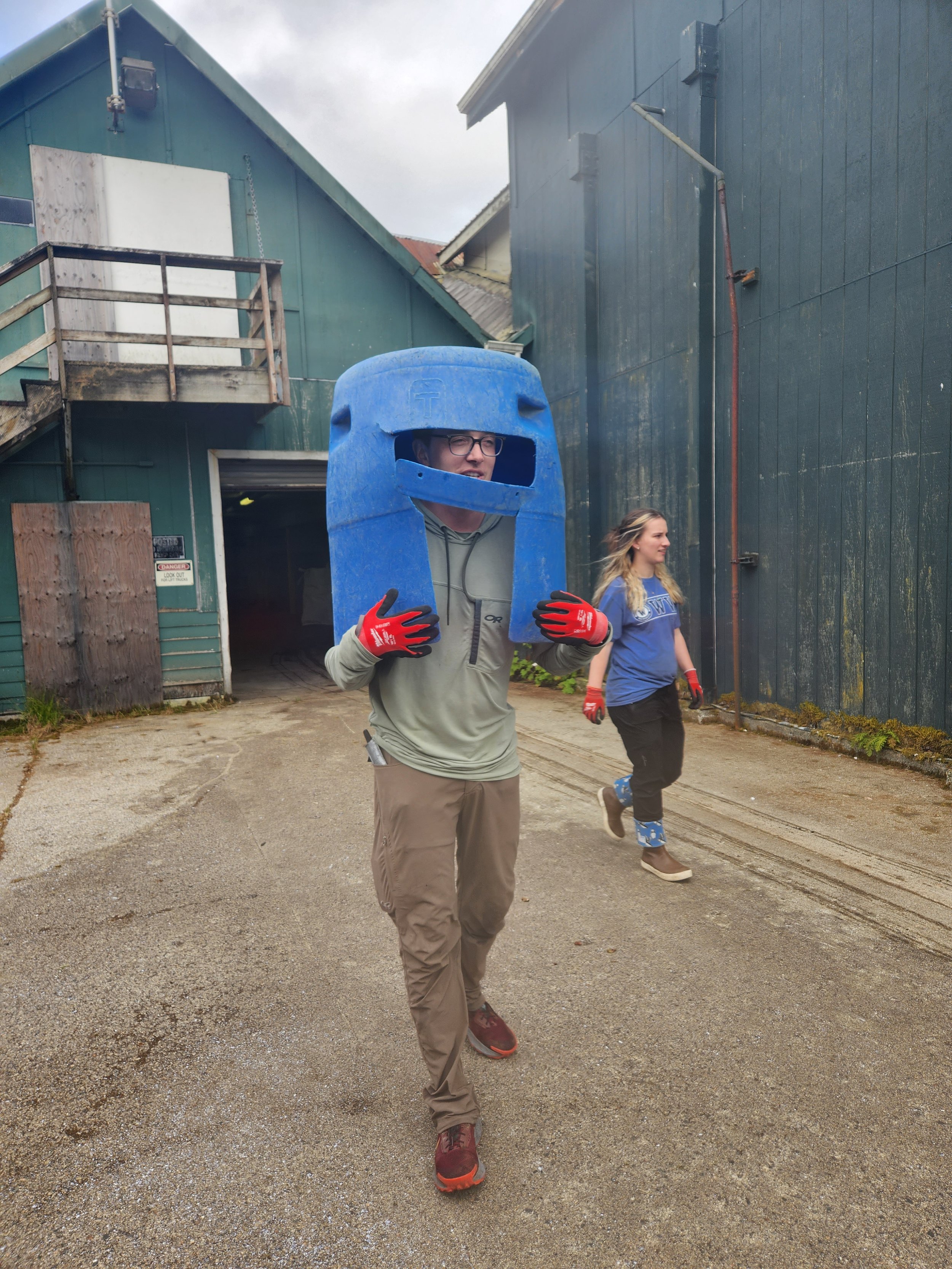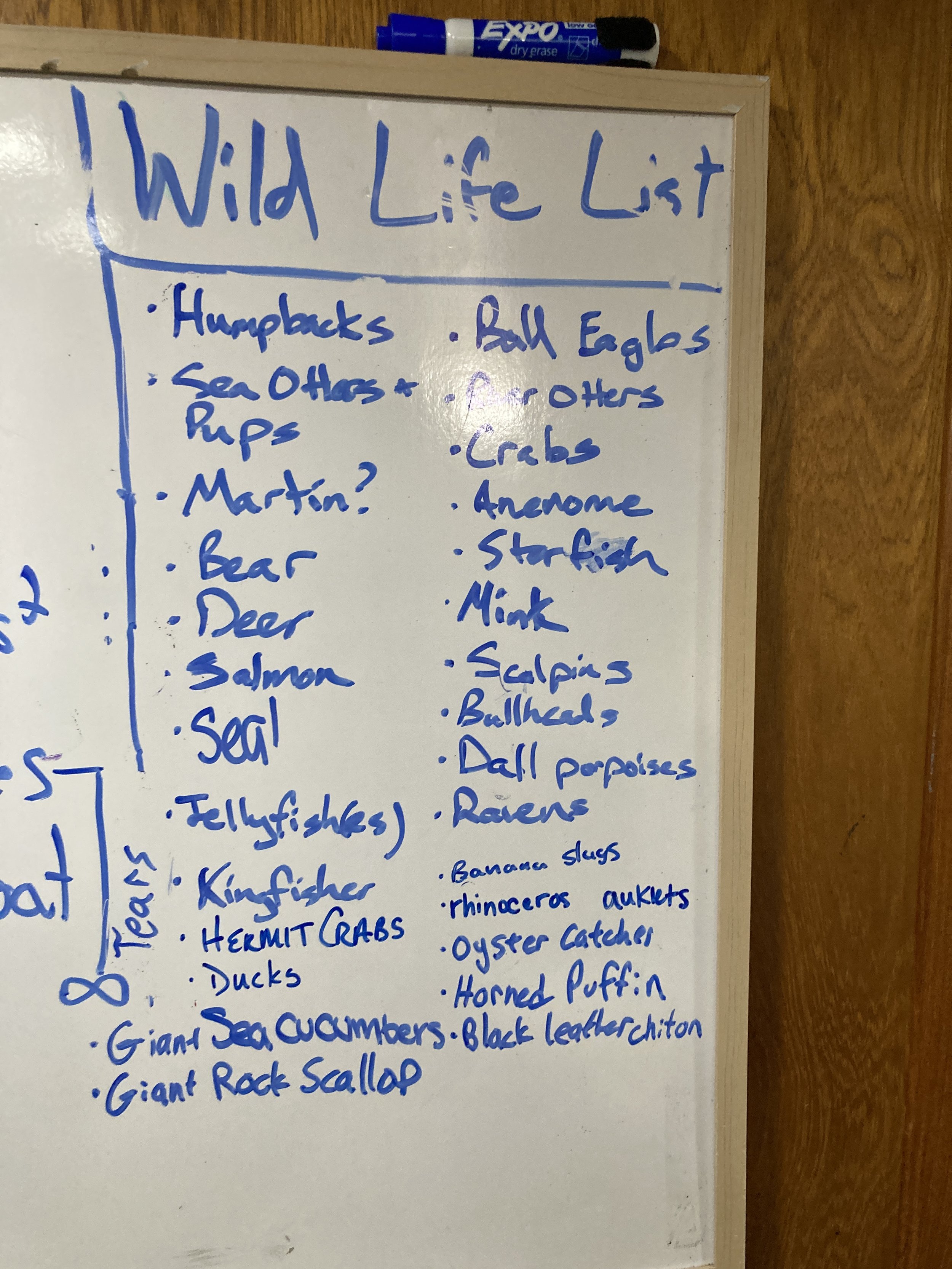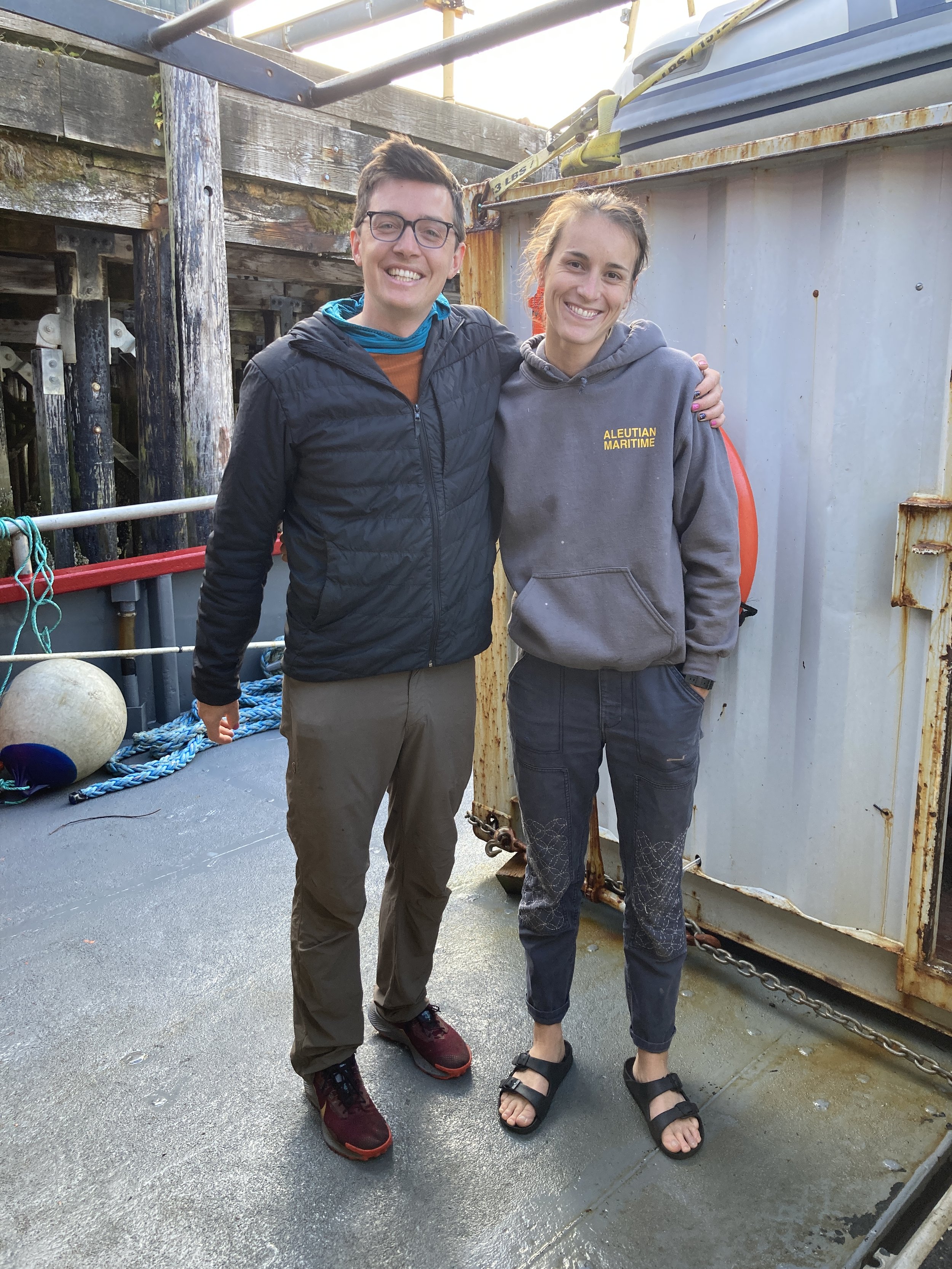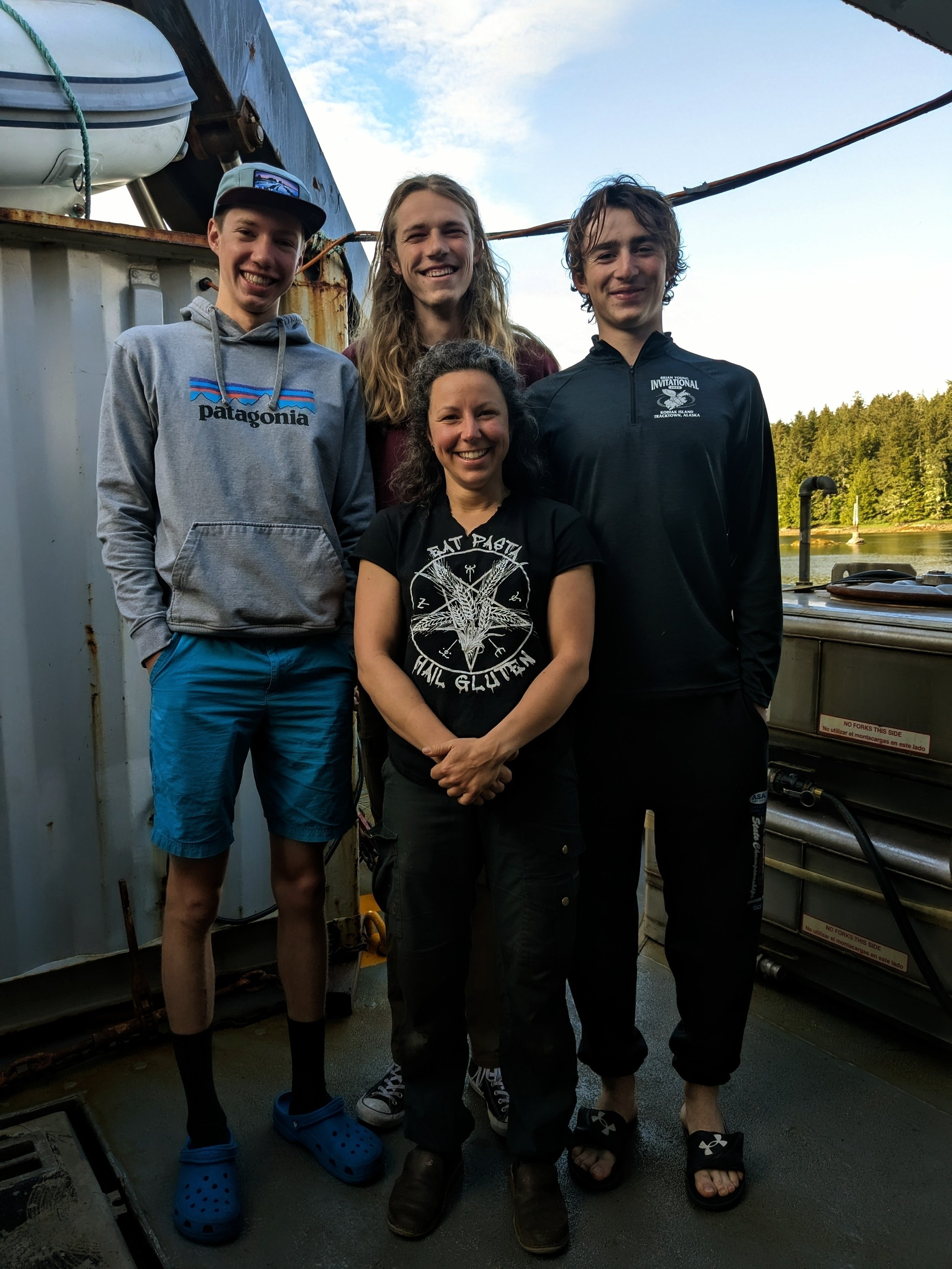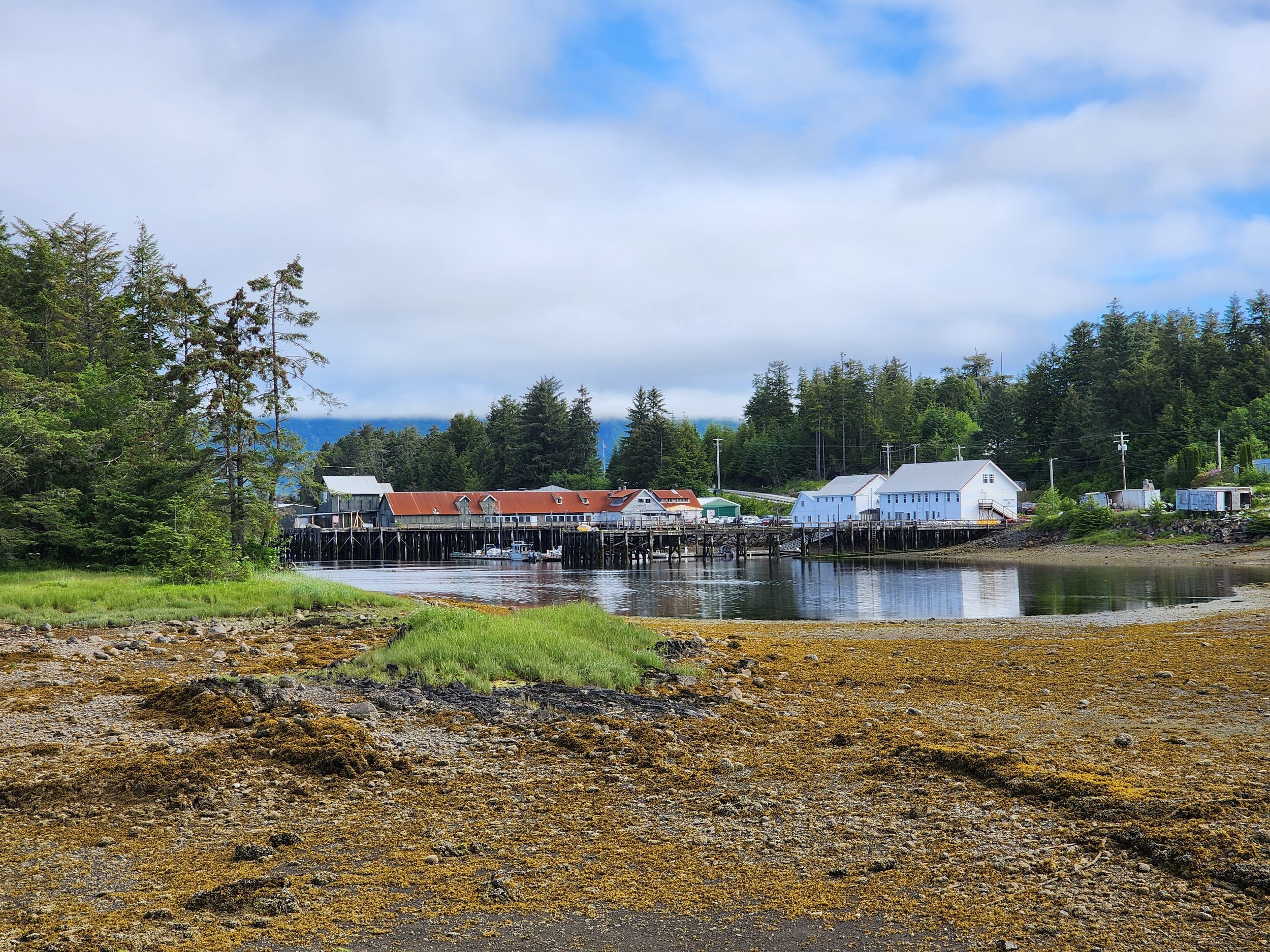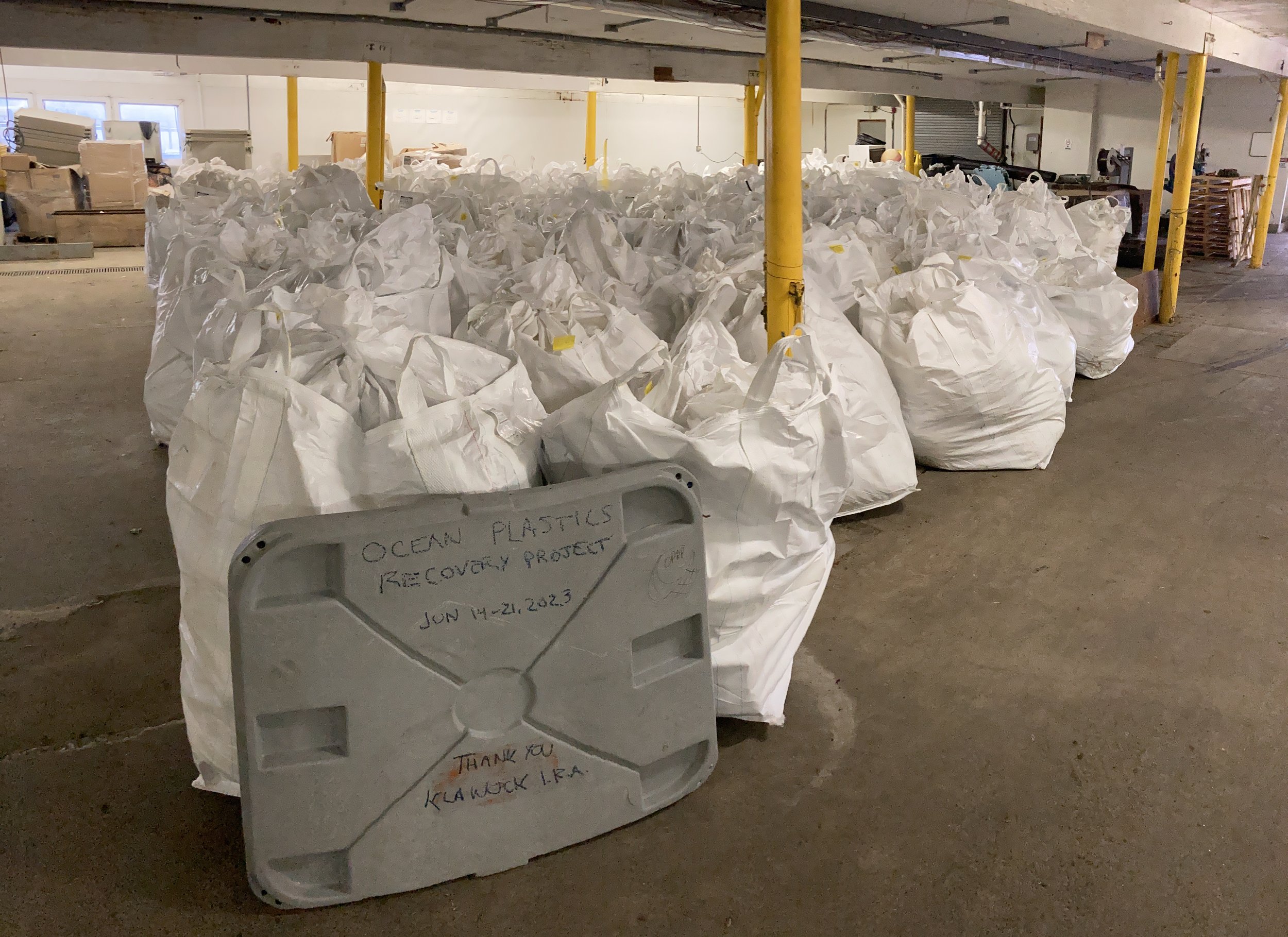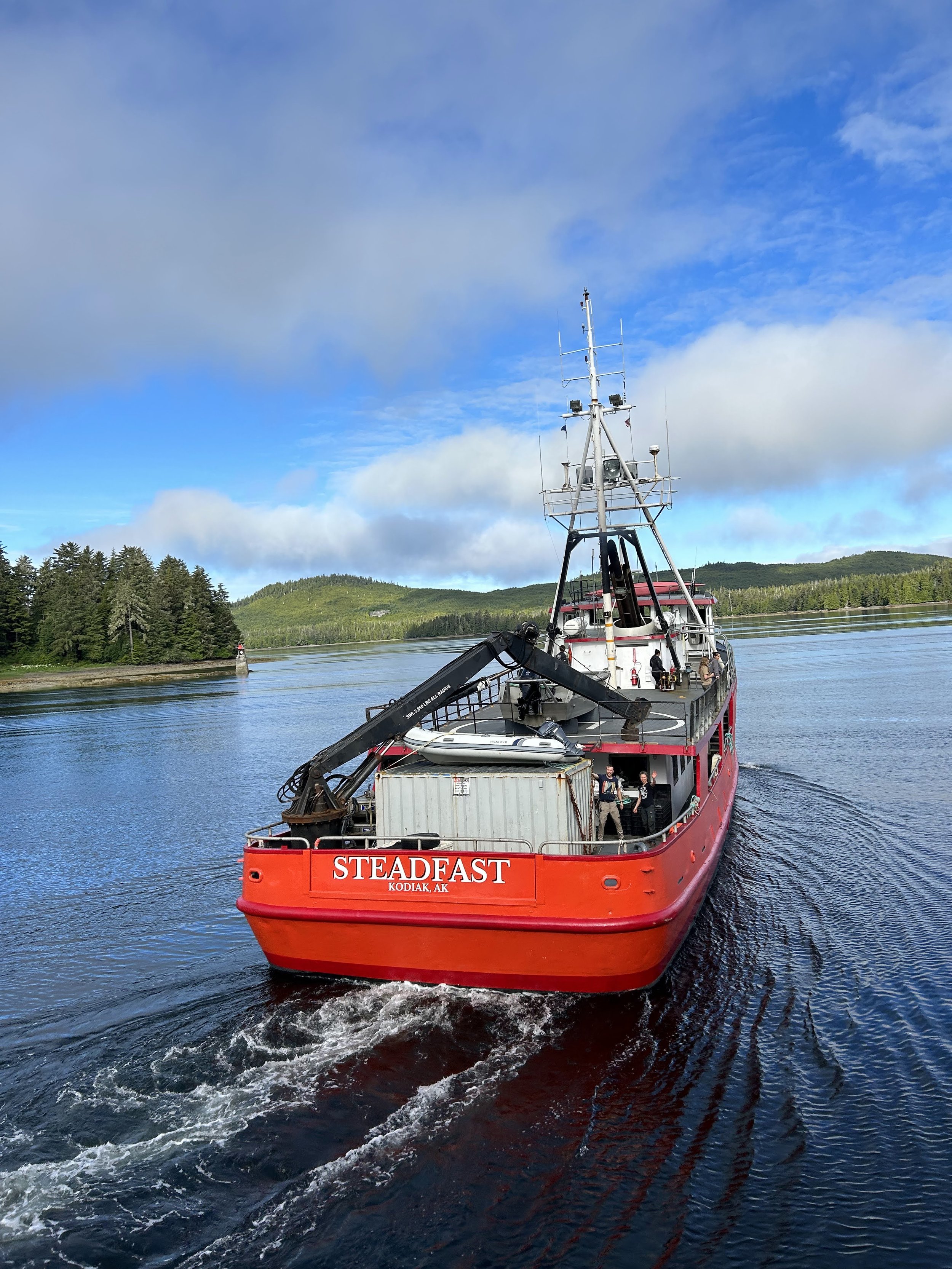Expedition One, Southeast AK
13 June
Today is the first day of the first of four Southeast Alaska expeditions over the next few years. With our chartered vessel making best speed from Juneau, our expedition teams trickled into Alaska from all over, all of them arriving from Ketchikan aboard a King Air. Once you’re in the quiet village Klawock, there was little to do but grab a snack at the Bread Box or lounge among the totem poles and take in the views. The Steadfast moored at Klawock at 1250, crew onboard including Capt. John Whittier, Mate Amalia Rowan, Engineer Spencer Martin, Assistant Engineer Kait Skundrich, Deckhand/Chef Sunny Mack-Hansen. Crew leaders were also hired by Steadfast for this trip, and include Neil Baunsgard, Jackie Wilson, and Jasmin Martin. OPR Co-Founders Scott Farling and Andy Schroeder embarked next, followed by volunteers Jayme Perman, Calvin Graff, Meghan Gillespy, Mikaela Sadri, Elias Litzow, Ximena Pelayo, Isobel McDonald, Kori Page, and Carol Fletcher. All crews and volunteers are aboard in the afternoon. Evening vessel safety orientation. Dinner onboard.14 June
After breakfast, we cast off lines and steamed south, with marine debris orientation and immersion suit training for all onboard. This training was critical, but the landscapes and wildlife outside the windows proved impossible to ignore. The Sealaska patrol boat came alongside near Craig, waving and wishing us luck. After transiting the Tlevak Narrows we had entered our cleanup area, and our first destination, North Bay. Crews made landfall 1630 first day, returning 2000 with 3 ½ super sacks filled. Today was all about a dry run, learning the ropes, and each other.15 June
After a hot breakfast at 0700, the crews are away by 0800. Heavy weather increased throughout the morning, gusting 30 knots as forecasted. Back onboard to dry out at lunch, Dr. John Misasi presented “Introduction to Plastics” at 1245. Crews returned to the beach at approximately 1400, winds gusting 40-50 knots with williwaws in the afternoon. North Bay had good protection from these elements but it was impassable outside the bay. Four-foot seas marched down the channel. True to the Coast Pilot, this bay is characterized by swirling winds, katabatic gusts (williwaws) from multiple directions, causing water spouts to occur in the bay. South shore of the bay had more nets and lines, entanglements. Jackie reported more plastic film than she ever saw in Katmai, and fewer trawl floats (this no surprise, since trawling is mostly banned here). Elias found a glass ball from Japan, a lifetime achievement these days. 1630 Schroeder canceled operations due to high winds, all teams recovered, soggy but in good spirits. All crews aboard by 1730, additional effort required to lash down supersacks to avoid wind loss. Winds calmed by 2100.. 16 JuneCalm in the morning, but winds increased to 20 by mid-morning. Rain heavy at times. Crews toiled at the head of the bay, both arms in the morning. Afternoon crews moved to “doll island” and other beaches in closer to the channel. A very productive day that finished on a high note. Transited in the evening to Farallon. All the training and safety orientations are still fresh in our minds as the crews hit their stride. The mechanism for injury here are slips, trips and falls, particularly when working in the wrack line. After that, the next most common injury is strain or fatigue from lifting or dragging bags. And of course wherever there is sport to be played, there are sports injuries (see soccer game, June 19). But injuries out here are no laughing matter. We are hours or even days from emergency medical services, and a serious injury may require a Coast Guard medical evacuation, hoisting the patient by helicopter.The wildlife here is wild, but not particularly dangerous. We give black bears a wide berth, and there are no brown bears here.17 June
0800 crews ashore at Farallon Bay. Heavily impacted beach, notable increase in microplastics compared to North Bay. All crews on the same stretch of beach, with nine super sacks filled in the morning alone. Calvin presentation on Ocean-recovered PET bottle analysis. Steadfast relocated to Breezy Bay in the afternoon. The head of this bay was moderately dirty, sides relatively clean. Here in the midst of logging country our rule-of-thumb about the correlation between driftwood logs and ocean plastics fell apart. This correlation is more true in Southwest Alaska, where the presence of logs strongly indicates the presence of plastics, and a beach free of driftwood will likewise have very little plastic. Here in Southeast, there are sometimes huge piles of logs in places relatively clear of marine debris.
After Breezy, our effort shifted to the western shore of Tlevak Narrows working back north toward Farallon. We got all except one beach (the northernmost) on this stretch of coast between Breezy and Farallon. Evening transit was planned to go as far as Pond Bay, but seeking a better anchorage the boat ended up going further to a place called Datzkoo Harbor.18 June
This morning we have clear skies, north winds 5-10 knots Kaigani and Datzkoo harbors this day. Datzkoo finished quickly, and started working crews north, into both arms of Kaigani, the north of which was more productive than the south, or the rocky middle island. I really didn’t investigate too deep into either arm of Kaigani. It might be worth double checking data on these. Next we started working South of Datzkoo toward McLeod, where we had immediate improvement. Lunchtime presentation by WWU student Jayme Pearman on sorting protocols she developed during OPR internship. Near the end of this day, Steadfast transitioned to McLeod in the late afternoon and received 3 live boat deliveries along the way. Dense kelp beds protect these shores from seas and swells, but make skiff passage difficult. Steadfast anchored near the mooring buoy at McLeod in a light swell. Winds breezy in the morning, then calmer toward evening. Sunny skies and warm temps, with warm breezes occurring from land. One humpback whale feeding in shallows and kelp beds. Steadfast anchored at 1930.
19 June
Breezy in early morning, with winds abating midday. This was our hottest day yet. Lodge-based fishing boats apparently jigging in McLeod Bay before departing to deeper waters of outer Cordova Bay. There is apparently a big school of herring under us in McLeod. Rafts of Scoters, lots of Rhino Auklets, some murres but fewer of them than in the bays closer to Tlevak. We worked rocky beaches N. of McLeod in the morning on rising tide except Jackie’s team, who worked south side of McLeod halfway in and encountered a fresh black bear carcass, then asked for relocation. Other crews worked among kelp-strewn shorelines between Datzkoo and McLeod to connect with yesterday’s effort originating from Datzkoo. Most supe rsacks were left on the beach during lunch while the tide rose. It can be a misery to drag bags down to the water line on a minus tide, so if you’ve got a rising tide later in the workday, we sometimes wait to remove bags until the water comes up. In the afternoon, all crews joined up at the same beach at the head of McLeod, and Steadfast crew plus Scott recovered that morning’s bags as the tide reached maximum height at 2 pm. But there were still bags on the beach, so we did a late evening recovery from that beach with 7 super sacks plus one Yokohama fender. Evening soccer/ultimate frisbee game on beach. Black bear wandered onto the field before the last athletes were picked up, Kait Skundrich in charge. Longest, hardest and best day of the trip.20 June
0800 Breakfast to let crews recover. 0900 team leader meeting to determine day’s schedule. 0930 Presentation by Mikaela Sadri (Southern Miss) on improvements to recycled PP using cross-linkers. 1030 Team building exercise from Jackie Mueller. 1100 Invasive Green Crab presentation by Carol Fletcher, Organized Village of Kasaan. 1130 All hands on flight deck, consolidating bags. Added approximately 10 supersacks to cache. 1200 Schroeder and Farling presentation on Alaska Center for Marine Debris. 1300 Lunch. 1400 Crews ashore. Bear on Jackie’s beach at head of bay, relocated to south side corner. Jasmine’s team on south side catcher beach, Neil’s team to a net they had to walk away from the previous day. Quite productive half-day of work. All bags craned aboard, shrimp dinner, transit to View Cove. Demonstration of TrinamiX near-infrared scanning technology for plastic identification..21 June
Crews ashore by 0800, View Cove moderately productive, with noticeablly less impact than McLeod harbor with direct access to outside waters. Sealaska vessel (Capt. Frank Peratrovich) also in the bay, working shrimp pots. Schroeder assisted at their invitation, and Steadfast was treated to 5 lbs of fresh prawns. Underway at 1230, transiting Tlevak Narrows at slack water and arriving at Klawock 1730 for immediate offload. Offload complete at 1945 with 92 super sacks, numerous plastic barrels, tires and one Yokohama fender securely stored in the KCA Cannery building. Map of forty shoreline locations on Dall Island restored during June 2023. The expedition originated and ended in Klawock, AK, visible at top of map.
22 June
This morning our teams parted ways with the beloved Steadfast and its crew, with the boat transiting toward Ketchikan to resume research work for the U.S. Forest Service.
Our team has much to be proud of. Over the course of the eight day trip we cleaned 40 individual beaches and coves along a 44-mile stretch of Dall Island. The material will be weighted later, but we've estimated the weight of materials this trip at around 18,000 lbs.
